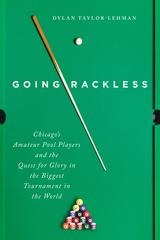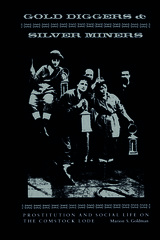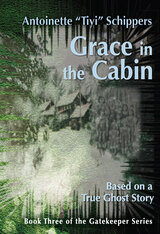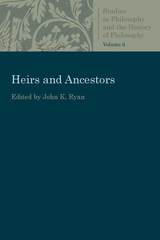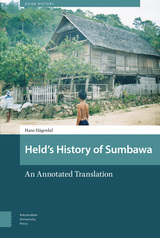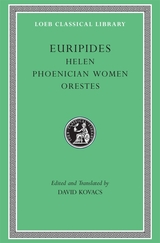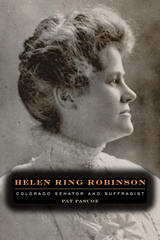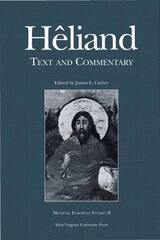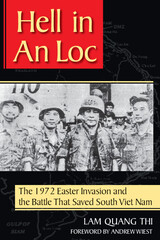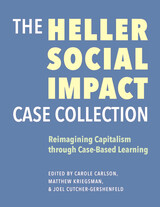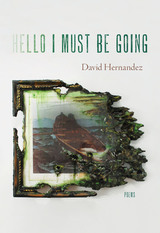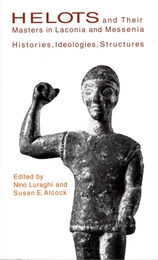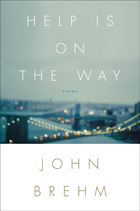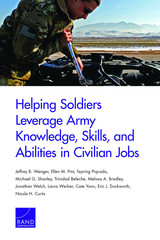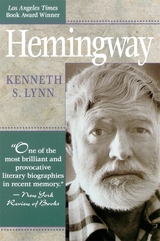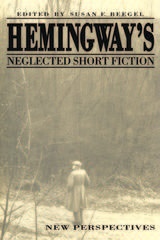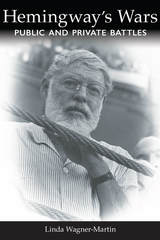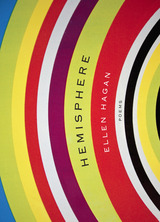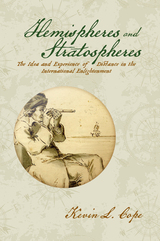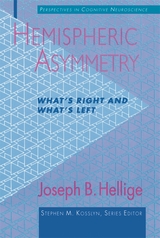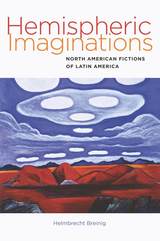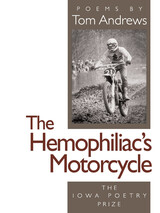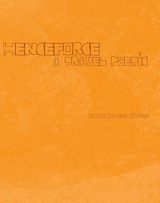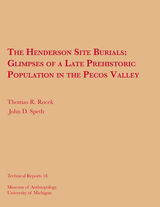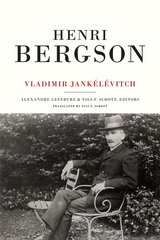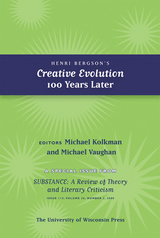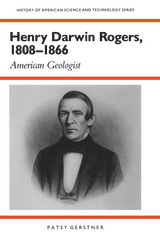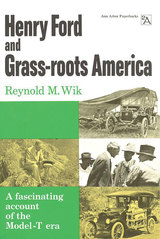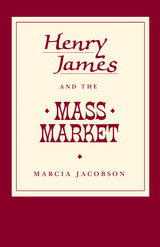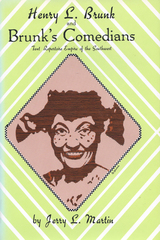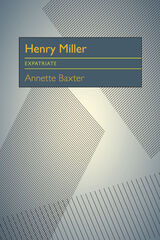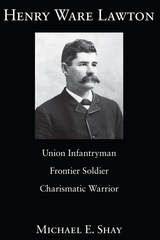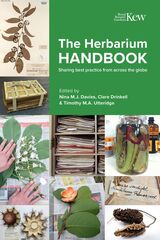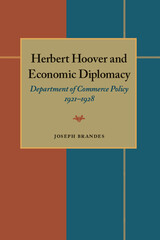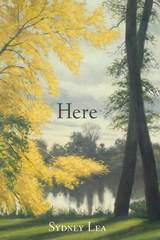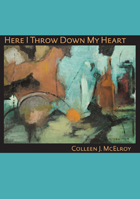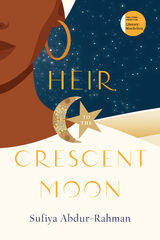 Heir to the Crescent Moon
Abdur-Rahman, Sufiya
University of Iowa Press, 2021 From age five, Sufiya Abdur-Rahman, the daughter of two Black Power–era converts to Islam, feels drawn to the faith even as her father, a devoted Muslim, introduces her to and, at the same time, distances her from it. Abdur-Rahman’s father and mother abandoned their Harlem mosque before she was born and divorced when she was twelve. Forced apart from her father—her portal into Islam—she yearns to reconnect with the religion and, through it, reconnect with him.
In Heir to the Crescent Moon, Abdur-Rahman’s longing to comprehend her father’s complicated relationship with Islam leads her first to recount her own history, and then delves into her father’s past. She journeys from the Christian righteousness of Adam Clayton Powell Jr.’s 1950s Harlem, through the Malcolm X–inspired college activism of the late 1960s, to the unfulfilled potential of the early 1970s Black American Muslim movement. Told at times with lighthearted humor or heartbreaking candor, Abdur-Rahman’s story of adolescent Arabic lessons, fasting, and Muslim mosque, funeral, and Eid services speaks to the challenges of bridging generational and cultural divides and what it takes to maintain family amidst personal and societal upheaval. She weaves a vital tale about a family: Black, Muslim, and distinctly American.
 Heiress of All the Ages: Sex and Sentiment in the Genteel Tradition
William Wasserstrom
University of Minnesota Press, 1959
Heiress of All the Ages was first published in 1959. Minnesota Archive Editions uses digital technology to make long-unavailable books once again accessible, and are published unaltered from the original University of Minnesota Press editions.
In a provocative study of American literature, Professor Wasserstrom reappraises the genteel tradition and its place in social and intellectual history. He shows that our image of this tradition has been inadequate, that most of our writers and critics have failed to recognize its profound effects.
Basing his discussion primarily on a study of the major novelists of the period from 1830 to the present, the author examines the role of women in fiction and defines some of our national attitudes toward love. He discusses especially the world of Henry James (from whose phrase "heir of all the ages" the title of this book is derived), William Dean Howells, Nathaniel Hawthorne, James Fenimore Cooper, Edith Wharton, and Robert Penn Warren. He also considers such well known novelists of their day as Bret Harte, Edgar Fawcett, Robert Herrick, Henry B. Fuller, Hamlin Garland, and Gertrude Atherton. In addition, his study is based on source material of the period: diaries, recipe books, family magazines, early issues of sociology and psychology journals, and travel books.
This book will interest not only students of literature and history but also those in the general field of American civilization and sociologists and psychologists concerned with the relation of American literature to our mores.
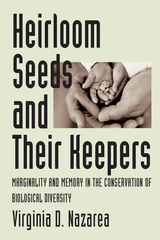 Heirloom Seeds and Their Keepers: Marginality and Memory in the Conservation of Biological Diversity
Virginia D. Nazarea
University of Arizona Press, 2005 Farmers and gardeners have long appreciated a wide variety of plants and have nurtured them for meals, healing, and exchange. But diversity too often has been surrendered to monocultures of fields and spirits, predisposing much of modern agriculture to uniformity and, consequently, vulnerability. Today it is primarily at the individual level—such as growing and saving a strange old bean variety or a curious-looking gourd—that any lasting conservation actually takes place. As scientists grapple with the erosion of genetic diversity of crops and their wild relatives, old-timey farmers and gardeners continue to save, propagate, and pass on folk varieties and heirloom seeds. Virginia Nazarea focuses on the role of these seedsavers in the perpetuation of diversity. She thoughtfully examines the framework of scientific conservation and argues for the merits of everyday conservation—one that is beyond programmatic design. Whether considering small-scale rice and sweet potato farmers in the Philippines or participants in the Southern Seed Legacy and Introduced Germplasm from Vietnam in the American South, she explores roads not necessarily less traveled but certainly less recognized in the conservation of biodiversity. Through characters and stories that offer a wealth of insights about human nature and society, Heirloom Seeds and Their Keepers helps readers more fully understand why biodiversity persists when there are so many pressures for it not to. The key, Nazarea explains, is in the sovereign spaces seedsavers inhabit and create, where memories counter a culture of forgetting and abandonment engendered by modernity. A book about theory as much as practice, it profiles these individuals, who march to their own beat in a world where diversity is increasingly devalued as the predictability of mass production becomes the norm. Heirloom Seeds and Their Keepers offers a much-needed, scientifically researched perspective on the contribution of seedsaving that illustrates its critical significance to the preservation of both cultural knowledge and crop diversity around the world. It opens new conversations between anthropology and biology, and between researchers and practitioners, as it honors conservation as a way of life.
Heirs and Ancestors
John K. Ryan
Catholic University of America Press, 2018 Among the many thinkers discussed in this volume are Sartre, Frankl, Hartshorne, Ortega, Kant, Leibniz, Descartes, John of St. Thomas, Anselm, Bonavanture, Augustine, Plotinus and Aristotle.
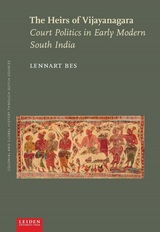 The Heirs of Vijayanagara
Lennart Bes
Leiden University Press, 2022 "This comparative study investigates court politics in four kingdoms that succeeded the s outh Indian Vijayanagara empire during the sixteenth to eighteenth centuries: Ikkeri, Tanjavur, Madurai, and Ramnad. Building on a unique combination of unexplored Indian texts and Dutch archival records, this research offers a captivating new analysis of political culture, power relations, and dynastic developments. In great detail, this monograph provides both new facts and fresh insights that contest existing scholarship. By highlighting their competitive, fluid, and dynamic nature, it undermines the historiography viewing these courts as harmonic, hierarchic, and static. Far from being remote, ritualised figures, we find kings and Brahmins contesting with other courtiers for power. At the same time, by stressing continuities with the past, this study questions recent scholarship that perceives a fundamentally new form of Nayaka kingship. Thus, this research has important repercussions for the way we perceive both these kingdoms and their ‘medieval’ precursors. "
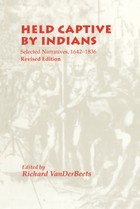 Held Captive By Indians: Selected Narratives, 1642-1836
Richard Vanderbeets
University of Tennessee Press, 1984 “The brilliant introductory essay [and] the superb editing . . . combine to make the book a valuable contribution to American history and literature.”–Pacific Historical Review
“The value of this gruesomely fascinating collection is inestimable. . . . This is a book for both the scholar and casual reader who wants something out of the ordinary.”–Library Journal
“The best of the genre that has appeared, . . . comprehensive, well-edited, and thoroughly useful.”–Russell B. Nye
Among the early white settlers, accounts of Indian captivities and massacres became America’s first literature of catharsis—a means by which a population that disapproved of fiction and play-acting could satisfy its appetite for stories about other people’s misfortunes. This collection of unaltered captivity narratives, first published in 1973, remains an invaluable source of information for historians and ethnologists, providing a fascinating glimpse of a vanished era.
For this revised edition, VanDerBeets has written a new preface discussing the proliferation of recent scholarship about captivity narratives, especially those written by women.
Held's History of Sumbawa: An Annotated Translation
Gerrit Jan Held
Amsterdam University Press, 2017 Sumbawa is a medium-sized island in eastern Indonesia which has a particularly interesting past. In the premodern era it lay on the trade routes that connected the north coasts of the islands of Melaka and Java with the spice-producing areas in Maluku, while Sumbawa itself exported horses, sappan wood, and rice. Its recorded history covers periods of Hindu-Javanese influence, the Southeast Asian Age of Commerce, early Islamisation, and Dutch colonialism. Dutch Indologist Gerrit Jan Held wrote this book in 1955 but died before it could be published; this volume represents its first translation into English, and includes extensive footnotes that set it in context of current research.
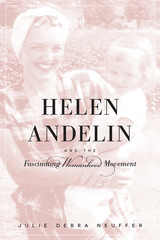 Helen Andelin and the Fascinating Womanhood Movement
Julie Debra Neuffer
University of Utah Press, 2014 In 1961, Helen Andelin, housewife and mother of eight, languished in a lackluster, twenty-year-old marriage. A religious woman, she fasted and prayed for help. As she studied a set of women’s advice booklets from the 1920s, Andelin had an epiphany that not only changed her life but also affected the lives of millions of American women. She applied the principles from the booklets and found that her disinterested husband became loving and attentive. He bought her gifts and hurried home from work to be with her. Andelin took her new-found happiness as a sign that it was her religious duty to share these principles with other women. She began leading small discussion groups for women at her church. The results were dramatic. In 1963, at the urging of her followers, Andelin wrote and self-published Fascinating Womanhood. The book, which borrowed heavily from those 1920s advice booklets, the Bible, and classical literature, eventually sold over three million copies and launched a nationwide organization of classes and seminars led by thousands of volunteer teachers.
Countering second-wave feminists in the 1960s, Andelin preached family values and urged women not to have careers, but to become good wives, mothers, and homemakers instead. A woman’s true happiness, taught Andelin, could only be realized if she admired, cared for, and obeyed her husband. As Andelin’s notoriety grew, so did the backlash from her critics. Undeterred, she became a national celebrity, who was interviewed extensively and appeared in sold-out speaking engagements.
Andelin’s message calling for the return to traditional roles appealed to many in a time of uncertainty and radical social change. This study provides an evenhanded and important look at a crucial, but often overlooked cross section of American women as they navigated their way through the turbulent decades following the post-war calm of the 1950s.
Winner of the Mormon History Association's Best Biography Award.
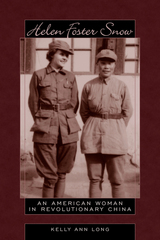 Helen Foster Snow: An American Woman in Revolutionary China
Kelly Ann Long
University Press of Colorado, 2006 Helen Foster Snow: An American Woman in Revolutionary China tells the story of a remarkable woman born in rural Utah in 1907, who lived in China during the 1930's and became an important author, a lifelong humanitarian, and a bridge-builder between the United States and China.
As Kelly Ann Long recounts in this engaging biography, Helen Foster Snow immersed herself in the social and political currents of a nation in turmoil. After marrying renowned journalist Edgar Snow, she developed her own writing talents and offered an important perspective on emerging events in China as that nation was wracked by Japanese invasion, the outbreak of World War II, and a continuing civil war. She supported the December Ninth Movement of 1935, broke boundaries to enter communist Yenan in 1937, and helped initiate the "gung ho" Chinese Industrial Cooperative movement.
Helen Foster Snow wrote about the people and events in China's remote communist territories during an important era. She relayed detailed portraits of female communist leaders and famous figures such as Mao Zedong and Zhu De, as well as common people struggling to survive in a period of increasing turmoil. Her informed, compassionate depictions built a bridge linking American interest to the welfare of the Chinese.
Long's account recovers the story of a controversial and important commentator on a critical period in U.S.-China relations and in Chinese history
Helen Halsey, or The Swamp State of Conelachita: A Tale of the Borders
William Gilmore Simms
University of Arkansas Press, 1998 In this novelette, William Gilmore Simms records one of the awful realities of America's early frontier, that of women trapped in ill-fated marriages. Forced into a union with her lover, Helen Halsey is exploited and victimized in a domestic situation from which there is no release.Utilizing the compression of the short novel form, Simms weaves elaborate plot lines of violence, romance, and intrigue to create a fast-moving, action-packed tale of an America just beginning its search for identity, justice, and spiritual truth. Edgar Allan Poe said of Simms that "in invention, in vigor, in movement, in the power of exciting interest, and in the artistical arrangement of his themes," he surpassed "any of his countrymen."
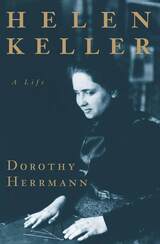 Helen Keller: A Life
Dorothy Herrmann
University of Chicago Press, 1999 Dorothy Herrmann's powerful biography of Helen Keller tells the whole story of the controversial and turbulent relationship between Helen and her teacher, Annie Sullivan. Herrmann also chronicles Helen's doomed love affair, her struggles to earn a living, her triumphs at Radcliffe College, and her work as an advocate for the disabled. Helen Keller has been venerated as a saint or damned as a fraud, but Herrmann shows her to have been a beautiful, intelligent, high-strung, and passionate woman whose life was transformed not only by her disabilities but also by the remarkable people on whose help and friendship she relied.
"Fascinating. . . . Stripping away decades of well-meaning sentimentality, Herrmann presents a pair of strong-willed women, who struggled to build their own lives while never forgetting their dependence on each other."—Ron Charles, Christian Science Monitor
"We meet an entirely unexpected Helen Keller—a woman with deep if concealed ambivalence toward her self-sacrificing teacher; a political radical; and a woman longing for romantic love and the fulfilled sexual life of a woman."—Joan Mellen, Philadelphia Inquirer
"Herrmann's portrait of Keller is both fully embodied and unflinchingly candid."—Mary Loeffelholz, Boston Sunday Globe
"This well-proportioned biography of the deaf and blind girl who became a great American crusader rescues its subject from the shackles of sainthood without destroying her as an American hero."—Dennis Drabelle, Cleveland Plain Dealer
"Herrmann's engrossing biography helps us see beyond the public's fascination with how Keller dealt with her disabilities to discover the woman Keller strived to be."—Nancy Seidman, Atlanta Journal-Constitution
"Perhaps the most intimate biography [of Helen Keller]. [Herrmann] gives her back her sexuality [and] imbues her with a true humanity. . . . Helen Keller: A Life has some of the texture and the dramatic arc of a good novel."—Dinitia Smith, New York Times
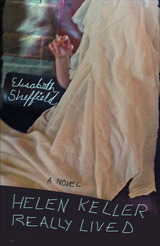 Helen Keller Really Lived: A Novel
Elisabeth Sheffield
University of Alabama Press, 2014 The newest novel by Elisabeth Sheffield, the award-winning author of Gone and Fort Da
What does it mean to really live? Or not?
Set in eastern, upstate New York, Helen Keller Really Lived features a fortyish former barfly and grifter who must make a living in the wake of her wealthy husband’s death, and who finds work in a clinic helping women seeking reproductive assistance. The other main character is the grifter’s dead ex-husband, a Ukrainian hooker-to-healer success story, who prior to his demise was a gynecologist and after, an amateur folklorist, or ghostlorist, who collected and provided scholarly commentary on the stories of his fellow “revenants.”
Their intertwined stories explore the mistakes, miscarriages, inadequacies, and defeats that may have led to their divorce, including his failure (according to her) to “fully live.”
As it investigates the theme of what it means to “really live” or not, Elisabeth Sheffield’s brilliant new novel is also an exploration of virtual reality in the sense of the experience provided by literature. It is a novel awash in a multitude of voices, from the obscenity-laced, Nabokovian soliloquys of the dead Ukrainian doctor, to the trade-school / midcentury-romance-novel-constrained style of his dead mother-in-law.
Helen. Phoenician Women. Orestes
Euripides
Harvard University Press, 2002 Three plays by ancient Greece’s third great tragedian.
One of antiquity's greatest poets, Euripides has been prized in every age for the pathos, terror, and intellectual probing of his dramatic creations. The new Loeb Classical Library edition of his plays is in six volumes.
Helen, in Volume V, employs an alternative history in which a virtuous and faithful Helen was falsely blamed for the actions of her divinely created double in Troy. Here too are Phoenician Women, the battle between the sons of Oedipus for control of Thebes; and Orestes, recasting Orestes' lot after he murdered his mother.
Helen Ring Robinson: Colorado Senator and Suffragist
Pat Pascoe
University Press of Colorado, 2011 No strangers to frontier conditions, the family used their expertise as miners, surveyors, land speculators, and lawyers to erect cabins, stake their claims, and survey and lay plans for a new town. From these experiences they prepared a set of laws -- in
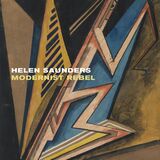 Helen Saunders: Modernist Rebel
Edited by Rachel Sloan
Paul Holberton Publishing, 2022 A reconsideration of the work of Helen Saunders and its importance to British modernism.
This catalog accompanies the Courtauld’s display of the work of Helen Saunders (1885–1963), the first monographic exhibition devoted to the artist in over twenty-five years. One of the first British artists to pursue abstraction, Saunders was one of only two women to join the Vorticists, the radical but short-lived art movement that emerged in London on the eve of World War I. Her extraordinary drawings capture both the dynamism of modern urban life and the horrors of mechanized warfare. Following the war, she turned her back on Vorticism and chose to work in a more figurative style. Due in part to the loss of a significant portion of her oeuvre, including all of her Vorticist oil paintings, this remarkable artist fell into obscurity. Only in recent years has her work been rediscovered and celebrated.
Featuring essays on Saunders’s artistic education and career and her relationship to the places of Vorticism in London, this catalog sheds light on an artist who steadily pursued her own path and whose contribution to the story of modern art is gaining recognition for the first time.
HELIAND: TEXT AND COMMENTARY
Edited by James E. Cathey
West Virginia University Press, 2002 James E. Cathey's Hêliand: Text and Commentary is a simply unique, wonderfully encompassing, and helpful text, and nothing quite like it exists anywhere in the world. The commentary portion of the book consists of an interweaving of interpretation and philological consideration. This work presents the reader with explanatory commentary that encompasses both the scientific and the poetic and treats them both with equal felicity. The volume also contains something that is exceptionally valuable and cannot be found in English: a compact and serviceable grammar of Old Saxon and an appended glossary that defines all of the vocabulary found in this edited version of the Hêliand.
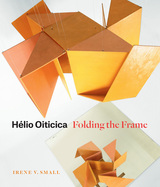 Hélio Oiticica: Folding the Frame
Irene V. Small
University of Chicago Press, 2016 Hélio Oiticica (1937–80) was one of the most brilliant Brazilian artists of the 1960s and 1970s. He was a forerunner of participatory art, and his melding of geometric abstraction and bodily engagement has influenced contemporary artists from Cildo Meireles and Ricardo Basbaum to Gabriel Orozco, Dominique Gonzalez-Foerster, and Olafur Eliasson. This book examines Oiticica’s impressive works against the backdrop of Brazil’s dramatic postwar push for modernization.
From Oiticica’s late 1950s experiments with painting and color to his mid-1960s wearable Parangolés, Small traces a series of artistic procedures that foreground the activation of the spectator. Analyzing works, propositions, and a wealth of archival material, she shows how Oiticica’s practice recast—in a sense “folded”—Brazil’s utopian vision of progress as well as the legacy of European constructive art. Ultimately, the book argues that the effectiveness of Oiticica’s participatory works stems not from a renunciation of art, but rather from their ability to produce epistemological models that reimagine the traditional boundaries between art and life.
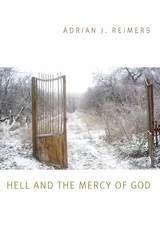 Hell and the Mercy of God
Adrian J. Reimers
Catholic University of America Press, 2017 If God is truly merciful and loving, perfect in goodness, how can he consign human beings created in his own image to eternal torment in hell? God’s goodness seems incompatible with inflicting horrible evil upon those who oppose his will and defy his law. If to this paradox we add the metaphysical requirement that God be perfect in goodness, the eternal evil of hell seems to be contradictory to God’s own nature.
Catholic philosopher Adrian Reimers takes on these challenges in Hell and the Mercy of God, drawing on relevant sources from Aristotle to Aquinas, from Dante to Tolkien, from Wagner to John Paul II, along with Billie Holliday, The Godfather, and the music of George Gershwin. He presents a philosophical theology, grounded in Scripture, of the nature of goodness and evil, exploring various types of pain, the seven capital sins, the resurrection of the body, the meaning of mammon, the core meaning of idolatry, the psychology of Satan and those who choose his path, and the moral responsibility of the human person.
These reflections illuminate the intelligibility of orthodox Catholic teachings on the goodness of God and the reality of hell. Hell is not an arbitrary imposition set up for human rule-breakers but a continuation of a freely chosen way of life manifest even in this world. Examples from history, art, and contemporary culture lead the author to conclude that anyone who does not believe in the reality of hell is not paying enough attention. And yet, mercy and hope remain triumphant, because, just as Christ offers entrance into paradise to the “good thief” Dismas on the cross, God continues to offer repentance and salvation to all who live.
 Hell of a Vision: Regionalism and the Modern American West
Robert L. Dorman
University of Arizona Press, 2012 The American West has taken on a rich and evocative array of regional identities since the late nineteenth century. Wilderness wonderland, Hispanic borderland, homesteader’s frontier, cattle kingdom, urban dynamo, Native American homeland. Hell of a Vision explores the evolution of these diverse identities during the twentieth century, revealing how Western regionalism has been defined by generations of people seeking to understand the West’s vast landscapes and varied cultures.
Focusing on the American West from the 1890s up to the present, Dorman provides us with a wide-ranging view of the impact of regionalist ideas in pop culture and diverse fields such as geography, land-use planning, anthropology, journalism, and environmental policy-making.
Going well beyond the realm of literature, Dorman broadens the discussion by examining a unique mix of texts. He looks at major novelists such as Cather, Steinbeck, and Stegner, as well as leading Native American writers. But he also analyzes a variety of nonliterary sources in his book, such as government reports, planning documents, and environmental impact studies.
Hell of a Vision is a compelling journey through the modern history of the American West—a key region in the nation of regions known as the United States.
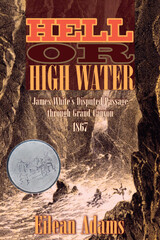 Hell Or High Water: James White's Disputed Passage through Grand Canyon, 1867
Eilean Adams
Utah State University Press, 2001 Although John Wesley Powell and party are usually given credit for the first river descent through the Grand Canyon, the ghost of James White has haunted those claims. White was a Colorado prospector, who, almost two years before Powell's journey, washed up on a makeshift raft at Callville, Nevada. His claim to have entered the Colorado above the San Juan River with another man (soon drowned) as they fled from Indians was widely disseminated and believed for a time, but Powell and his successors on the river publically discounted it. Colorado River runners and historians have since debated whether White's passage through Grand Canyon even could have happened. Hell or High Water is the first full account of White's story and how it became distorted and he disparaged over time. It is also a fascinating detective story, recounting how White's granddaughter, Eilean Adams, over decades and with the assistance of a couple of notable Colorado River historians who believed he could have done what he claimed, gradually uncovered the record of James White's adventure and put together a plausible narrative of how and why he ended up floating helplessly down a turbulent river, entrenched in massive cliffs, with nothing but a driftwood raft to carry him through.
Hell: The Logic of Damnation
Jerry L. Walls
University of Notre Dame Press, 1992 In Hell: The Logic of Damnation, Jerry L. Walls cogently argues that some traditional views of hell are still defensible and can be believed with intellectual and moral integrity. Focusing on the issues from the standpoint of philosophical theology, he explores the doctrine of hell in relation to both the divine nature and human nature. He argues, with respect to divine nature, that some versions of the doctrine are compatible not only with God's omnipotence and omniscience, but also with a strong account of His perfect goodness. The concept of divine goodness receives special attention since the doctrine of hell is most often rejected on moral grounds. In addition, Walls maintains that the doctrine of hell is intelligible from the standpoint of human freedom, since the idea of a decisive choice of evil is a coherent one.
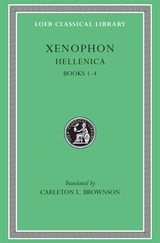 Hellenica, Volume I: Books 1–4
Xenophon
Harvard University Press A continuation of Thucydides.
Xenophon (ca. 430 to ca. 354 BC) was a wealthy Athenian and friend of Socrates. He left Athens in 401 and joined an expedition including ten thousand Greeks led by the Persian governor Cyrus against the Persian king. After the defeat of Cyrus, it fell to Xenophon to lead the Greeks from the gates of Babylon back to the coast through inhospitable lands. Later he wrote the famous vivid account of this “March Up-Country” (Anabasis); but meanwhile he entered service under the Spartans against the Persian king, married happily, and joined the staff of the Spartan king, Agesilaus. But Athens was at war with Sparta in 394 and so exiled Xenophon. The Spartans gave him an estate near Elis where he lived for years writing and hunting and educating his sons. Reconciled to Sparta, Athens restored Xenophon to honor, but he preferred to retire to Corinth.
Xenophon’s Anabasis is a true story of remarkable adventures. Hellenica, a history of Greek affairs from 411 to 362, begins as a continuation of Thucydides’ account. There are four works on Socrates (collected in LCL 168). In Memorabilia Xenophon adds to Plato’s picture of Socrates from a different viewpoint. The Apology is an interesting complement to Plato’s account of Socrates’ defense at his trial. Xenophon’s Symposium portrays a dinner party at which Socrates speaks of love; and Oeconomicus has him giving advice on household management and married life. Cyropaedia, a historical romance on the education of Cyrus (the Elder), reflects Xenophon’s ideas about rulers and government; the Loeb edition is in two volumes.
We also have his Hiero, a dialogue on government; Agesilaus, in praise of that king; Constitution of Lacedaemon (on the Spartan system); Ways and Means (on the finances of Athens); Manual for a Cavalry Commander; a good manual of Horsemanship; and a lively Hunting with Hounds. The Constitution of the Athenians, though clearly not by Xenophon, is an interesting document on politics at Athens. These eight books are collected in the last of the seven volumes of the Loeb Classical Library edition of Xenophon.
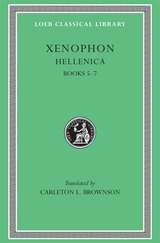 Hellenica, Volume II: Books 5–7
Xenophon
Harvard University Press A continuation of Thucydides.
Xenophon (ca. 430 to ca. 354 BC) was a wealthy Athenian and friend of Socrates. He left Athens in 401 and joined an expedition including ten thousand Greeks led by the Persian governor Cyrus against the Persian king. After the defeat of Cyrus, it fell to Xenophon to lead the Greeks from the gates of Babylon back to the coast through inhospitable lands. Later he wrote the famous vivid account of this “March Up-Country” (Anabasis); but meanwhile he entered service under the Spartans against the Persian king, married happily, and joined the staff of the Spartan king, Agesilaus. But Athens was at war with Sparta in 394 and so exiled Xenophon. The Spartans gave him an estate near Elis where he lived for years writing and hunting and educating his sons. Reconciled to Sparta, Athens restored Xenophon to honor, but he preferred to retire to Corinth.
Xenophon’s Anabasis is a true story of remarkable adventures. Hellenica, a history of Greek affairs from 411 to 362, begins as a continuation of Thucydides’ account. There are four works on Socrates (collected in LCL 168). In Memorabilia Xenophon adds to Plato’s picture of Socrates from a different viewpoint. The Apology is an interesting complement to Plato’s account of Socrates’ defense at his trial. Xenophon’s Symposium portrays a dinner party at which Socrates speaks of love; and Oeconomicus has him giving advice on household management and married life. Cyropaedia, a historical romance on the education of Cyrus (the Elder), reflects Xenophon’s ideas about rulers and government; the Loeb edition is in two volumes.
We also have his Hiero, a dialogue on government; Agesilaus, in praise of that king; Constitution of Lacedaemon (on the Spartan system); Ways and Means (on the finances of Athens); Manual for a Cavalry Commander; a good manual of Horsemanship; and a lively Hunting with Hounds. The Constitution of the Athenians, though clearly not by Xenophon, is an interesting document on politics at Athens. These eight books are collected in the last of the seven volumes of the Loeb Classical Library edition of Xenophon.
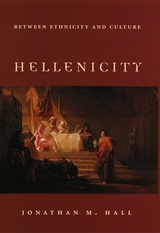 Hellenicity: Between Ethnicity and Culture
Jonathan M. Hall
University of Chicago Press, 2002 In today's cosmopolitan world, ethnic and national identity has assumed an ever-increasing importance. But how is this identity formed, and how does it change over time?
With Hellenicity, Jonathan M. Hall explores these questions in the context of ancient Greece, drawing on an exceptionally wide range of evidence to determine when, how, why, and to what extent the Greeks conceived themselves as a single people. Hall argues that a subjective sense of Hellenic identity emerged in Greece much later than is normally assumed. For instance, he shows that the four main ethnic subcategories of the ancient Greeks—Akhaians, Ionians, Aiolians, and Dorians—were not primordial survivals from a premigratory period, but emerged in precise historical circumstances during the eighth and seventh centuries B.C. Furthermore, Hall demonstrates that the terms of defining Hellenic identity shifted from ethnic to broader cultural criteria during the course of the fifth century B.C., chiefly due to the influence of Athens, whose citizens formulated a new Athenoconcentric conception of "Greekness."
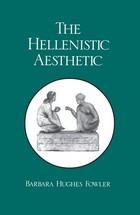 Hellenistic Aesthetic
Barbara Hughes Fowler
University of Wisconsin Press, 1989 “Fowler’s . . . own insights are apparent throughout, and they seem to distill the personal appreciation and understanding of a scholar who has devoted much of her career to both contemplating and enjoying Hellenistic poetry. . . . [This book] would make an excellent background text for courses in later Greek and Roman art, and it can be read with profit by anyone interested in exploring the character of Hellenistic culture.”—J. J. Pollitt, American Journal of Archaeology
“Outstanding is the range of examples discussed both in poetry and art. Theocritus, Callimachus, Appolonius, the epigrammatists, and others—that is, the major figures of the time—are considered at length and in several different contexts. Passages are quoted in the original Greek, translated, and analyzed. Fowler’s sensitivity to poetic forms, evident in her other published writings, is again evident here. In addition, however, the philosophical context is not overlooked. . . . Also highly commendable are the liberal references to works of art. Sculpture in the round and in relief, portraits, terracotta figurines, original paintings (grave stelai) and Campanian murals, mosaics, gold and silver vessels, and jewelry are introduced at various points. Every work of art discussed is illustrated in astonishingly clear photographs, which are interspersed in the body of the text.”—Christine Mitchell Havelock
“The Hellenistic Aesthetic provides classicists with their first thorough discussion of the aesthetic unity found in Hellenistic art and literature. . . . Fowler examines parallels both in subject matter and in artistic approach among a diverse group of literary genres and artistic forms. In twelve chapters, The Hellenistic Aesthetic surveys Alexandrian epigrams, pastorals, epics, sculptural groups, mosaics, paintings, and jewelry to supply a convincing, and frequently unexpected, picture of a unified aesthetic vision.”—Jeffrey Buller, Classical Outlook
Hellenistic Collection: Philitas. Alexander of Aetolia. Hermesianax. Euphorion. Parthenius
J. L. Lightfoot
Harvard University Press, 2009 A miscellany of learned literature from Alexandria and beyond.
This volume presents a selection of Hellenistic prose and poetry, ranging chronologically from Philitas of Cos through Alexander of Aetolia and Hermesianax of Colophon to Euphorion of Chalcis and Parthenius of Nicaea, whose mythography Sufferings in Love is the major work in the collection. Knowledge of many of these texts has been increased by papyrological discoveries in the last century, yet few of them have appeared in English translation before now. Taken together, these works represent the geographic and stylistic range of a rich and inventive period in Classical literature.
Hellenistic Greek Texts
Allen P. Wikgren
University of Chicago Press, 1947 In seventy-five passages from religious and religio-philosophical writings of the Hellenistic era—Christian, Jewish, and pagan—Hellenistic Greek Texts includes material suited to every linguistic level and illustrates various literary styles. The Old Testament, the Old Testament Apocrypha and Pseudepigrapha, the New Testament, Philo, Josephus, early Christian writings, pagan literature, and writings from papyri are all represented to provide first-hand material for the study of Christian origins and of koine, or everyday, Greek in which the New Testament was written.
An introduction to koine Greek and Hellenistic culture and religion, a selected bibliography, brief prefaces to the selections, and a complete vocabulary are also included in this volume.
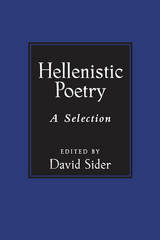 Hellenistic Poetry: A Selection
David Sider, Editor
University of Michigan Press, 2017 This collection of texts is designed to supplement those currently available for use in courses on Hellenistic poetry. Most have never before appeared in a similar collection; several have only recently been discovered. The individual commentaries have been written by the leading international scholars on Hellenistic poetry, and are designed to help the reader with more difficult aspects of the language, as well as to provide some basic guidance to each poem’s literary value and relevant scholarship.
The text of each poem is presented, together with basic help on obscure vocabulary, morphology, dialect, meter, syntax, and similar philological issues. The modern commentators also offer guidance on a poem’s literary significance and a brief introduction to the scholarship.
Among the 44 named and anonymous poets represented here are Apollonius of Rhodes, Archimedes, Aristotle, Callimachus, Cercidas, Corinna, Eratosthenes, Erinna, Ezekiel, Hermesianax, Herodas, Lycophron, and Phanocles.
Contributors to the volume in addition to David Sider include: Silvia Barbantani, James Clauss, Dee Clayman, Christophe Cusset, Claudio De Stefani, Marco Fantuzzi, Andrew Ford, Kathryn Gutzwiller, Johanna Hanink, Regina Hoeschele, Richard Hunter, David Konstan, Pauline LeVen, Kelly MacFarlane, Enrico Magnelli, Jackie Murray, Pura Nieto, Maria Noussia, Douglas Olson, Floris Overduin, Richard Rawles, Ralph Rosen, Chad Schroeder, Alexander Sens, Evina Sistakou, Michael Tueller, and Athanassios Vergados.
Although designed primarily as a textbook for graduate students and upper-level undergraduates, the book offers texts and subsidiary information not easily found (if at all) elsewhere. Since Latin poets made constant allusion to Hellenistic poetry, it will also be an important resource for Latinists.
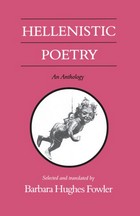 Hellenistic Poetry: An Anthology
Selected and translated by Barbara Hughes Fowler
University of Wisconsin Press, 1990 An accomplished poet and classical scholar, Barbara Hughes Fowler brings Hellenistic poetry to life for the contemporary reader. Her selections engage us with the full range of Hellenistic poetic genres, styles, themes, and moods. The anthology includes Fowler’s new translation of the entire Argonautica of Apollonius of Rhodes, and eight of Theocritus’ Idylls, including the beautiful, sensuous description of late summer in Idyll VII and the shrewdly comical description of two young matrons venturing into the noisy streets of Alexandria in Idyll XV. There are translations of four hymns of Callimachus, as well as poems by Aratus, Bion, Herodas, Moschus, Pseudo-Moschus, and a substantial selection from the Greek Anthology.
An ideal companion to her recently published book, The Hellenistic Aesthetic, Barbara Fowler’s Hellenistic Poetry is both a major contribution to classical studies and an invitation to all interested readers to discover the beauty and richness of Hellenistic poetry.
 The Hellenistic Pottery from Sardis: The Finds through 1994
Susan I. Rotroff and Andrew Oliver, Jr.
Harvard University Press, 2003 Hellenistic art in Asia Minor is characterized by diverse cultural influences, both indigenous and Greek. This work presents a comprehensive catalogue of the Hellenistic pottery found at Sardis by two archaeological expeditions. The main catalogue includes over 750 items from the current excavations; in addition, material from some 50 Hellenistic tombs excavated in the early twentieth century is published in its entirety for the first time. The early Hellenistic material consists of imports from Greek cities and close local imitations, along with purely Lydian wares typical of the "late Lydian" phase that followed the Persian conquest. By the late Hellenistic period, Sardis boasts a full range of Greek shapes and styles; indeed, the influence of new conquerors, the Romans, was felt as well. Thus the ceramic finds from Sardis reflect the changing fortunes of the city, bearing witness to the tenacity of indigenous customs and the influences of foreign powers.
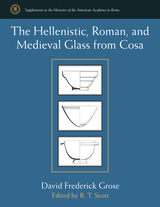 The Hellenistic, Roman, and Medieval Glass from Cosa
David Frederick Grose (R. T. Scott, editor)
University of Michigan Press, 2017 The Hellenistic, Roman, and Medieval Glass from Cosa continues the exemplary record of publication by the American Academy in Rome on important classes of materials recovered in excavation from one of the principal archaeological sites of Roman Italy. Over 15,000 fragments of glass tableware, ranging in date from the mid-second century BCE to the early fifth century CE, were found at Cosa, a small town in Etruria (modern Tuscany). Cosa’s products were chiefly exported to North Africa and Europe, but its influence was felt throughout the Mediterranean world.
The research and analysis presented here are the work of the late David Frederick Grose, who began this project when no other city site excavations in Italy focused on ancient glass. He confirmed that the Roman glass industry began to emerge in the Julio-Claudian era, beginning in the principate of Augustus. His study traces the evolution of manufacturing techniques from core-formed vessels to free blown glass, and it documents changes in taste and style that were characteristic of the western glass industry throughout its long history.
At the time of Grose’s unexpected passing, his study was complete but not yet published. Nevertheless, the reputation of his work in this area has done much to establish the value and importance of excavating and researching Cosa’s glass. This volume, arranged and edited by R. T. Scott, makes Grose’s essential scholarship on the subject available for the first time.
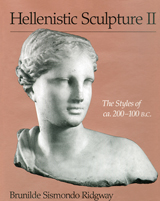 Hellenistic Sculpture II: The Styles of ca. 200–100 B.C.
Brunilde Sismondo Ridgway
University of Wisconsin Press, 2008 The second century B.C. is one of the most prolific periods in the production of Greek and Hellenistic art, but it is a period extremely vexing to scholars. Very few of the works traditionally cited as examples of this century's art can be dated with certainty, and those that plausibly belong to it reflect no obvious general trends in function, iconography, or style. In Hellenistic Sculpture II: The Styles of ca. 200-100 B.C., the second of Brunilde Sismondo Ridgway's three volumes on Hellenistic sculpture, she takes on the challenge of interpreting and dating the art of this complex and lively century. During this period, artistic production was stimulated by the encounter between Greece and Rome and fueled by the desire of the kings of Pergamon to emulate the past glories of fifth-century Athens. Statuary in relief and in the round, often at monumental scale, was created in a variety of styles. Ridgway attempts to determine what can be securely considered to have been produced during the second century B.C. In the course of her exploration, she critically scrutinizes most of the best-known pieces of Greek sculpture, ultimately revealing a tentative but plausible picture of the artistic trends of 200–100 B.C.
The Hellenistic World: Revised Edition
F. W. Walbank
Harvard University Press, 1993 The vast empire that Alexander the Great left at his death in 323 BC has few parallels. For the next three hundred years the Greeks controlled a complex of monarchies and city-states that stretched from the Adriatic Sea to India. F. W. Walbank’s lucid and authoritative history of that Hellenistic world examines political events, describes the different social systems and mores of the people under Greek rule, traces important developments in literature and science, and discusses the new religious movements.
The Heller Social Impact Case Collection: Reimagining Capitalism through Case-Based Learning
Edited by Carole Carlson, Matthew Kriegsman, and Joel Cutcher-Gershenfeld
Brandeis University Press, 2023 A pathbreaking collection of case studies that spotlights the corporate sector’s societal obligations.
At a time of deep and pervasive global challenges, future CEOs and administrators need to apply management principles to social impact cases. Today, top business schools across the country are meeting the moment, teaching courses about socially responsible investing and debating ways companies can stem the effects of climate change.
The case studies collected here are an invaluable resource for today’s students and tomorrow’s leaders. Chapters address an array of business sectors, including consumer goods, finance, health care, higher education, manufacturing, nongovernmental organizations, social services, and transportation. A teacher’s guide is available online to educators.
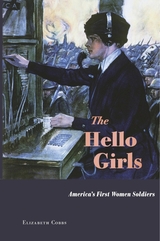 The Hello Girls: America’s First Women Soldiers
Elizabeth Cobbs
Harvard University Press, 2017 In 1918, the U.S. Army Signal Corps sent 223 women to France at General Pershing’s explicit request. They were masters of the latest technology: the telephone switchboard. While suffragettes picketed the White House and President Wilson struggled to persuade a segregationist Congress to give women of all races the vote, these courageous young women swore the army oath and settled into their new roles. Elizabeth Cobbs reveals the challenges they faced in a war zone where male soldiers wooed, mocked, and ultimately celebrated them.
The army discharged the last Hello Girls in 1920, the year Congress ratified the Nineteenth Amendment. When they sailed home, they were unexpectedly dismissed without veterans’ benefits and began a sixty-year battle that a handful of survivors carried to triumph in 1979.
“What an eye-opener! Cobbs unearths the original letters and diaries of these forgotten heroines and weaves them into a fascinating narrative with energy and zest.”
—Cokie Roberts, author of Capital Dames
“This engaging history crackles with admiration for the women who served in the U.S. Army Signal Corps during the First World War, becoming the country’s first female soldiers.”
—New Yorker
“Utterly delightful… Cobbs very adroitly weaves the story of the Signal Corps into that larger story of American women fighting for the right to vote, but it’s the warm, fascinating job she does bringing her cast…to life that gives this book its memorable charisma… This terrific book pays them a long-warranted tribute.”
—Christian Science Monitor
“Cobbs is particularly good at spotlighting how closely the service of military women like the Hello Girls was tied to the success of the suffrage movement.”
—NPR
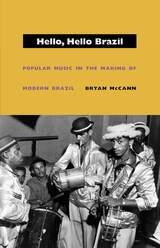 Hello, Hello Brazil: Popular Music in the Making of Modern Brazil
Bryan McCann
Duke University Press, 2004 “Hello, hello Brazil” was the standard greeting Brazilian radio announcers of the 1930s used to welcome their audience into an expanding cultural marketplace. New genres like samba and repackaged older ones like choro served as the currency in this marketplace, minted in the capital in Rio de Janeiro and circulated nationally by the burgeoning recording and broadcasting industries. Bryan McCann chronicles the flourishing of Brazilian popular music between the 1920s and the 1950s. Through analysis of the competing projects of composers, producers, bureaucrats, and fans, he shows that Brazilians alternately envisioned popular music as the foundation for a unified national culture and used it as a tool to probe racial and regional divisions. McCann explores the links between the growth of the culture industry, rapid industrialization, and the rise and fall of Getúlio Vargas’s Estado Novo dictatorship. He argues that these processes opened a window of opportunity for the creation of enduring cultural patterns and demonstrates that the understandings of popular music cemented in the mid–twentieth century continue to structure Brazilian cultural life in the early twenty-first.
Hello I Must Be Going: Poems
David Hernandez
University of Pittsburgh Press, 2022 Finalist, 2023 NBCC Award for Poetry
Finalist, 2022 California Book Award for Poetry
Hello I Must Be Going, David Hernandez’s fifth collection of poems, offers a unique take on poetry informed by works of art, in particular the work of artist Ed Ruscha. With narrative and lyrical brushstrokes, Hernandez crafts vibrant landscapes that depict the chaos of the modern world and the beauty entwined within it. Hello I Must Be Going pulses with originality. This is a book of our time, and of time itself—of unrest, loss, grief, and “this endless parade / shimmering toward silence.”
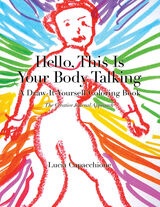 Hello, This Is Your Body Talking: A Draw-It-Yourself Coloring Book
Lucia Capacchione
Ohio University Press, 2017 With Drawing Your Stress Away and Hello, This Is Your Body Talking, art therapist and educator Dr. Lucia Capacchione presents a new concept in adult coloring: the draw-it-yourself coloring book. Forty years ago, Capacchione originated the Creative Journal Method to help clients and students reduce stress, heal trauma and unleash creativity. Since then, her research-based techniques have been used internationally in schools, counseling centers, support groups, addiction recovery centers, and programs for veterans. Drawing Your Stress Away and Hello, This Is Your Body Talking are a wonderful introduction to Capacchione’s methods, which include drawing, coloring, and writing with the non-dominant hand to help the user shed inhibitions and rediscover the artistic spontaneity of childhood. Capacchione gently guides readers to use drawing for meditation, stress release, and self-care. In Hello, This Is Your Body Talking, simple breathing, drawing, and writing prompts encourage physical awareness and relaxation. Drawing Your Stress Away helps reduce tension through emotional expression, self-nurturing, and artistic discovery. Unlike traditional coloring books, which require fine motor control in highly detailed predetermined patterns, Capacchione’s “anti-coloring books” provide the inspiration for users to make their own art; tune out their inner critics; and take the training wheels off their natural creativity.
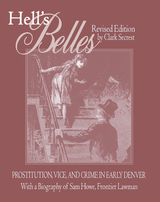 Hell's Belles, Revised Edition: Prostitution, Vice, and Crime in Early Denver, With a Biography of Sam Howe, Frontier Lawman
Clark Secrest
University Press of Colorado, 2001 This updated and revised edition of Hell's Belles takes the reader on a soundly researched, well-documented, and amusing journey back to the early days of Denver. Clark Secrest details the evolution of Denver's prostitution, the gambling, the drug addicts, and the corrupt politicians and police who, palms outstretched, allowed it all to happen. Also included in Hell's Belles is a biography of one of Denver's original police officers, Sam Howe, upon whose crime studies the book is based. The popular veneer of Denver's present-day Market Street - its fancy bars, posh restaurants, and Coors Field - is stripped away to reveal the street's former incarnation: a mecca of loose morals entrenched in prostitution, liquor, and money. Hell's Belles examines the neglected topics of vice and crime in Denver and utilizes a unique and invaluable historic source - the scrapbooks of Detective Sam Howe.
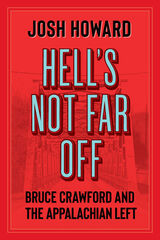 Hell's Not Far Off: Bruce Crawford and the Appalachian Left
Josh Howard
West Virginia University Press, 2024 A biography of Bruce Crawford, a southwest Virginia journalist-writer of the radical tradition and one of the first to interpret Appalachian labor history. Hell’s Not Far Off is a grounded, politically engaged study of the Appalachian journalist and political critic Bruce Crawford, a scourge of coal and railway interests. Crawford fought injustices wherever he saw them at major risk to his own life and became an early interpreter of Appalachian labor history. His writings and actions from the 1920s to the 1960s helped shape southwest Virginia and West Virginia. Through Crawford’s Weekly, a newspaper active from 1920 to 1935, Crawford challenged the Ku Klux Klan, lynch mobs, and the private police forces of coal barons. The wounds received for these efforts were the closing of his paper and a bullet to his leg during a Harlan County strike in the 1930s. In his work after journalism, he led the West Virginia branch of the Federal Writers’ Project during the political standoff over the contents of the state’s official guidebook. In Hell’s Not Far Off, Josh Howard resurrects strands of a radical tradition centered especially on matters of labor, environment, and race, drawing attention to that tradition’s ongoing salience: “Present-day Appalachia’s fights were [Crawford’s], and his fights are still ours.”
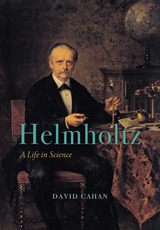 Helmholtz: A Life in Science
David Cahan
University of Chicago Press, 2018 Hermann von Helmholtz was a towering figure of nineteenth-century scientific and intellectual life. Best known for his achievements in physiology and physics, he also contributed to other disciplines such as ophthalmology, psychology, mathematics, chemical thermodynamics, and meteorology. With Helmholtz: A Life in Science, David Cahan has written a definitive biography, one that brings to light the dynamic relationship between Helmholtz’s private life, his professional pursuits, and the larger world in which he lived.
Utilizing all of Helmholtz’s scientific and philosophical writings, as well as previously unknown letters, this book reveals the forces that drove his life—a passion to unite the sciences, vigilant attention to the sources and methods of knowledge, and a deep appreciation of the ways in which the arts and sciences could benefit each other. By placing the overall structure and development of his scientific work and philosophy within the greater context of nineteenth-century Germany, Helmholtz also serves as cultural biography of the construction of the scientific community: its laboratories, institutes, journals, disciplinary organizations, and national and international meetings. Helmholtz’s life is a shining example of what can happen when the sciences and the humanities become interwoven in the life of one highly motivated, energetic, and gifted person.
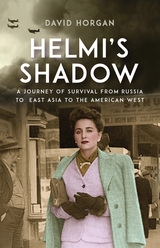 Helmi's Shadow: A Journey of Survival From Russia to East Asia to the American West
David Horgan
University of Nevada Press, 2021 Helmi’s Shadow tells the sweeping true story of two Russian Jewish refugees, a mother (Rachel Koskin) and her daughter (Helmi). With determination and courage, they survived decades of hardship in the hidden corners of war-torn Asia and then journeyed across the Pacific at the end of the Second World War to become United States citizens after seeking safe harbor in the unlikely western desert town of Reno, Nevada. This compelling narrative is also a memoir, told lovingly by Helmi’s son, David, of growing up under the wings of these strong women in an unusual American family.
Rachel Koskin was a middle-class Russian Jew born in Odessa, Ukraine, in 1896. Ten years later, her family fled from the murderous pogroms against Jews in the Russian Empire eastward to Harbin, a Russian-controlled city within China’s borders on the harsh plain of Manchuria. Full of lively detail and the struggles of being stateless in a time of war, the narrative follows Rachel through her life in Harbin, which became a center of Russian culture in the Far East; the birth of her daughter, Helmi, in Kobe, Japan; their life together in the slums of Shanghai and back in Japan during World War II, where they endured many more hardships; and their subsequent immigration to the United States.
This remarkable account uncovers a history of refugees living in war-torn China and Japan, a history that to this day remains largely unknown. It is also a story of survival during a long period of upheaval and war—from the Russian Revolution to the Holocaust—and an intimate portrait of an American immigrant family. David reveals both the joys and tragedies he experienced growing up in a multicultural household in post\-Second World War America with a Jewish mother, a live-in Russian grandmother, and a devout Irish Catholic American father.
As David develops a clearer awareness of the mysterious past lives of his mother and grandmother—and the impact of these events on his own understanding of the long-term effects of fear, trauma, and loss—he shows us that, even in times of peace and security, we are all shadows of our past, marked by our experiences, whether we choose to reveal them to others or not.
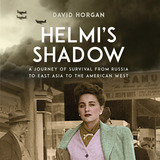 Helmi's Shadow: A Journey of Survival From Russia to East Asia to the American West
David Horgan
University of Nevada Press, 2021 Helmi’s Shadow tells the sweeping true story of two Russian Jewish refugees, a mother (Rachel Koskin) and her daughter (Helmi). With determination and courage, they survived decades of hardship in the hidden corners of war-torn Asia and then journeyed across the Pacific at the end of the Second World War to become United States citizens after seeking safe harbor in the unlikely western desert town of Reno, Nevada. This compelling narrative is also a memoir, told lovingly by Helmi’s son, David, of growing up under the wings of these strong women in an unusual American family.
Rachel Koskin was a middle-class Russian Jew born in Odessa, Ukraine, in 1896. Ten years later, her family fled from the murderous pogroms against Jews in the Russian Empire eastward to Harbin, a Russian-controlled city within China’s borders on the harsh plain of Manchuria. Full of lively detail and the struggles of being stateless in a time of war, the narrative follows Rachel through her life in Harbin, which became a center of Russian culture in the Far East; the birth of her daughter, Helmi, in Kobe, Japan; their life together in the slums of Shanghai and back in Japan during World War II, where they endured many more hardships; and their subsequent immigration to the United States.
This remarkable account uncovers a history of refugees living in war-torn China and Japan, a history that to this day remains largely unknown. It is also a story of survival during a long period of upheaval and war—from the Russian Revolution to the Holocaust—and an intimate portrait of an American immigrant family. David reveals both the joys and tragedies he experienced growing up in a multicultural household in post\-Second World War America with a Jewish mother, a live-in Russian grandmother, and a devout Irish Catholic American father.
As David develops a clearer awareness of the mysterious past lives of his mother and grandmother—and the impact of these events on his own understanding of the long-term effects of fear, trauma, and loss—he shows us that, even in times of peace and security, we are all shadows of our past, marked by our experiences, whether we choose to reveal them to others or not.
Heloise and Abelard
Etienne Gilson
University of Michigan Press, 1960 Heloise and Abelard by Etienne Gilson explores the intense and tragic love affair between twelfth-century philosopher Peter Abelard and his brilliant student Heloise. Translated by L. K. Shook, the book delves into the intellectual and personal dynamics of their relationship, set against the backdrop of medieval philosophy and theology. Through a meticulous analysis of their correspondence and historical context, Gilson addresses the secrecy of their marriage, the ethical implications of their love, and Abelard's conversion to religious devotion. The narrative offers a nuanced understanding of their motivations and the societal conflicts they faced, supported by extensive scholarly research. This work provides a comprehensive examination of the intersection of love, philosophy, and theology in their compelling story.
Helots and Their Masters in Laconia and Messenia: Histories, Ideologies, Structures
Nino Luraghi
Harvard University Press, 2003 The name “Helots” evokes one of the most famous peculiarities of ancient Sparta, the system of dependent labor that guaranteed the livelihood of the free citizens. The Helots fulfilled all the functions that slaves carried out elsewhere in the Greek world, allowing their masters the leisure to be full-time warriors. Yet, despite their crucial role, Helots remain essentially invisible in our ancient sources and peripheral and enigmatic in modern scholarship.
This book is devoted to a much-needed reassessment of Helotry and of its place in the history and sociology of unfree labor. The essays deal with the origins and historical development of Helotry, with its sociological, economic, and demographic aspects, with its ideological construction and negotiation.
Help Is on the Way
John Brehm
University of Wisconsin Press, 2012 Help Is On the Way takes readers from the subways of New York City to the savannas of Paleolithic Africa to the transplant ward of Kyoto University Hospital. But whatever their setting, these poems are enlivened by the subtle music, penetrating wit, and remarkable emotional honesty that won high praise for John Brehm’s earlier collection, Sea of Faith, and constitute his singularly engaging voice.
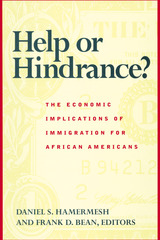 Help or Hindrance?: The Economic Implications of Immigration for African Americans
Daniel S. Hammermesh
Russell Sage Foundation, 1998 With recent immigration at a near record high, many observers fear that African Americans, particularly those in low skill jobs, are increasingly losing out to immigrants in the American labor market. Because today's immigrants are largely non-European and non-white, there is also speculation that their presence will intensify the competition for housing and educational opportunities among minority groups. Help or Hindrance? probes the foundation of these concerns with the first comprehensive investigation into the effects of immigration on African Americans. With detailed economic analysis of African American job prospects, benefits, and working conditions, Help or Hindrance? demonstrates that although immigration does not appear to have affected the actual employment rate of blacks, it has contributed slightly to the widening gap between the annual earnings of black and white males. Those near the lowest skills level appear most affected, suggesting that the most likely losers are workers with abilities similar to those of immigrants. With many employers moving away from cities, access to housing and problems of segregation have also become integral to success in the job market. And within black neighborhoods themselves, the establishment of small immigrant businesses has raised concerns that these may hinder local residents from starting up similar ventures. Help or Hindrance? also examines how immigration has affected the educational attainment of African Americans. Increased competition for college affirmative action and remedial programs has noticeably reduced African Americans' access to college places and scholarships. Help or Hindrance? offers compelling evidence that although immigration has in many ways benefited parts of American society, it has had a cumulatively negative effect on the economic prospects of African Americans. In concluding chapters, this volume provides an overview of possible policy interventions and evaluates them within the current social and political climate. Because the long-term impact of current immigration on social welfare remains unknown solutions are far from clear. Help or Hindrance? provides a valuable benchmark for discussion of immigration and racial equity in a time of rapid population change.
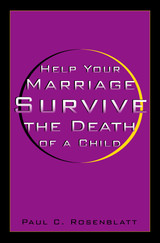 Help Your Marriage Survive: The Death Of A Child
Paul Rosenblatt
Temple University Press, 2000 Many parents who have experienced the death of a child struggle with painful and at times overwhelming marital problems. Grieving can create great marital distance, and it can magnify those problems that existed before the child's death. Grieving parents often fear that divorce is a real possibility. This book can help.
Based on intensive interviews of 29 couples who experienced the death of a child, this book offers perspectives and advice on common marital problems experienced by bereaved parents. Each couple's problems are unique, but often the problems are connected to couple communication, sexuality, parenting of other children, the use of alcohol and drugs, blaming, and differences in such areas as whether to have another child, how to grieve, how to talk about the child who died, whether to go outside the marriage for support, and what to do with things and spaces that were the child's.
Although the book deals with pain and marital distress, it offers a message of hope. Grieving parents can and do get through the hard times, based on respect for differences, mutual understanding, and shared history.
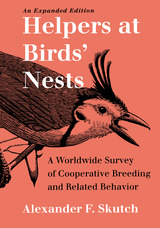 Helpers At Birds Nests: Cooperative Breeding & Related Behavior
Alexander F. Skutch
University of Iowa Press, 1999 In Helpers at Birds' Nests, renowned naturalist and ornithologist Alexander Skutch provides vivid, detailed accounts of a remarkable aspect of bird behavior—he aid that one bird gives another who is neither its mate nor its dependent young and who may even belong to a different species. In graceful, clear prose, Skutch makes accessible to amateur bird-watchers examples of cooperation in species as far-flung as the little rifleman of New Zealand, the Laysan albatross in the mid Pacific, and the neotropical birds of Skutch's own Valley of El General in Costa Rica. Skutch describes the cooperative behavior of more than fifty families of birds. Each family is introduced by a brief sketch of its distribution and outstanding features, followed by intimate, nontechnical accounts of the helpful behaviors that have been most carefully studied. Skutch considers the significance of helpful birds and discusses the theoretical aspects of cooperative breeding, its evolution, kin selection, altruism, and demography. First discovered by the author more than half a century ago, cooperative breeding has become increasingly studied by professional ornithologists. In this expanded edition, noted behaviorist Stephen Emlen credits Skutch's passionate observations of birds with promoting scientific interest in avian behavior. Emlen offers readers a summary of the advances made in the field during the past ten years and places Skutch's work in the context of contemporary ornithological research.
 Helping and Healing: Religious Commitment in Health Care
Edmund D. Pellegrino and David C. Thomasma
Georgetown University Press, 1997 Exploring the moral foundations of the healing relationship, Edmund D. Pellegrino and David C. Thomasma offer the health care professional a highly readable Christian philosophy of medicine. This book examines the influence religious beliefs have on the kind of person the health professional should be, on the health care policies a society should adopt, and on what constitutes healing in its fullest sense. Helping and Healing looks at the ways a religious perspective shapes the healing relationship and the ethics of that relationship. Pellegrino and Thomasma seek to clarify the role of religious belief in health care by providing a moral basis for such commitment as well as a balancing role for reason. This book establishes a common ground for believers and skeptics alike in their dedication to relieve suffering by showing that helping and healing require an involvement in the religious values of patients. It clearly argues that religion provides crucial insights into medical practice and morality that cannot be ignored, even in our morally heterogeneous society. Central to the authors' message is the concept of patients' vulnerabilities and the need to help them recover not only from the disease but also from an existential assault on their personhood. They then show how this understanding can move caregivers to view their professions as vocations and thereby change the nature of health care from a business to a community of healing. Physicians, nurses, administrators, clergy, theologians, and other health professionals and church leaders will find this volume helpful for their own reflections on the role of religion in the health care ministry and for making a religious commitment integral to their professional lives.
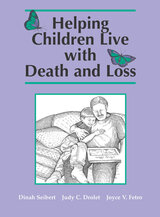 Helping Children Live With Death and Loss
Dinah Seibert, Judy C. Drolet, and Joyce V. Fetro. Illustrations by Christine I. Stetter
Southern Illinois University Press, 2003
Helping Children Live with Death and Loss is a practical guide for parents, caregivers, teachers, clergy, funeral directors, and other adults who may interact with young children between the ages of two and ten. Utilizing a developmental approach that is critical for understanding the unique characteristics and needs among children under ten, the volume is enhanced by an accessible style and format, numerous illustrations, and the positive attitude that make it possible for any reader to comprehend and apply the concepts when discussing death and loss with young children.
The scope of concepts ranges from adult self-assessment to knowledge of children’s developmental stages in learning. Building on that foundation, the book provides four basic content areas for teaching, supplies sample questions and answers, and suggests strategies for teaching general death education as well as strategies for responding to a current death or loss. The resource concludes with print and internet sources for adults and children. Helping Children Live with Death and Loss also aids adults and children in improving their communication and coping skills, which are critical for managing loss and preparing for a healthier future.
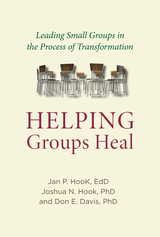 Helping Groups Heal: Leading Groups in the Process of Transformation
Jan Paul Hook
Templeton Press, 2017 Life with others is messy. The bonds we form are often the source that drives us to helping professionals like therapists and pastors in the first place. And yet, it is from these relationships that our greatest moments of healing spring. Recognizing the value of relationships, pastors and therapists have been leading small therapeutic groups for years. Yet few leaders have a specific, easy-to-follow, and researched framework to structure their groups.
Helping Groups Heal presents “The Healing Cycle,” a grace-based model that facilitates healing and growth in groups. It has been tested with a variety of settings, and can be adapted to nearly any small group, from sex addiction therapy to marriage therapy to Bible studies.
The basic components of “The Healing Cycle” are grace, safety, vulnerability, truth, ownership, and confession. Helping Groups Heal guides the reader through these elements, offering case studies and practical advice from the voices of researchers and practitioners. Each chapter shows how “The Healing Cycle” moves its members to share their truth, own it, and make positive change in their lives. Each step of the process allows participants to move past surface issues and find depth in their understanding of their pain.
Whether you have been leading small groups for years or are about to lead your first session, Helping Groups Heal is an accessible, easy-to-follow guide through “The Healing Cycle” that will give each group member what’s needed to grow, relate, and heal.
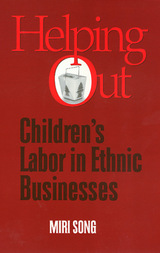 Helping Out
Miri Song
Temple University Press, 1999 The growing body of literature on ethnic businesses has emphasized the importance of small family-based businesses as a key form of immigrant adaptation. Although there have been numerous references to the importance of "family labor" as a key ethnic resource, few studies have examined the work roles and family dynamics entailed in various kinds of ethnic businesses.
Helping Out addresses the centrality of children's labor participation in such family enterprises. Discussing the case of Chinese families running take-out food shops in Britain, Miri Song examines the ways in which children contribute their labor and the context in which children come to understand and believe in "helping out" as part of a "family work contract." Song explores the implications of these children's labor participation for family relationships, cultural identity, and the future of the Chinese community in Britain. While doing so, she argues that the practical importance and the broader meanings of children's work must be understood in the context of immigrant families' experiences of migration and ethnic minority status in Western, white-majority societies.
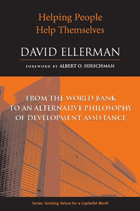 Helping People Help Themselves: From the World Bank to an Alternative Philosophy of Development Assistance
David Ellerman
University of Michigan Press, 2006 David Ellerman relates a deep theoretical groundwork for a philosophy of development, while offering a descriptive, practical suggestion of how goals of development can be better set and met. Beginning with the assertion that development assistance agencies are inherently structured to provide help that is ultimately unhelpful by overriding or undercutting the capacity of people to help themselves, David Ellerman argues that the best strategy for development is a drastic reduction in development assistance. The locus of initiative can then shift from the would-be helpers to the doers (recipients) of development. Ellerman presents various methods for shifting initiative that are indirect, enabling and autonomy-respecting. Eight representative figures in the fields of education, community organization, economic development, psychotherapy and management theory including: Albert Hirschman, Paulo Freire, John Dewey, and Søren Kierkegaard demonstrate how the major themes of assisting autonomy among people are essentially the same. David Ellerman is currently a Visiting Scholar in the Economics Department at the University of California at Riverside.
Helping Soldiers Leverage Army Knowledge, Skills, and Abilities in Civilian Jobs
Jeffrey B. Wenger
RAND Corporation, 2017 This report discusses the results of occupation surveys administered to soldiers in selected Army military occupational specialties (MOSs) to assess the level and importance of the knowledge, skills, and abilities needed in these MOSs and to develop better crosswalks between military and civilian occupations. The report identifies both a broader range of military-civilian occupation matches and higher-quality matches than existing crosswalks.
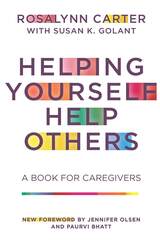 Helping Yourself Help Others: A Book for Caregivers
Rosalynn Carter
University of Arkansas Press, 2023 “A practical, highly informative, and sympathetic guide.”
—The Washington Post
Most of us will become a caregiver at some point in our lives. And we will assume this role for the most personal reason imaginable: wanting to help someone we love. But we may not know where to start, and we may be afraid of losing ourselves in this daunting task. Former first lady Rosalynn Carter, a longtime advocate for caregivers and mental health, knows firsthand the challenges of this labor of love. Drawing upon her own experiences and those of hundreds of others whose stories she gathered over many decades, Mrs. Carter offers reassuring, practical advice to any caregiver who has faced stress, anxiety, or loneliness. Helping Yourself Help Others, reissued here with a new foreword, is as relevant as ever. Long before the COVID-19 pandemic inspired national conversations about the vast undervaluing of unpaid caregiving, the dangers of burnout, and the merits of self-care for relief, Rosalynn Carter was shining a light on these matters and everything else that caregivers confront. Filled with empathy, this encouraging guide will help you meet a difficult challenge head-on and find fulfillment and empowerment in your caregiving role.
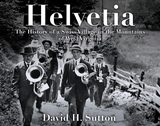 Helvetia: The History of a Swiss Village in the Mountains of West Virginia
David H. Sutton
West Virginia University Press, 2010 Helvetia: A Swiss Village in the Hills of West Virginia explores the unique founding and development of a community nestled within the wilderness of Appalachia. Established in 1869, this tiny Swiss settlement embodies the American immigrant experience, reflecting the steadfast desire of settlers to preserve cultural traditions and values while adapting to new and extraordinary surroundings. From ramp suppers to carnivals, traditional architecture, folk music, and cheese making, this book documents a living community by exploring the ethnic customs, farming practices, community organization, and language maintenance of Helvetia residents. Drawing upon a diverse body of resources such as Swiss and American archival documents and local oral accounts, this chronicledepicts the everyday social and economic life of this village during the past two centuries. Helvetia celebrates a small community where residents and visitors alike continue to practice a Swiss American culture that binds an international history to a local heritage. Long out of print, this reissued edition of the history of Helvetia contains a new introduction, a concise index, a bibliography, an appendix of foreign-born immigrants, and an exquisite photographic essay featuring archival images of a Swiss village still thriving within the isolated backcountry of central West Virginia.
Hemingway
Kenneth Lynn
Harvard University Press, 1995 Ernest Hemingway was a mythic figure of overt masculinity and vibrant literary genius. He lived life on an epic scale, presenting to the world a character as compelling as the fiction he created. But behind it all lurked an insecure, troubled man. In this immensely powerful and revealing study, Kenneth S. Lynn explores the many tragic facets that both nurtured Hemingway’s work and eroded his life. Masterfully written, Hemingway brings to life the writer whose desperate struggle to exorcise his demons produced some of the greatest American fiction of this century.
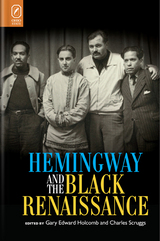 Hemingway and the Black Renaissance
Edited by Gary Edward Holcomb and Charles Scruggs
Ohio State University Press, 2012 Hemingway and the Black Renaissance, edited by Gary Edward Holcomb and Charles Scruggs, explores a conspicuously overlooked topic: Hemingway’s wide-ranging influence on writers from the Harlem Renaissance to the present day. An observable who’s who of black writers—Ralph Ellison, James Baldwin, Langston Hughes, Claude McKay, Wallace Thurman, Chester Himes, Alex la Guma, Derek Walcott, Gayl Jones, and more—cite Hemingway as a vital influence. This inspiration extends from style, Hemingway’s minimalist art, to themes of isolation and loneliness, the dilemma of the expatriate, and the terrifying experience of living in a time of war. The relationship, nevertheless, was not unilateral, as in the case of Jean Toomer’s 1923 hybrid, short-story cycle Cane, which influenced Hemingway’s collage-like 1925 In Our Time. Just as important as Hemingway’s influence, indeed, is the complex intertextuality, the multilateral conversation, between Hemingway and key black writers. The diverse praises by black writers for Hemingway in fact signify that the white author’s prose rises out of the same intensely American concerns that their own writings are formed on: the integrity of the human subject faced with social alienation, psychological violence, and psychic disillusionment. An understanding of this literary kinship ultimately initiates not only an appreciation of Hemingway’s stimulus but also a perception of an insistent black presence at the core of Hemingway’s writing.
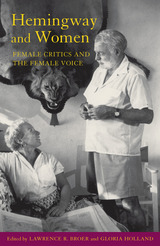 Hemingway and Women: Female Critics and the Female Voice
Lawrence R. Broer
University of Alabama Press, 2003 Female scholars reevaluate gender and the female presence in the life and work of one of America’s foremost writers
Ernest Hemingway has often been criticized as a misogynist because of his portrayal of women. But some of the most exciting Hemingway scholarship of recent years has come from women scholars who challenge traditional views of Hemingway and women. The essays in this collection range from discussions of Hemingway’s famous heroines Brett Ashley and Catherine Barkley to examinations of the central role of gender in his short stories and in the novel The Garden of Eden. Other essays address the real women in Hemingway’s life—those who cared for him, competed with him, and, ultimately, helped to shape his art. While Hemingway was certainly influenced by traditional perceptions of women, these essays show that he was also aware of the struggle of the emerging new woman of his time. Making this gender struggle a primary concern of his fiction, these critics argue, Hemingway created women with strength, depth, and a complexity that readers are only beginning to appreciate.
 Hemingway In His Own Country
Robert E. Gajdusek
University of Notre Dame Press, 2002 Hemingway in His Own Country, an outstanding collection of essays from noted Hemingway scholar Robert Gajdusek, delivers to the reading public and scholarly world a new and much needed rereading of one of America's greatest writers. Gajdusek attempts to shift attention away from Hemingway's adventurous life and toward the intricate and demanding modernist texts he wrote. Hemingway was both a great craftsman and an extremely well-read author. His complex message and highly sophisticated technique have been largely lost on a reading audience overwhelmed by the myth of the man. Hemingway the artist, Gajdusek argues, remains comparatively unknown.
Hemingway in His Own Country traces outside influences on Hemingway during his time in Paris in the early 1920s. Among his close friends and associates at that time were James Joyce, Ezra Pound, Gertrude Stein, Ford Madox Ford, and F. Scott Fitzgerald--he was very much a part of the heady movements and intellectual idealism of his era. Joyce, like the other four, even went over Hemingway's manuscripts with him--a service (we are told) Joyce performed for no one else. Gajdusek contends that this period of Hemingway's life is too often seen immersed in the excitements of time and place, rather than recognized as the studied creation of the unique and consummate artist.
Gajdusek's essays, while occasionally pointing out Hemingway's special intellectual journey, focus primarily on the texts themselves, working to bring to light the fascinating and highly intricate structures and designs that imbed Hemingway's philosophy and message at unexpected levels. Hemingway likened his prose to an iceberg, in the sense that the majority of his creation rests beneath the surface, where the bulk of his power and meaning are concealed. Gajdusek's collection aims to help readers part the waters and discover the hidden Hemingway.
ROBERT E. GAJDUSEK , a recipient of the Nick Adams Society Award for Lifetime Achievement and Enduring Excellence in Belles Lettres and Hemingway Studies and the Hemingway Society's award for Extraordinary Achievement in Hemingway Studies, is the author of several books and professor emeritus of English at San Francisco State University.
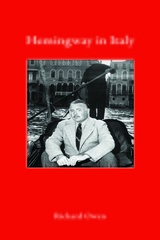 Hemingway in Italy
Richard Owen
Haus Publishing, 2017 Ernest Hemingway is most often associated with Spain and Cuba, but Italy was equally important in his life and work. Hemingway in Italy, the first full-length book exploring Hemmingway’s penchant for Italy, offers a lively account of the many visits Hemingway made throughout his life to Italian locales, including Sicily, Genoa, Rapallo, Cortina, and Venice.
In evocative prose, complemented by a rich selection of historical images, Richard Owen takes us on a tour through Hemingway’s Italy. He describes how Hemingway first visited the country of the Latins during World War I, an experience that set the scene for A Farewell to Arms. Then after World War II, it was in Italy that he found inspiration for Across the River and into the Trees. Again and again, the Italian landscape—from the Venetian lagoon to the Dolomites and beyond—deeply affected one of the greatest writers of the twentieth century. Hemingway in Italy demonstrates that Italy stands alongside Spain as a key influence on Hemingway’s work—and why the Italians themselves hold Hemingway and his writing close to their hearts.
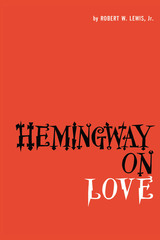 Hemingway on Love
By Robert W. Lewis, Jr.
University of Texas Press, 1965 Love was a central theme of Ernest Hemingway’s major works. And although his passages on sexual love and on romantic love may be widely remembered and frequently quoted, says Robert W. Lewis in this scholarly and detailed consideration, Hemingway’s later work revealed his ultimate belief that brotherly love was the supreme love of mankind. Eros, Hemingway concluded, was a neutral value, neither good nor bad in itself, but yet capable of complementing agape in giving man pleasure. By examining the forms and essences of the various kinds of love, Hemingway worked out an explanation and tentative solution to the troubles of the human condition. The tradition of romantic love that had prevailed in Western literature had challenged sexual love and brotherly love and had been confused with them since the Middle Ages. Hemingway’s early work was destructive of romantic love, says Lewis; the work of his middle career was crucial in his exploration for the supreme love and the means to whatever peace and happiness man may achieve. By the time he wrote The Old Man and the Sea, his ethic was formulated and he could write conclusively of the trial and lesson of love in Western civilization in a way that reflected his discovery that true love must be a reciprocal blend of eros and agape between man and woman, man and man, and man and his world.
 Hemingway: The Writer’s Art of Self-Defense
Jackson J. Benson
University of Minnesota Press, 1970
Hemingway was first published in 1970. Minnesota Archive Editions uses digital technology to make long-unavailable books once again accessible, and are published unaltered from the original University of Minnesota Press editions.
In a close critical analysis of five of Ernest Hemingway's novels and a number of his most important short stories, Professor Benson provides a fascinating new view of his work. The novels discussed are The Sun Also Rises, A Farewell to Arms, For Whom the Bell Tolls, Across the River and into the Trees,and the Old Man and the Sea.
Hemingway's art of self-defense, which Professor Benson refers to in his subtitle, was, as he demonstrates in his perceptive criticism, the writer's use of style and technique to attack the sentimentalities which were Hemingway's own weakness. Emotion was central to the task which Hemingway defined for himself, Professor Benson explains, and a critical appraisal of his work must, therefore, focus particularly on the ways in which he dealt with and expressed emotion.
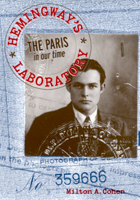 Hemingway's Laboratory: The Paris in our time
Milton A. Cohen
University of Alabama Press, 2005 Illuminates the development of Hemingway’s themes and techniques and his future course as a stylist and writer. In 1924 Ernest Hemingway published a small book of eighteen vignettes, each little more than one page long, with a small press in Paris. Titled in our time, the volume was later absorbed into Hemingway’s story collection In Our Time. Those vignettes, as Milton Cohen demonstrates in Hemingway’s Laboratory, reveal a range of voices, narrative strategies, and fictional interests more wide-ranging and experimental than any other extant work of Hemingway’s. Further, they provide a vivid view of his earliest tendencies and influences, first manifestations of the style that would become his hallmark, and daring departures into narrative forms that he would forever leave behind. Many of the chapters are pointillistic glimpses of violence--bullfights, a botched execution, the fleeting thoughts of the wounded on the battlefield. Others reach back into childhood. Still others adopt the wry, mannered voice of English aristocracy. Though critics have often read these chapters as secondary asides to the longer stories that constitute the commercial collection, Cohen argues that not only do the vignettes merit consideration as a unit unto themselves, but that they exhibit a plethora of styles and narrative gambits that show Hemingway at his most versatile.
The final section examines in detail the individual chapters of in our time, their historical origins, their drafts, themes, and styles. The result is an account of what is arguably Hemingway’s most crucial formative period.
Hemingway's Neglected Short Fiction: New Perspectives
Susan F. Beegel
University of Alabama Press, 1991 Reveal a range of voices, narrative strategies, and fictional interests more wide-ranging and experimental than any other extant work of Hemingway’s
In 1924 Ernest Hemingway published a small book of eighteen vignettes, each little more than one page long, with a small press in Paris. Titled in our time, the volume was later absorbed into Hemingway’s story collection In Our Time. Those vignettes, as Milton Cohen demonstrates in Hemingway’s Laboratory, reveal a range of voices, narrative strategies, and fictional interests more wide-ranging and experimental than any other extant work of Hemingway’s. Further, they provide a vivid view of his earliest tendencies and influences, first manifestations of the style that would become his hallmark, and daring departures into narrative forms that he would forever leave behind.
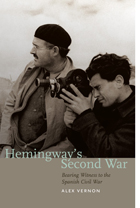 Hemingway’s Second War: Bearing Witness to the Spanish Civil War
Alex Vernon
University of Iowa Press, 2011 In 1937 and 1938, Ernest Hemingway made four trips to Spain to cover its civil war for the North American News Alliance wire service and to help create the pro-Republican documentary film The Spanish Earth. Hemingway’s Second War is the first book-length scholarly work devoted to this subject. Drawing on primary sources, Alex Vernon provides a thorough account of Hemingway’s involvement in the Spanish Civil War, a messy, complicated, brutal precursor to World War II that inspired Hemingway’s great novel For Whom the Bell Tolls. Vernon also offers the most sustained history and consideration to date of The Spanish Earth. Directed by Joris Ivens, this film was a landmark work in the development of war documentaries, for which Hemingway served as screenwriter and narrator. Contributing factual, textual, and contextual information to Hemingway studies in general and his participation in the war specifically, Vernon has written a critical biography for Hemingway’s experiences during the Spanish Civil War that includes discussion of the left-wing politics of the era and the execution of José Robles Pazos. Finally, the book provides readings ofFor Whom the Bell Tollsboth in historical context and on its own terms. Marked by both impressive breadth and accessibility, Hemingway’s Second War will be an indispensible resource for students of literature, film, journalism, and European history and a landmark work for readers of Ernest Hemingway.
Hemingway's Wars: Public and Private Battles
Linda Wagner-Martin
University of Missouri Press, 2017 This is a study of the ways various kinds of injury and trauma affected Ernest Hemingway’s life and writing, from the First World War through his suicide in 1961.
Linda Wagner-Martin has written or edited more than sixty books including Ernest Hemingway, A Literary Life. She is Frank Borden Hanes Professor Emerita at the University of North Carolina-Chapel Hill and a winner of the Jay B. Hubbell Medal for Lifetime Achievement.
Hemisphere: Poems
Ellen Hagan
Northwestern University Press, 2015 Winner, 2015 Seven Sisters Book Award for Poetry
The poems in Hemisphere explore what it means to be a daughter and what it means to bear new life. Ellen Hagan investigates the world historical hemispheres of a family legacy from around the globe and moves down to the most intimate hemisphere of impending motherhood. Her poems reclaim the female body from the violence, both literal and literary, done to it over the years. Hagan acknowledges the changing body of a mother from the strains of birth—from the growing body of a child, to the scars left most visibly by a C-section—as well as the changes wrought by age and, too often, abuse. The existence of a hemisphere implies a part seeking a whole, and as a collection, Hemisphere is a coherent and cogent journey toward reclamation and wholeness.
Hemispheres and Stratospheres: The Idea and Experience of Distance in the International Enlightenment
Kevin L. Cope
Bucknell University Press, 2021 Recognizing distance as a central concern of the Enlightenment, this volume offers eight essays on distance in art and literature; on cultural transmission and exchange over distance; and on distance as a topic in science, a theme in literature, and a central issue in modern research methods. Through studies of landscape gardens, architecture, imaginary voyages, transcontinental philosophical exchange, and cosmological poetry, Hemispheres and Stratospheres unfurls the early history of a distance culture that influences our own era of global information exchange, long-haul flights, colossal skyscrapers, and space tourism.
Published by Bucknell University Press. Distributed worldwide by Rutgers University Press.
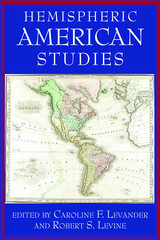 Hemispheric American Studies
Levander, Caroline F
Rutgers University Press, 2007 This landmark collection brings together a range of exciting new comparative work in the burgeoning field of hemispheric studies. Scholars working in the fields of Latin American studies, Asian American studies, American studies, American literature, African Diaspora studies, and comparative literature address the urgent question of how scholars might reframe disciplinary boundaries within the broad area of what is generally called American studies. The essays take as their starting points such questions as: What happens to American literary, political, historical, and cultural studies if we recognize the interdependency of nation-state developments throughout all the Americas? What happens if we recognize the nation as historically evolving and contingent rather than already formed? Finally, what happens if the "fixed" borders of a nation are recognized not only as historically produced political constructs but also as component parts of a deeper, more multilayered series of national and indigenous histories?
With essays that examine stamps, cartoons, novels, film, art, music, travel documents, and governmental publications, Hemispheric American Studies seeks to excavate the complex cultural history of texts and discourses across the ever-changing and stratified geopolitical and cultural fields that collectively comprise the American hemisphere. This collection promises to chart new directions in American literary and cultural studies.
Hemispheric Asymmetry: What's Right and What's Left
Joseph B. Hellige
Harvard University Press Is "right-brain" thought essentially creative, and "left-brain" strictly logical? Joseph B. Hellige argues that this view is far too simplistic. Surveying extensive data in the field of cognitive science, he disentangles scientific facts from popular assumptions about the brain's two hemispheres.
In Hemispheric Asymmetry, Hellige explains that the "right brain" and "left brain" are actually components of a much larger cognitive system encompassing cortical and subcortical structures, all of which interact to produce unity of thought and action. He further explores questions of whether hemispheric asymmetry is unique to humans, and how it might have evolved. This book is a valuable overview of hemispheric asymmetry and its evolutionary precedents.
 Hemispheric Blackface: Impersonation and Nationalist Fictions in the Americas
Danielle Roper
Duke University Press, 2025 In Hemispheric Blackface, Danielle Roper examines blackface performance and its relationship to twentieth- and twenty-first-century nationalist fictions of mestizaje, creole nationalism, and other versions of postracialism in the Americas. Challenging both the dominance of the US minstrel tradition and the focus on the nation in blackface studies, Roper maps a hemispheric network of racial impersonation in Peru, Bolivia, Colombia, Jamaica, Cuba, and Miami. She analyzes blackface performance in the aftermath of the turn to multiculturalism in Latin America, the emergence of modern blackness in Jamaica, and the rise of Barack Obama in the United States, showing how blackface remains embedded in cultural entertainment. Contending that the Americas are linked by repeating nationalist fictions of postracialism, colorblindness, and myths of racial democracy, Roper assesses how acts of impersonation mediate the ongoing power of these narratives and enable people to comprehend advancements and reversals in racial equality. Rather than simply framing blackface as liberatory or oppressive, Roper traces its emergence from a shared history of slavery and the varied politics of racial enjoyment throughout the hemisphere.
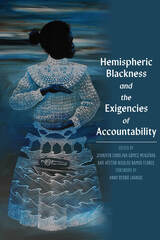 Hemispheric Blackness and the Exigencies of Accountability
Jennifer Carolina Gómez Menjívar and Héctor Nicolás Ramos Flores
University of Pittsburgh Press, 2022 Hemispheric Blackness and the Exigencies of Accountability examines the way Afrodescendant and Black communities use the land on which they live, the rule of law, and their bodies to assert their historical, ontological, and physical presence across South, Central, and North America. Their demand for the recognition of ancestral lands, responsive policies, and human rights sheds new light on their permanent yet tenuous presence throughout the region. The authors argue that by deploying a discourse of transcontinental historical continuity, Black communities assert their presence in local, national, and international political spheres. This conceptualization of hemispheric Blackness is the driving force confronting the historical loss, dismissal, and disparagement of Black lives across the Américas. Through twelve case studies that cover a wide range of locations, their work examines contemporary manifestations of sovereignty of Black body and mind, Black-Indigenous nexuses, and national revisions that challenge more than a quincentennial of denial and state unaccountability in the hemisphere.
Hemispheric Imaginations: North American Fictions of Latin America
Helmbrecht Breinig
Dartmouth College Press, 2016 What image of Latin America have North American fiction writers created, found, or echoed, and how has the prevailing discourse about the region shaped their work? How have their writings contributed to the discursive construction of our southern neighbors, and how has the literature undermined this construction and added layers of complexity that subvert any approach based on stereotypes? Combining American Studies, Canadian Studies, Latin American Studies, and Cultural Theory, Breinig relies on long scholarly experience to answer these and other questions. Hemispheric Imaginations, an ambitious interdisciplinary study of literary representations of Latin America as encounters with the other, is among the most extensive such studies to date. It will appeal to a broad range of scholars of American Studies.
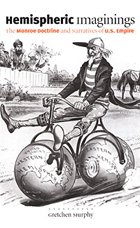 Hemispheric Imaginings: The Monroe Doctrine and Narratives of U.S. Empire
Gretchen Murphy
Duke University Press, 2005 In 1823, President James Monroe announced that the Western Hemisphere was closed to any future European colonization and that the United States would protect the Americas as a space destined for democracy. Over the next century, these ideas—which came to be known as the Monroe Doctrine—provided the framework through which Americans understood and articulated their military and diplomatic role in the world. Hemispheric Imaginings demonstrates that North Americans conceived and developed the Monroe Doctrine in relation to transatlantic literary narratives. Gretchen Murphy argues that fiction and journalism were crucial to popularizing and making sense of the Doctrine’s contradictions, including the fact that it both drove and concealed U.S. imperialism. Presenting fiction and popular journalism as key arenas in which such inconsistencies were challenged or obscured, Murphy highlights the major role writers played in shaping conceptions of the U.S. empire. Murphy juxtaposes close readings of novels with analyses of nonfiction texts. From uncovering the literary inspirations for the Monroe Doctrine itself to tracing visions of hemispheric unity and transatlantic separation in novels by Lydia Maria Child, Nathaniel Hawthorne, María Amparo Ruiz de Burton, Lew Wallace, and Richard Harding Davis, she reveals the Doctrine’s forgotten cultural history. In making a vital contribution to the effort to move American Studies beyond its limited focus on the United States, Murphy questions recent proposals to reframe the discipline in hemispheric terms. She warns that to do so risks replicating the Monroe Doctrine’s proprietary claim to isolate the Americas from the rest of the world.
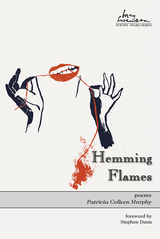 Hemming Flames
Patricia Colleen Murphy
Utah State University Press, 2016 Volume 19 of the May Swenson Poetry Award Series, 2016 Throughout this haunting first collection, Patricia Colleen Murphy shows how familial mental illness, addiction, and grief can render even the most courageous person helpless. With depth of feeling, clarity of voice, and artful conflation of surrealist image and experience, she delivers vivid descriptions of soul-shaking events with objective narration, creating psychological portraits contained in sharp, bright language and image. With Plathian relentlessness, Hemming Flames explores the deepest reaches of family dysfunction through highly imaginative language and lines that carry even more emotional weight because they surprise and delight. In landscapes as varied as an Ohio back road, a Russian mental institution, a Korean national landmark, and the summit of Kilimanjaro, each poem sews a new stitch on the dark tapestry of a disturbed suburban family’s world. The May Swenson Poetry Award is an annual competition named for May Swenson, one of America’s most provocative and vital writers. During her long career, Swenson was loved and praised by writers from virtually every school of American poetry. She left a legacy of fifty years of writing when she died in 1989. She is buried in her hometown of Logan, Utah.
Hemming the Water
Yona Harvey
Four Way Books, 2013 Channeling the collection’s muse, jazz composer and pianist Mary Lou Williams, Hemming the Water speaks to the futility of trying to mend or straighten a life that is constantly changing. Here the spiritual and the secular comingle in a “Fierce fragmentation, lonely tune.” Harvey inhabits, challenges, and explores the many facets of the female self—as daughter, mother, sister, wife, and artist. Every page is rich with Harvey’s rapturous music.
The Hemophiliac's Motorcycle
Tom Andrews
University of Iowa Press, 1994 In this second wise and passionate book, Tom Andrews explores illness as a major theme, avoiding sentimentality without being merely confessional. He advances his considerable talent with great strength and forcefulness. The poems ae buoyant with humor and mindful of larger mysteries even as they investigate very personal issues. There is an urgency that is compelling; the work is immersed in the private grief of the speaker without excluding the reader. There is real and hard-won wisdom and intelligence in the poems, offering genuine surprises and delight; their attractive humility is not a pose.
henceforce: A Travel Poetic
Kamden Ishmael Hilliard
Omnidawn, 2019 In henceforce, Kamden Ishmael Hilliard’s poems take us on unimaginable voyages within and beyond the contours of our quotidian experience. This is not simply geographic travel, however: though Hilliard’s poems explore air travel, transcontinental locations, and even intergalactic scenes, their travel poetic asks us to move through and beyond deeply entrenched social boundaries. The movement depicted and encouraged here brings the reader into contact with figures that destabilize our notions of race, gender, and nation. Hilliard’s language, too, transgresses boundaries. For any reader who loves strange encounters with the familiar and the thrill of disorientation, these poems will prove challenging in a deeply exhilarating way, asking the reader to question the limits of their gaze, their language, their sense of place, and ultimately to reaffirm their personhood.
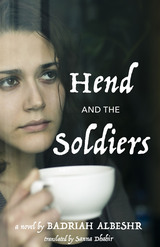 Hend and the Soldiers
By Badriah Albeshr, translated by Sanna Dhahir
University of Texas Press, 2017 Hend is a young Saudi Arabian woman struggling to challenge her conservative society, which is represented by various soldiers, real and metaphorical, in her life. After a failed arranged marriage to an army officer, she is determined to establish herself as a writer and make her own choices in love. Her mother, a firm supporter of their society’s traditional norms, works to block her efforts. As Hend engages with her mother, stories of her past and those of other female relatives reveal the extent of the suffering previous generations of women have endured while living in such a patriarchal society. Hend also comes to understand how such traditions have adversely affected the men in her family, including one brother who flees to the West and another who finds comradeship among the members of al-Qaeda. Badriah Albeshr represents a growing number of women writers from the Arabian Peninsula who refuse to shy away from the taboo topics of religion and sexuality, which makes Hend and the Soldiers a valuable read for those seeking insights into the complexities surrounding these issues.
The Henderson Site Burials: Glimpses of a Late Prehistoric Population in the Pecos Valley
Thomas R. Rocek and John D. Speth
University of Michigan Press, 1986 The Henderson site is a small, late prehistoric pueblo in southeastern New Mexico. It sits on a crest overlooking the Hondo River in Chaves County. The site contains a multiroom structure with two phases of occupation: the first around AD 1200 and the second around AD 1300 to 1400. This volume presents descriptions and analysis of the ten burials found at the Henderson site.
Henri Bergson
Vladimir Jankélévitch
Duke University Press, 2015 Appearing here in English for the first time, Vladimir Jankélévitch's Henri Bergson is one of the two great commentaries written on Henri Bergson. Gilles Deleuze's Bergsonism renewed interest in the great French philosopher but failed to consider Bergson's experiential and religious perspectives. Here Jankélévitch covers all aspects of Bergson's thought, emphasizing the concepts of time and duration, memory, evolution, simplicity, love, and joy. A friend of Bergson's, Jankélévitch first published this book in 1931 and revised it in 1959 to treat Bergson's later works. This unabridged translation of the 1959 edition includes an editor's introduction, which contextualizes and outlines Jankélévitch's reading of Bergson, additional essays on Bergson by Jankélévitch, and Bergson's letters to Jankélévitch.
Henri Bergson’s Creative Evolution 100 Years Later: Special Issue of SubStance, Issue 114, 36:3 (2007)
Michael Kolkman
University of Wisconsin Press, 2007 This special issue of SubStance (2007) celebrates the centennial of Henri Bergson’s Creative Evolution, published in 1907. Since evolution is a living process and not a completed history, any understanding of it must necessarily be open-ended. If no one can have the last word, Bergson writes, the project of understanding evolution “will only be built up by the collective and progressive effort of many thinkers, of many observers also, completing, correcting and improving one another.”
Included in the issue are articles from Bergson scholars from the United States, Japan, France and Great Britain. Topics in the issue range from Bergson’s encounters with Darwin, Nietzsche, Derrida and Deleuze, and from the analytical to the metaphysical.
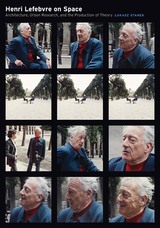 Henri Lefebvre on Space: Architecture, Urban Research, and the Production of Theory
Lukasz Stanek
University of Minnesota Press, 2010 In this innovative work, Lukasz Stanek frames a uniquely contextual appreciation of Henri Lefebvre’s idea that space is a social product. Stanek explicitly confronts both the philosophical and the empirical foundations of Lefebvre’s oeuvre, especially his direct involvement in the fields of urban development, planning, and architecture.
Countering the prevailing view, which reduces Lefebvre’s theory of space to a projection of his philosophical positions, Stanek argues that Lefebvre’s work grew out of his concrete, empirical engagement with everyday practices of dwelling in postwar France and his exchanges with architects and planners. Stanek focuses on the interaction between architecture, urbanism, sociology, and philosophy that occurred in France in the 1960s and 1970s, which was marked by a shift in the processes of urbanization at all scales, from the neighborhood to the global level. Lefebvre’s thinking was central to this encounter, which informed both his theory of space and the concept of urbanization becoming global.
Stanek offers a deeper and clearer understanding of Lefebvre’s thought and its implications for the present day. At a time when cities are increasingly important to our political, spatial, and architectural world, this reassessment proposes a new empirical, and practical, interpretation of Lefebvre’s ideas on urbanism.
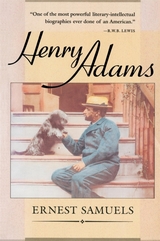 Henry Adams
Ernest Samuels
Harvard University Press, 1989 Henry Adams sought, late in life, to thwart prospective biographers by writing his own biography. Published soon after his death in 1918, The Education of Henry Adams was rightly greeted as a masterpiece. Not until thirty years later, with the appearance of the first volume of Ernest Samuels’s biography, did it become apparent how much the story had been colored by Adams’s singular philosophy of history and how great was the disparity between the protagonist of the Education and Adams as he actually was. Upon its completion in 1964, Samuels’s life of Henry Adams was hailed as “one of the great biographical achievements of our time”; its laurels included a Pulitzer Prize.
Ernest Samuels has now distilled his ample narrative into a single absorbing volume. We see Adams as a lively undergraduate, in contrast to the jaded young man of the Education; as budding writer, newspaper correspondent, eager participant in political maneuverings in Washington and at the American embassy in London; as teacher at Harvard and editor of the North American Review; settled in Washington, as scholar, biographer, historian, novelist; as insatiable traveler; as friend and adviser to statesmen; as elderly cosmopolite spending half of each year abroad; and always as witty chronicler of the social scene and trenchant commentator on the events of his time. We are drawn into the personal drama of Adams’s middle years: his married life with Clover; the halcyon period in Washington in the early 1880s, catastrophically terminated by Clover’s depression and suicide; his growing passion for Elizabeth Cameron; and his flight to the South Seas. Throughout the book we follow the genesis and progress of his writings, from his muck-raking journalism in President Grant’s Washington, through the social and political criticism of his novels, his biographies, and his great History, to the classic Mont Saint Michel and Chartres, the daring theories of the Education, and his last essays.
Few biographies have so broad a canvas—sixty years of American political, social, and intellectual life, from the pre–Civil War years to the First World War. And few offer so revealing a portrait of a complex human being and an extraordinary career.
 Henry Adams: Selected Letters
Henry Adams
Harvard University Press, 1992 Henry Adams has been called an indispensable figure in American thought. Although he famously “took his own life” in the autobiographical Education of Henry Adams, his letters—more intimate and unbuttoned, though hardly unselfconscious—are themselves indispensable for an understanding of the man and his times.
This selection, the first based on the authoritative 6-volume Letters, represents every major private and public event in Adams’s life from 1858 to 1918 and confirms his reputation as one of the greatest letter writers of his time. Adams knew everyone who was anyone and went almost everywhere, and—true to the Adams family tradition—recorded it all. These letters to an array of correspondents from American presidents to Henry James to 5-year-old honorary nieces reveal Adams’s passion for politics and disdain for politicians, his snobbish delight in society and sincere affection for friends, his pose of dilettantism and his serious ambitions as writer and historian, his devastation at his wife’s suicide and his acquiescence in the role of Elizabeth Cameron’s “tame cat,” his wicked humor at others’ expense and his own reflexive self-depreciation.
This volume allows the reader to experience 19th-century America through the eyes of an observer on whom very little was lost, and to make the acquaintance of one of the more interesting personalities in American letters. As Ernest Samuels says in his introduction, “The letters lift the veil of old-age disenchantment that obscures the Education and exhibit Adams as perhaps the most brilliant letter writer of his time. What most engages one in the long course of his correspondence is the tireless range of his intellectual curiosity, his passionate effort to understand the politics, the science, and the human society of the world as it changed around him… It is as literature of a high order that his letters can finally be read.”
 Henry Adams: The Major Phase
Ernest Samuels
Harvard University Press This volume is written on the same comprehensive scale as its predecessors, The Young Henry Adams and Henry Adams: The Middle Years, which the New York Times called “eminently sympathetic, inclusive, sensible and satisfying.” Ernest Samuels' narrative is mainly chronological, showing the growth and maturity of a long, full, and varied career, but the principal focus is on the internal drama of Adams' life and on the expression of his opinions and ideas.
Drawing on a wealth of unpublished material, including correspondence with such figures as John Hay, William and Henry James, Bernard Berenson, and Theodore Roosevelt, the author discerningly records significant moments in Adams' lifelong dialogue in letters with his friends and acquaintances. Particularly illuminating is the series of brilliant and romantic letters Adams wrote to Elizabeth Cameron which go far to correct the dehumanized image implicit in the Education. As before, Samuels maintains an artistic balance between pure biography and literary history and criticism; his definitive study of Adams' life and works adds a major chapter to American intellectual and social history.
 Henry Adams: The Middle Years
Ernest Samuels
Harvard University Press "Education had ended in 1871, life was complete in 1890." With this paradoxical statement from The Education of Henry Adams, Adams apparently dismissed from the record twenty of the most interesting and active years of his career. Those two decades embraced the first great productive season of his literary genius and the most significant years of his emotional life. Opening on the highest note of expectation and closing with his desperate flight to the South Seas in 1890, a divided and lonely figure, that season of fulfillment and inner growth is the subject of this book.
The relationship between Adams' life and writings grew steadily richer as his literary artistry matured, and with that process as his main concern, Mr. Samuels has written a book equally rewarding as a biography and as a critical study. Perhaps the greatest achievement biographically is a definitive and absorbing account of the true relationship between Henry Adams and his wife and an introduction to the grand passion for Elizabeth Cameron which was to affect the rest of his life. The whole intense inner drama of his feelings is really opened up for the first time, as often as possible in his own words, to the tragedy of his wife's suicide, the embittered years of work concluding the great History, and, finally, the escape to the South Seas in an effort to overcome the intolerable intensity of his love for Mrs. Cameron.
Through detailed analyses of Adams' writings, Mr. Samuels shows how all this drama had its counterpoint in his literary activities and eventually became transformed into works of literary art. Equally interesting is the way in which the ideas for his biographical and historical writing emerged from the wide sources of his reading, were tested in the remarkable give and take of hiscircle, and finally adapted to the themes of his writing.
This is the most exhaustive biographical and critical study of Adams' middle years ever made, and probably answers, so far as it is humanly possible, every unanswered question about Adams' life and the writing of his books. From the wealth of family papers deposited with the Massachusetts Historical Society and numerous other sources, Mr. Samuels has unveiled an increasingly complex personality - a brilliant mind in the grip of many prejudices and contradictions, yet one so terrifyingly honest that it more than ever defies explanation in any ordinary terms.
The mass of fresh materials used includes letters from correspondents around the world and admits us to the other side of the enormous dialogue which Adams carried on with the members of his circle. Certain finds have revealed some invaluable sidelights including a striking fragment of Adams' diary for 1888-1889; a sheaf of his sonnets to Elizabeth Cameron, and the unpublished remainder of his letters to his wife. Much untouched material has also come to light in newspapers, magazines, public archives, court records, memoirs, and biographies.
This is the second of three volumes of Mr. Samuels' definitive study of Henry Adams. The other two are The Young Henry Adams and Henry Adams: The Major Phase.
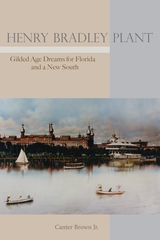 Henry Bradley Plant: Gilded Age Dreams for Florida and a New South
Canter Brown Jr.
University of Alabama Press, 2020 The first biography of Henry Bradley Plant, the entrepreneur and business magnate considered the father of modern Florida
In this landmark biography, Canter Brown Jr. makes evident the extent of Henry Bradley Plant’s influences throughout North, Central, and South America as well as his role in the emergence of integrated transportation and a national tourism system. One of the preeminent historians of Florida, Brown brings this important but understudied figure in American history to the foreground.
Henry Bradley Plant: Gilded Age Dreams for Florida and a New South carefully examines the complicated years of adventure and activity that marked Plant’s existence, from his birth in Connecticut in 1819 to his somewhat mysterious death in New York City in 1899. Brown illuminates Plant’s vision and perspectives for the state of Florida and the country as a whole and traces many of his influences back to events from his childhood and early adulthood. The book also elaborates on Plant’s controversial Civil War relationships and his utilization of wartime earnings in the postwar era to invest in the bankrupt Southern rail lines. With the success of his businesses such as the Southern Express Company and the Tampa Bay Hotel, Plant transformed Florida into a hub for trade and tourism—traits we still recognize in the Florida of today.
This thoroughly researched biography fills important gaps in Florida’s social and economic history and sheds light on a historical figure to an extent never previously undertaken or sufficiently appreciated. Both informative and innovative, Brown’s volume will be a valuable resource for scholars and general readers interested in Southern history, business history, Civil War–era history, and transportation history.
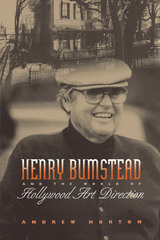 Henry Bumstead and the World of Hollywood Art Direction
By Andrew Horton
University of Texas Press, 2003 From a hotel in Marrakech in The Man Who Knew Too Much, to small-town Alabama in To Kill a Mockingbird, to Mission Control in Space Cowboys, creating a fictional, yet wholly believable world in which to film a movie has been the passion and life's work of Henry Bumstead, one of Hollywood's most celebrated production designers. In a career that has spanned nearly seventy years, Bumstead has worked on more than one hundred movies and television films. His many honors include Academy Awards for Art Direction for To Kill a Mockingbird and The Sting, as well as nominations for Vertigo and The Unforgiven. This popularly written and extensively illustrated book tells the intertwining stories of Henry Bumstead's career and the evolution of Hollywood art direction. Andrew Horton combines his analysis of Bumstead's design work with wide-ranging interviews in which Bumstead talks about working with top directors, including Alfred Hitchcock, George Roy Hill, Robert Mulligan, and Clint Eastwood, as well as such stars as Paul Newman, Robert Redford, Doris Day, Jimmy Stewart, Sidney Poitier, Bill Cosby, Jerry Lewis, and James Cagney. Numerous production drawings, storyboards, and film stills illustrate how Bumstead's designs translated to film. This portrait of Bumstead's career underscores an art director's crucial role in shaping the look of a film and also tracks the changes in production design from the studio era through location shooting to today's use of high-tech special effects.
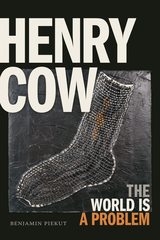 Henry Cow: The World Is a Problem
Benjamin Piekut
Duke University Press, 2019 In its open improvisations, lapidary lyrics, errant melodies, and relentless pursuit of spontaneity, the British experimental band Henry Cow pushed rock music to its limits. Its rotating personnel, sprung from rock, free jazz, and orchestral worlds, synthesized a distinct sound that troubled genre lines, and with this musical diversity came a mixed politics, including Maoism, communism, feminism, and Italian Marxism. In Henry Cow: The World Is a Problem Benjamin Piekut tells the band’s story—from its founding in Cambridge in 1968 and later affiliation with Virgin Records to its demise ten years later—and analyzes its varied efforts to link aesthetics with politics. Drawing on ninety interviews with Henry Cow musicians and crew, letters, notebooks, scores, journals, and meeting notes, Piekut traces the group’s pursuit of a political and musical collectivism, offering up its history as but one example of the vernacular avant-garde that emerged in the decades after World War II. Henry Cow’s story resonates far beyond its inimitable music; it speaks to the avant-garde’s unpredictable potential to transform the world.
Henry Darwin Rogers, 1808–1866: American Geologist
Patsy Gerstner
University of Alabama Press, 1994 Henry Darwin Rogers was one of the first professional geologists in the United States. He directed two of the earliest state geological surveys--New Jersey and Pennsylvania--in the mid-1830s. His major interest was Pennsylvania, with its Appalachian Mountains, which Rogers saw as great folds of sedimentary rock. He belived that an interpretation of these folds would lead to an understanding of the dynamic processes that had shaped the earth. From Rogers' efforts to explain these Pennsylvania folds came the first uniquely American theory of mountain elevation, a theory that Rogers personally considered his most significant achievement.
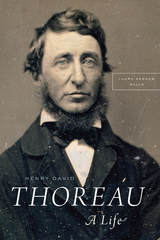 Henry David Thoreau: A Life
Laura Dassow Walls
University of Chicago Press, 2017 “Walden. Yesterday I came here to live.” That entry from the journal of Henry David Thoreau, and the intellectual journey it began, would by themselves be enough to place Thoreau in the American pantheon. His attempt to “live deliberately” in a small woods at the edge of his hometown of Concord has been a touchstone for individualists and seekers since the publication of Walden in 1854.
But there was much more to Thoreau than his brief experiment in living at Walden Pond. A member of the vibrant intellectual circle centered on his neighbor Ralph Waldo Emerson, he was also an ardent naturalist, a manual laborer and inventor, a radical political activist, and more. Many books have taken up various aspects of Thoreau’s character and achievements, but, as Laura Dassow Walls writes, “Thoreau has never been captured between covers; he was too quixotic, mischievous, many-sided.” Two hundred years after his birth, and two generations after the last full-scale biography, Walls restores Henry David Thoreau to us in all his profound, inspiring complexity.
Walls traces the full arc of Thoreau’s life, from his early days in the intellectual hothouse of Concord, when the American experiment still felt fresh and precarious, and “America was a family affair, earned by one generation and about to pass to the next.” By the time he died in 1862, at only forty-four years of age, Thoreau had witnessed the transformation of his world from a community of farmers and artisans into a bustling, interconnected commercial nation. What did that portend for the contemplative individual and abundant, wild nature that Thoreau celebrated?
Drawing on Thoreau’s copious writings, published and unpublished, Walls presents a Thoreau vigorously alive in all his quirks and contradictions: the young man shattered by the sudden death of his brother; the ambitious Harvard College student; the ecstatic visionary who closed Walden with an account of the regenerative power of the Cosmos. We meet the man whose belief in human freedom and the value of labor made him an uncompromising abolitionist; the solitary walker who found society in nature, but also found his own nature in the society of which he was a deeply interwoven part. And, running through it all, Thoreau the passionate naturalist, who, long before the age of environmentalism, saw tragedy for future generations in the human heedlessness around him.
“The Thoreau I sought was not in any book, so I wrote this one,” says Walls. The result is a Thoreau unlike any seen since he walked the streets of Concord, a Thoreau for our time and all time.
Henry Ford and Grass-roots America
Reynold M. Wik
University of Michigan Press, 1973 “This is both a biography of Henry Ford, American folk hero, and a study of the sociohistorical impact of the often idiosyncratic ideas and most of all his Tin Lizzie on rural America… the result is a book of considerable worth, perhaps the single best volume yet published on Ford.”
–Kirkus Reviews
“…a unique social history of the period. The book has nostalgic value for all over 40, the humor of a naïve America for young people, and social and technical history for the scholar.”
–Robert J. Havlik, Library Journal
“…the underlying theme is how Ford became a folk hero to rural America… This well written book not only supplements… previous studies… but helps to illuminate American values and attitudes during the 1920’s.”
–Choice
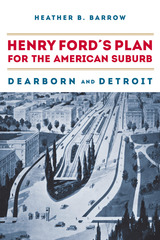 Henry Ford's Plan for the American Suburb: Dearborn and Detroit
Heather B. Barrow
Northern Illinois University Press, 2018 Around Detroit, suburbanization was led by Henry Ford, who not only located a massive factory over the city’s border in Dearborn, but also was the first industrialist to make the automobile a mass consumer item. So, suburbanization in the 1920s was spurred simultaneously by the migration of the automobile industry and the mobility of automobile users. A welfare capitalist, Ford was a leader on many fronts—he raised wages, increased leisure time, and transformed workers into consumers, and he was the most effective at making suburbs an intrinsic part of American life. The decade was dominated by this new political economy—also known as “Fordism”—linking mass production and consumption. The rise of Dearborn demonstrated that Fordism was connected to mass suburbanization as well. Ultimately, Dearborn proved to be a model
that was repeated throughout the nation, as people of all classes relocated to suburbs, shifting away from central cities.
Mass suburbanization was a national phenomenon. Yet the example of Detroit is an important baseline since the trend was more discernable there than elsewhere. Suburbanization, however, was never a simple matter of outlying communities growing in parallel with cities. Instead, resources were diverted from central cities as they were transferred to the suburbs. The example of the Detroit metropolis asks whether the mass suburbanization which originated there represented the “American dream,” and if so, by whom and at what cost. This book will appeal to those interested in cities and suburbs, American studies, technology and society, political economy, working-class culture, welfare state systems, transportation, race relations, and business management.
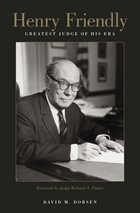 Henry Friendly, Greatest Judge of His Era
David M. Dorsen
Harvard University Press, 2012 Henry Friendly is frequently grouped with Oliver Wendell Holmes, Louis Brandeis, Benjamin Cardozo, and Learned Hand as the best American jurists of the twentieth century. In this first, comprehensive biography of Friendly, David M. Dorsen opens a unique window onto how a judge of this caliber thinks and decides cases, and how Friendly lived his life.
During his time on the Court of Appeals for the Second Circuit (1959–1986), Judge Friendly was revered as a conservative who exemplified the tradition of judicial restraint. But he demonstrated remarkable creativity in circumventing precedent and formulating new rules in multiple areas of the law. Henry Friendly, Greatest Judge of His Era describes the inner workings of Friendly’s chambers and his craftsmanship in writing opinions. His articles on habeas corpus, the Fourth Amendment, self-incrimination, and the reach of the state are still cited by the Supreme Court.
Dorsen draws on extensive research, employing private memoranda between the judges and interviews with all fifty-one of Friendly’s law clerks—a veritable Who’s Who that includes Chief Justice John R. Roberts, Jr., six other federal judges, and seventeen professors at Harvard, Yale, Stanford, and elsewhere. In his Foreword, Judge Richard Posner writes: “David Dorsen has produced the most illuminating, the most useful, judicial biography that I have ever read . . . We learn more about the American judiciary at its best than we can learn from any other . . . Some of what I’ve learned has already induced me to make certain changes in my judicial practice.”
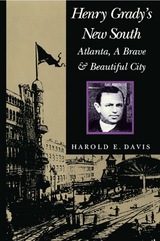 Henry Grady's New South: Atlanta, a Brave and Beautiful City
Harold E. Davis
University of Alabama Press, 1990 The popular image of Henry W. Grady is that of a champion of the postbellum South, a region that would forgive the North for defeating it and would mobilize its own many resources for hones business and agricultural competition. Biographies and collections of Grady’s essays and speeches that appeared shortly after his death enhanced this image, and for a half-century, Grady was considered the personification of the New South Movement, a movement which promised industrialization for the South, an improved Southern agriculture, and justice and opportunity for black Southerners. As managing editor of the Atlanta Constitution, he espoused the New South throughout the nation and was in demand as a speaker for audiences in New York and Boston. Through extensive research, focusing on the decade of the 1880s in Georgia, Davis demonstrates that although Grady said all the right things to show that he wished to industrialize the South and that he was committed to the improvement of agriculture and fairness in racial matters, in fact he spent most of his efforts on behalf of Atlanta. His major interest was in making a difference for that city, leaving the rest of the South to enjoy whatever Atlanta could not garner for itself.
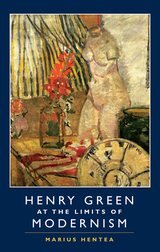 Henry Green at the Limits of Modernism
Marius Hentea
Sussex Academic Press, 2022 Although Henry Green has been recognised by James Wood, David Lodge and John Updike as one of the most innovative writers of his time, his significant achievement remains largely neglected. Henry Green at the Limits of Modernism provides a theoretically sophisticated and historically nuanced reading of Green's novels and makes the case for Green's importance in reconsiderations of modernism, late modernism and post-war realism. This work is the most ambitious reassessment of Green's oeuvre to date and thus critical reading for scholars interested in modernism, late modernism, and the evolution of British post-war fiction. Arguing against the predominant view of Green's fiction as an autonomous literary construction, the work connects Green to a number of social and literary contexts, resulting in fresh readings of his novels and also a greater accessibility to an author long considered 'oblique' and 'elusive'. With significant investigations of Green's connection to his literary generation, his multifaceted and formally innovative handling of social class, his negotiations of narrative authority and authorship, and the importance of disability studies to understanding Green's fiction, this study charts the complex trajectories of Green's fiction against both social and literary contexts. The work also moves beyond the narrow confines of British literature to explore Green's connections to broader trends in European literature.
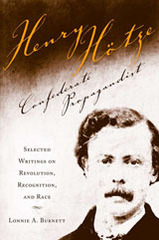 Henry Hotze, Confederate Propagandist: Selected Writings on Revolution, Recognition, and Race
Lonnie A. Burnett
University of Alabama Press, 2008 The life of Henry Hotze encompasses the history of antebellum Mobile, Confederate military recruitment, Civil War diplomacy and international intrigue, and the development of a Darwinian-based effort to find scientific evidence for differences among human “races.” When civil war broke out in his adopted country, Hotze enthusiastically assumed the mindset of the young Southern secessionist, serving first as newspaper correspondent and Confederate soldier until the Confederate government selected him as an agent, with instructions to promote the Southern cause in London. There he founded, edited, and wrote most of the content for The Index, a pro-Southern paper, as a part of the effort to convince the British Government to extend recognition to the Confederacy.
Among the arguments Hotze employed were adaptations of the scientific racism of the period, which attempted to establish a rational basis for assumptions of racial difference. After the collapse of the Confederacy in 1865, Hötze remained in Europe, where he became an active partisan and promoter of the ideas of Arthur de Gobineau (1816–1882) whose work Essai sur L’inégalité des Races Humaines was a founding document in racism’s struggle for intellectual respectability.
This work consists of a biographical essay on Hotze; his contributions to Mobile newspapers during his military service in 1861; his correspondence with Confederate officials during his service in London; articles he published in London to influence British and European opinion; and his correspondence with, and published work in support of, Gobineau.
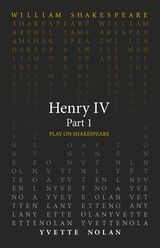 Henry IV Part 1
William Shakespeare
Arizona Center for Medieval and Renaissance Studies, 2021 The two-part tale of King Henry IV, rewritten with new language for the twenty-first century.
Shakespeare’s two Henry IV plays follow the exploits of King Henry IV after usurping the crown from his cousin Richard II. Featuring some of Shakespeare’s most recognizable characters such as Prince Hal and the roguish Sir John Falstaff, Henry IV, Part 1 delves into complicated questions of loyalty and kingship on and off the battlefield. Henry IV, Part 2 follows Prince Hal as he grapples with his eventual ascent to the throne and his increasingly strained relationship with Falstaff. As the king falls sick and Hal’s ascent appears imminent, Hal’s decisions hold significant implications for all those around him. Modernizing the language of the two plays, Yvette Nolan’s translation carefully works at the seeds sown by Shakespeare—bringing to new life the characters and dramatic arcs of the original.
These translations of Henry IV were written as part of the Oregon Shakespeare Festival’s Play On! project, which commissioned new translations of thirty-nine Shakespeare plays. These translations present work from “The Bard” in language accessible to modern audiences while never losing the beauty of Shakespeare’s verse. Enlisting the talents of a diverse group of contemporary playwrights, screenwriters, and dramaturges from diverse backgrounds, this project reenvisions Shakespeare for the twenty-first century. These volumes make these works available for the first time in print—a new First Folio for a new era.
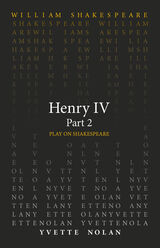 Henry IV Part 2
William Shakespeare
Arizona Center for Medieval and Renaissance Studies, 2021 The two-part tale of King Henry IV, rewritten with new language for the twenty-first century.
Shakespeare’s two Henry IV plays follow the exploits of King Henry IV after usurping the crown from his cousin Richard II. Featuring some of Shakespeare’s most recognizable characters such as Prince Hal and the roguish Sir John Falstaff, Henry IV, Part 1 delves into complicated questions of loyalty and kingship on and off the battlefield. Henry IV, Part 2 follows Prince Hal as he grapples with his eventual ascent to the throne and his increasingly strained relationship with Falstaff. As the king falls sick and Hal’s ascent appears imminent, Hal’s decisions hold significant implications for all those around him. Modernizing the language of the two plays, Yvette Nolan’s translation carefully works at the seeds sown by Shakespeare—bringing to new life the characters and dramatic arcs of the original.
These translations of Henry IV were written as part of the Oregon Shakespeare Festival’s Play On! project, which commissioned new translations of thirty-nine Shakespeare plays. These translations present work from “The Bard” in language accessible to modern audiences while never losing the beauty of Shakespeare’s verse. Enlisting the talents of a diverse group of contemporary playwrights, screenwriters, and dramaturges from diverse backgrounds, this project reenvisions Shakespeare for the twenty-first century. These volumes make these works available for the first time in print—a new First Folio for a new era.
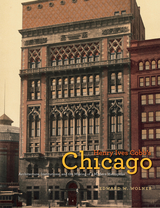 Henry Ives Cobb's Chicago: Architecture, Institutions, and the Making of a Modern Metropolis
Edward W. Wolner
University of Chicago Press, 2011 When championing the commercial buildings and homes that made the Windy City famous, one can’t help but mention the brilliant names of their architects—Daniel Burnham, Louis Sullivan, and Frank Lloyd Wright, among others. But few people are aware of Henry Ives Cobb (1859–1931), the man responsible for an extraordinarily rich chapter in the city’s turn-of-the-century building boom, and fewer still realize Cobb’s lasting importance as a designer of the private and public institutions that continue to enrich Chicago’s exceptional architectural heritage. Henry Ives Cobb’s Chicago is the first book about this distinguished architect and the magnificent buildings he created, including the Newberry Library, the Chicago Historical Society, the Chicago Athletic Association, the Fisheries Building for the 1893 World’s Fair, and the Chicago Federal Building. Cobb filled a huge institutional void with his inventive Romanesque and Gothic buildings—something that the other architect-giants, occupied largely with residential and commercial work, did not do. Edward W. Wolner argues that these constructions and the enterprises they housed—including the first buildings and master plan for the University of Chicago—signaled that the city had come of age, that its leaders were finally pursuing the highest ambitions in the realms of culture and intellect. Assembling a cast of colorful characters from a free-wheeling age gone by, and including over 140 images of Cobb’s most creative buildings, Henry Ives Cobb’s Chicago is a rare achievement: a dynamic portrait of an architect whose institutional designs decisively changed the city’s identity during its most critical phase of development.
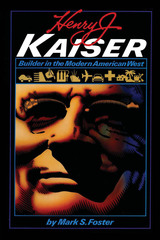 Henry J. Kaiser: Builder in the Modern American West
By Mark S. Foster
University of Texas Press, 1989 In the 1940s Henry J. Kaiser was a household name, as familiar then as Warren Buffett and Donald Trump are now. Like a Horatio Alger hero, Kaiser rose from lower-middle-class origins to become an enormously wealthy entrepreneur, building roads, bridges, dams, and housing. He established giant businesses in cement, aluminum, chemicals, steel, health care, and tourism. During World War II, his companies built cargo planes and Liberty ships. After the war, he manufactured the Kaiser-Frazer automobile. Along the way, he also became a major force in the development of the western United States, including Hawaii. Henry J. Kaiser: Builder in the Modern American West is the first biography of this remarkable man. Drawing on a wealth of archival material never before utilized, Mark Foster paints an evenhanded portrait of a man of driving ambition and integrity, perhaps the ultimate "can-do" capitalist. He covers Kaiser's entire life (1882–1967), emphasizing many business ventures. He demonstrates that Kaiser was the prototypical "frontier" entrepreneur who often used government and union support to tame the "wilderness." Though today the Kaiser industries are no longer under family management, the Kaiser legacy remains great. Kaiser played a major role in building the Hoover, Bonneville, Grand Coulee, and Shasta dams. The Kaiser-Permanente Medical Care Program still provides comprehensive health care for millions of subscribers. Kaiser-planned communities remain in Los Angeles; San Francisco; Portland, Oregon; and Boulder City, Nevada. Kaiser Engineers was actively engaged in hundreds of huge construction jobs across the nation and around the world. U.S. and business historians, scholars of the modern West, and general readers will all find much to absorb them in this well-written biography.
Henry James and the Mass Market
Marcia Jacobson
University of Alabama Press, 1983 The author considers James’s work from The Bostonians to The Awkward Age – from 1883 to 1889 – a period in which James was resident in London and searching for material to replace the “international theme.” Jacobson considers this context in relation to the emergence of a mass market and sees James’s major fiction of this period as an attempt to exploit the conventions of popular fiction in an analysis of his society’s assumptions. James’s work at this time must also be viewed as an artist’s effort to secure popular attention and acceptance. Such an approach allows Jacobson to treat James’s “French period” and his “experimental period” as a unit and to counter the myth that James was an ivory tower artist.
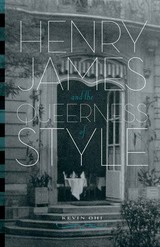 Henry James and the Queerness of Style
Kevin Ohi
University of Minnesota Press, 2010 Kevin Ohi begins this energetic book with the proposition that to read Henry James—particularly the late texts—is to confront the queer potential of style and the traces it leaves on the literary life. In contrast to other recent critics, Ohi asserts that James’s queerness is to be found neither in the homoerotic thematics of the texts, however startlingly explicit, nor in the suggestions of same-sex desire in the author’s biography, however undeniable, but in his style.
For Ohi, there are many elements in the style that make James’s writing queer. But if there is a thematic marker, Ohi shows through his careful engagements with these texts, it is belatedness. The recurrent concern with belatedness, Ohi explains, should be understood not psychologically but stylistically, not as confessing the sad predicament of being out of sync with one’s life but as revealing the consequences of style’s refashioning of experience. Belatedness marks life’s encounter with style, and it describes an experience not of deprivation but of the rich potentiality of the literary work that James calls “freedom.” In Ohi’s reading, belatedness is the indicator not of sublimation or repression, nor of authorial self-sacrifice, but of the potentiality of the literary—and hence of the queerness of style.
Presenting original readings of a series of late Jamesian texts, the book also represents an exciting possibility for queer theory and literary studies in the future: a renewed attention to literary form and a new sounding—energized by literary questions of style and form—of the theoretical implications of queerness.
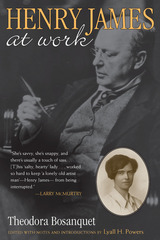 Henry James at Work
Theodora Bosanquet
University of Michigan Press, 2010 A new edition of the delightful 1924 memoir by James’s longtime secretary, with a biographical essay and excerpts from her diaries
Theodora Bosanquet was Henry James's secretary from 1907 until his death in 1916, one of the most significant periods of his long writing career. Her memoir Henry James at Work, originally published by Leonard and Virginia Woolf's Hogarth Press in 1924, recounts Bosanquet's association with James and provides a lively and engaging commentary on James's milieu, preferences, and attitudes, as well as on his process of writing and revision. Bosanquet is an intelligent and observant witness and reporter, and her objective and comparatively unbiased point of view makes the memoir especially valuable.
This enlarged and annotated edition rescues Bosanquet from the shadows of literary history and shows her to be a fascinating figure in her own right, a skilled writer and editor, an early feminist, and a contemporary of the Bloomsbury literary community. The book is enhanced by an essay about Bosanquet and her circle, and fascinating snippets from her diaries and letters, now in the Harvard University archives.
Soon after Henry James hired Theodora Bosanquet in 1907, the well-educated and dedicated Bosanquet became indispensable to James. In addition to the memoir Henry James at Work she published two other books, critical studies on Harriet Martineau and Paul Valéry. Following James’s death she became Executive Secretary of the International Federation of University Women and traveled extensively in support of the women’s suffrage movement. From 1935 to 1958 she was literary editor, then director, of the publication Time and Tide.
Lyall H. Powers is Professor of English Emeritus at the University of Michigan and author of numerous books, including Alien Heart: The Life and Work of Margaret Laurence.
Praise for Henry James at Work:
“She’s savvy, she’s snappy, and there’s usually a touch of sass . . . . [T]his ‘salty, hearty’ lady . . . worked so hard to keep ‘a lonely old artist man’—Henry James—from being interrupted.”
—Larry McMurtry “I’m sure [your book] ought to have a success with anyone who cared for Henry James and his work, and I think we are very lucky to get it.” —Letter from Virginia Woolf to Theodora Bosanquet, 1924 “It's fascinating to encounter, in the era just before high modernism, a female intellectual like Bosanquet—one as fully engaged in the life of ideas and cultural production as her male counterparts—making as much of her putatively secondary status as she possibly could. The book is important as a primary document in its own right as well as a gloss on the methods and material of the magisterial James.” —Jonathan Freedman, University of Michigan
 Henry James: Selected Letters
Henry James
Harvard University Press, 1987 "He was a supreme artist in the intimacies and connections that bind people together or tear them apart," says Leon Edel in his introduction to this collection of Henry James's best letters. Edel has chosen, from the four-volume epistolarium already published, those letters which especially illuminate James's writing, his life, his thoughts and fancies, his literary theories, and his most meaningful friendships. In addition, there are two dozen letters that have never before been printed.
In its unity, its elegance, and its reflection of almost a century of Anglo-American life and letters, this correspondence can well be said to belong to literature as well as to biography. Besides epistles to James's friends and family--including his celebrated brother, William--there are letters to notables such as Flaubert and Daudet in France; Stevenson, Gosse, Wells, and Conrad in England; and Americans from William Dean Howells to Edith Wharton. The latter correspondence, in particular, enlarges our understanding of James's complex involvements with Wharton and her circle; among the previously unpublished letters are several to Wharton's rakish lover, Morton Fullerton.
This masterly selection allows us to observe the precocious adolescent, the twenty-six-year-old setting out for Europe, the perceptive traveler in Switzerland and Italy, and the man-about-London consorting with Leslie Stephen and William Morris, meeting Darwin and Rossetti, hearing Ruskin lecture, visiting George Eliot. The letters describe periods of stress as well as happiness, failure as well as success, loneliness as well as sociability. They portray in considerable psychological depth James's handling of his problems (particularly with his family), and they allow us to see him adjust his mask for each correspondent.
Henry James's Criticism
Morris Roberts
Harvard University Press English novelists as a rule make little effort to relate theory and practice; but with Henry James the effort was constant, and his elaboration of technique, his proneness to identify moral and aesthetic perfection, his astonishing flexibility of style, are all aspects of a consciously evolved theory. Mr. Roberts in this volume analyses James’s artistic faith, the ideas enmeshed in the “story of one's story,” as James calls his Prefaces. He thus traces James’s development as a critic from rather crude beginnings in book-reviewing to the finely wrought criticism of his mature years, which for sensitiveness and perfection of form is perhaps unequalled in English.
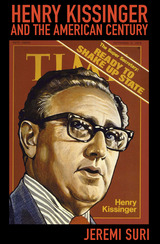 Henry Kissinger and the American Century
Jeremi Suri
Harvard University Press, 2007 What made Henry Kissinger the kind of diplomat he was? What experiences and influences shaped his worldview and provided the framework for his approach to international relations? Jeremi Suri offers a thought-provoking, interpretive study of one of the most influential and controversial political figures of the twentieth century.
Drawing on research in more than six countries in addition to extensive interviews with Kissinger and others, Suri analyzes the sources of Kissinger's ideas and power and explains why he pursued the policies he did. Kissinger's German-Jewish background, fears of democratic weakness, belief in the primacy of the relationship between the United States and Europe, and faith in the indispensable role America plays in the world shaped his career and his foreign policy. Suri shows how Kissinger's early years in Weimar and Nazi Germany, his experiences in the U.S. Army and at Harvard University, and his relationships with powerful patrons--including Nelson Rockefeller and Richard Nixon--shed new light on the policymaker.
Kissinger's career was a product of the global changes that made the American Century. He remains influential because his ideas are rooted so deeply in dominant assumptions about the world. In treating Kissinger fairly and critically as a historical figure, without polemical judgments, Suri provides critical context for this important figure. He illuminates the legacies of Kissinger's policies for the United States in the twenty-first century.
Henry L. Brunk and Brunk's Comedians: Tent Repertoire Empire of the Southwest
Jerry L. Martin
University of Wisconsin Press, 1984 Tent repertoire theatre as a form of popular entertainment caught on in the late 19th century, had its heyday in the 1920s, and was finished by the Depression and World War II gasoline rationing. The author examines this rise and fall in context of an increasingly urbanized society.
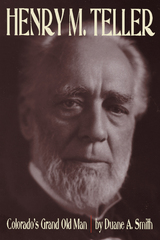 Henry M. Teller: Colorado's Grand Old Man
Duane A. Smith
University Press of Colorado, 2002 Serving longer in the U.S. Senate than any other Coloradan, Henry M. Teller was one of the Centennial State's greatest statesmen and political leaders. Now Duane A. Smith, author of Horace Tabor: His Life and the Legend, rescues this larger-than-life figure from obscurity in this new and definitive biography of the Central City lawyer turned Colorado senator. Teller was a prime example of what a politician should be in an era when elected officials left a great deal to be desired. As Colorado's representative, Teller stated his beliefs and stuck by them. Not all agreed with him, but all admired him for his honesty and integrity. His legal career in Colorado encompassed much of the early legislation in the territory, such as developing mining law and the organization of the Colorado Central Railroad, while his Washington career touched on nearly every important western economic development issue that occurred in Colorado between 1876 and 1909. Teller declared to the U.S. Congress that Colorado was a part of the nation, and that the West deserved a say in its decisions. Incorporating extensive primary and secondary sources, federal documents, the Teller papers, a wealth of newspaper articles, and a superb array of photographs, Smith's biography will be a wonderful source for anyone interested in Colorado history and the political past of the state and nation.
 Henry Mancini: Reinventing Film Music
John Caps
University of Illinois Press, 2012 Through film composer Henry Mancini, mere background music in movies became part of pop culture--an expression of sophistication and wit with a modern sense of cool and a lasting lyricism that has not dated. The first comprehensive study of Mancini's music, Henry Mancini: Reinventing Film Music describes how the composer served as a bridge between the Big Band period of World War II and the impatient eclecticism of the Baby Boomer generation, between the grand formal orchestral film scores of the past and a modern American minimalist approach. Mancini's sound seemed to capture the bright, confident, welcoming voice of the middle class's new efficient life: interested in pop songs and jazz, in movie and television, in outreach politics but also conventional stay-at-home comforts. As John Caps shows, Mancini easily combined it all in his music. Mancini wielded influence in Hollywood and around the world with his iconic scores: dynamic jazz for the noirish detective TV show Peter Gunn, the sly theme from The Pink Panther, and his wistful folk song "Moon River" from Breakfast at Tiffany's. Through insightful close readings of key films, Caps traces Mancini's collaborations with important directors and shows how he homed in on specific dramatic or comic aspects of the film to create musical effects through clever instrumentation, eloquent musical gestures, and meaningful resonances and continuities in his scores. Accessible and engaging, this fresh view of Mancini's oeuvre and influence will delight and inform fans of film and popular music. John Caps is an award-winning writer and producer of documentaries. He served as producer, writer, and host for four seasons of the National Public Radio syndicated series The Cinema Soundtrack, featuring interviews with and music of film composers. He lives in Baltimore, Maryland. A volume in the series Music in American Life
Henry Miller: Expatriate
Annette Baxter
University of Pittsburgh Press, 1961
“In 1934 the city of Paris saw the birth of a book, published in English, which achieved instantaneous notoriety. Henry Miller’s Tropic of Cancer unfolded the adventures of a loquacious, free-wheeling, appallingly uninhibited American expatriate. But the rollicking eloquence, determined gusto, and explosive imagery of this modern Rabelais barely concealed the figure of a lonely American writer, thoroughly immersed in a legendary American situation.”—from the Introduction
Baxter examines Miller’s relationship with his native land and with Europe through his writings and in the comments of his critics and friends, navigating through the inconsistencies and the evolution of his opinions as his experiences changed. Her insights offer a complex, nuanced evaluation of Miller as writer and as expatriate.
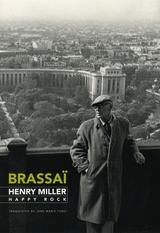 Henry Miller, Happy Rock
Brassaï
University of Chicago Press, 2002 "In a world like this one, it's difficult to devote oneself to art body and soul. To get published, to get exhibited, to get produced often requires ten or twenty years of patient, intense labor. I spent half my life at it! And how do you survive during all that time? Beg? Live off other people until you're successful? What a dog's life! I know something about that! You're always recognized too late. And today, it's no longer enough to have talent, originality, to write a good or beautiful book. One must be inspired! Not only touch the public but create one's own public. Otherwise, you're headed straight for suicide."
That's Henry Miller's advice for young aspiring artists, as remembered by his very good friend Brassaï in this lively book. One of two that Brassaï wrote about the man who called himself a "happy rock," this volume covers their lives and friendship from the 1950s to 1973. Over the course of a number of warm, intimate conversations, Brassaï and Miller revisit their careers; discuss art, literature, Paris, Greece, Japan, World War II, and more; and consider the lives and works of many others in their circle, including Lawrence Durrell, Henri Matisse, Salvador Dalí, Georges Simenon, André Malraux, Hans Reichel, Paul Klee, and Amedeo Modigliani. Throughout Miller's zest for life shines through, as do his love of art and his passionate intensity for just about everything he does, from discussing a movie or play he'd just seen to reminiscing about a decades-long love.
Brassaï's Henry Miller, Happy Rock presents a vivid portrait of two close friends who thoroughly enjoy each other's company—and just happen to be world—famous artists too.
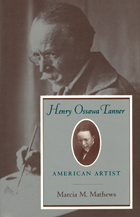 Henry Ossawa Tanner: American Artist
Marcia M. Mathews
University of Chicago Press, 1995 Mathews's standard biography of Henry Ossawa Tanner (1859-1937), based on extensive research in archives in this country and family records in France. An important artist in the salons of Paris, Tanner was born and studied in Philadelphia but left America for Europe, where his race would not stand in the way of his ambition. Providing a full account of the artist's life and art, Henry Ossawa Tanner gives readers insight into the art trends of the nineteenth and early twentieth centuries as well as into the struggle of African Americans of this period.
"[Tanner] ranks not only as the first truly distinguished Negro American artist but as one of America's first outstanding successes in the salons of Europe. In this work [Mathews] has significantly added to our knowledge of the history of American art."—John Hope Franklin, from the Foreword
"The book gives the main facts of Tanner's life and successfully places his artistic work in its historic context....It is a welcome and useful volume."—August Meier, Journal of American History
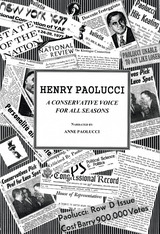 Henry Paolucci: A Conservative Voice for All Seasons
Anne Paolucci
Intercollegiate Studies Institute, 2010
Praise for Henry Paolucci: A Conservative Voice for All Seasons
“During the Conservative Party’s formative years, Henry Paolucci combined tactical advice with an uncompromising adherence to principle. He was a powerful orator, and his special blend of populist conservatism contributed to his party’s extraordinary inroads among traditional Democrats. This book adds to our knowledge of a third party that has had a profound impact on the Empire State’s politics.”
—James L. Buckley, former U.S. senator
“Before there was U.S. Senator James Buckley, there was New York City mayoral candidate William F. Buckley Jr., and before there was Bill Buckley, there was Henry Paolucci, 1964 senatorial candidate of the Conservative Party of New York State, whose unflinching stand for the right ideas and policies confounded liberals and inspired conservatives. Anne Paolucci’s clear-eyed portrait of her late husband is filled with lessons for today.”
—Lee Edwards, author of William F. Buckley Jr.: The Maker of a Movement
“An important account of the stellar role Professor Henry Paolucci played within the Conservative Party in its formative stages. . . . We owe a great debt of gratitude to Anne Paolucci for this excellent review of her husband’s life as a conservative thinker, scholar, and leader.”
—Serphin R. Maltese, former chairman of the New York State Conservative Party, former New York state senator
“When I was privileged to run for governor on the Conservative line, I used Henry Paolucci’s campaign as my guidepost. With this fiftieth-anniversary celebration, it would be wise for Conservative leaders to recall Henry’s contributions and to employ them as a standard for the party and for the nation as a whole.”
—Herbert London, president emeritus of Hudson Institute
“Fascinating. Anne Paolucci provides an important overview of the many contributions her husband made to the conservative cause in America.”
—Wayne Thorburn, author of A Generation Awakes: Young Americans for Freedom and the Creation of the Conservative Movement
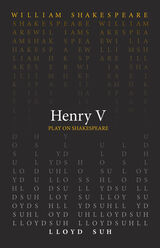 Henry V
William Shakespeare
Arizona Center for Medieval and Renaissance Studies, 2021 Playwright Lloyd Suh reimagines the political intrigue and high drama of Henry V for twenty-first-century audiences.
Shakespeare’s Henry V is a play about nationalism, war, and how we remember history. Known for its rousing speeches and miraculous outcomes, the play has long had a life beyond the stage and page, its themes and rhetoric common points of reference in politics. In this modern translation of Henry V, Lloyd Suh has created a new interpretation that is distinctly his own while protecting the mystery of Shakespeare’s drama. Suh’s translation focuses on the actors and the staging, channeling the theatrical nature of Shakespeare’s play for a new audience.
This translation of Henry V was written as part of the Oregon Shakespeare Festival’s Play On! project, which commissioned new translations of thirty-nine Shakespeare plays. These translations present the Bard’s work in language accessible to modern audiences while never losing the beauty of Shakespeare’s verse. Enlisting the talents of a diverse group of contemporary playwrights, screenwriters, and dramaturges from diverse backgrounds, this project reenvisions Shakespeare for the twenty-first century. These volumes make these works available for the first time in print—a new First Folio for a new era.
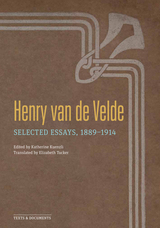 Henry van de Velde: Selected Essays, 1889–1914
Henry van de Velde
J. Paul Getty Trust, The, 2022 The first English collection of writings by Henry van de Velde, one of the most influential designers and theorists of the twentieth century.
Belgian artist, architect, designer, and theorist Henry van de Velde (1863–1957) was a highly original and influential figure in Europe beginning in the 1890s. A founding member of the Art Nouveau and Jugendstil movements, he also directed the Grand-Ducal Saxon School of Arts and Crafts in Weimar, Germany, which eventually became the Bauhaus under Walter Gropius.
This selection of twenty-six essays, translated from French and German, includes van de Velde’s writings on William Morris and the English Arts and Crafts movement, Neo-Impressionist painting, and relationships between ornament, line, and abstraction in German aesthetics. The texts trace the evolution of van de Velde’s thoughts during his most productive period as a theorist in the artistic debates in France, Germany, Belgium, and the Netherlands. Katherine M. Kuenzli expertly guides readers to see how van de Velde’s writings reconcile themes of aesthetics and function, and expression and reason, throughout the artistic periods and regions represented by these texts. With introductory discussions of each essay and full annotations, this is an essential volume for a broad range of scholars and students of the history of fine and applied arts and ideas.
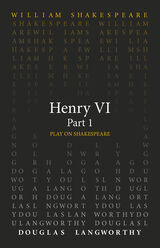 Henry VI, Part 1
William Shakespeare
Arizona Center for Medieval and Renaissance Studies, 2021 New versions of Shakespeare’s history plays from director and translator Douglas Langworthy.
In his three Henry VI plays, Shakespeare tackles the infamous Wars of the Roses and the fall of the House of Lancaster. In this translation of Henry VI, Part 1, Douglas Langworthy explores the initial unrest as a young Henry VI becomes king. Langworthy’s translation takes a deep dive into the language of Shakespeare. With a fine-tooth comb, he updates passages that are archaic and difficult to the modern ear and matches them with the syntax and lyricism of the rest of the play, essentially translating archaic Shakespeare to match contemporary Shakespeare.
This translation of Henry VI, Part 1 was written as part of the Oregon Shakespeare Festival’s Play On! project, which commissioned new translations of thirty-nine Shakespeare plays. These translations present the work of "The Bard" in language accessible to modern audiences while never losing the beauty of Shakespeare’s verse. Enlisting the talents of a diverse group of contemporary playwrights, screenwriters, and dramaturges from diverse backgrounds, this project reenvisions Shakespeare for the twenty-first century. These volumes make these works available for the first time in print—a new First Folio for a new era.
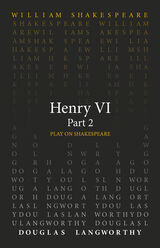 Henry VI, Part 2
William Shakespeare
Arizona Center for Medieval and Renaissance Studies, 2021 New versions of Shakespeare’s history plays from director and translator Douglas Langworthy.
In his three Henry VI plays, Shakespeare tackles the infamous Wars of the Roses and the fall of the House of Lancaster. In this translation of Henry VI, Part 2, Douglas Langworthy follows the increasing tensions as the Duke of York foments rebellion against the crown. Langworthy’s translation takes a deep dive into the language of Shakespeare. With a fine-tooth comb, he updates passages that are archaic and difficult to the modern ear, and matches them with the syntax and lyricism of the rest of the play, essentially translating archaic Shakespeare to match contemporary Shakespeare.
This translation of Henry VI, Part 2 was written as part of the Oregon Shakespeare Festival’s Play On! project, which commissioned new translations of thirty-nine Shakespeare plays. These translations present the work of "The Bard" in language accessible to modern audiences while never losing the beauty of Shakespeare’s verse. Enlisting the talents of a diverse group of contemporary playwrights, screenwriters, and dramaturges from diverse backgrounds, this project reenvisions Shakespeare for the twenty-first century. These volumes make these works available for the first time in print—a new First Folio for a new era.
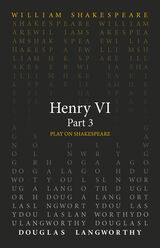 Henry VI, Part 3
William Shakespeare
Arizona Center for Medieval and Renaissance Studies, 2021 New versions of Shakespeare’s history plays from director and translator Douglas Langworthy.
In his three Henry VI plays, Shakespeare tackles the infamous Wars of the Roses and the fall of the House of Lancaster. In this translation of Henry VI, Part 3, Douglas Langworthy concludes the trilogy, tracking the final downfall of Henry VI and the rise of the House of York. Langworthy’s translation takes a deep dive into the language of Shakespeare. With a fine-tooth comb, he updates passages that are archaic and difficult to the modern ear, and matches them with the syntax and lyricism of the rest of the play, essentially translating archaic Shakespeare to match contemporary Shakespeare.
This translation of Henry VI, Part 3 was written as part of the Oregon Shakespeare Festival’s Play On! project, which commissioned new translations of thirty-nine Shakespeare plays. These translations present the work of "The Bard" in language accessible to modern audiences while never losing the beauty of Shakespeare’s verse. Enlisting the talents of a diverse group of contemporary playwrights, screenwriters, and dramaturges from diverse backgrounds, this project reenvisions Shakespeare for the twenty-first century. These volumes make these works available for the first time in print—a new First Folio for a new era.
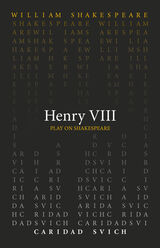 Henry VIII
William Shakespeare
Arizona Center for Medieval and Renaissance Studies, 2022 Caridad Svich offers a new take on the history play, which tells the story of Henry VIII’s marriage to Anne Boleyn.
Shakespeare’s Henry VIII is a story of a brazen race to power and the desire for an heir. Advised by Cardinal Wolsey, Henry VIII is caught between church and state as he meets Anne Boleyn and seeks to annul his marriage to Queen Katherine. This episodic and plot-driven play examines the machinations of royal power. Shakespeare’s Henry VIII, in this new translation by Caridad Svich, is a swift-moving, complex tale of intrigue.
This translation of Henry VIII was written as part of the Oregon Shakespeare Festival’s Play On! project, which commissioned new translations of thirty-nine Shakespeare plays. These translations present work from “The Bard” in language accessible to modern audiences while never losing the beauty of Shakespeare’s verse. Enlisting the talents of a diverse group of contemporary playwrights, screenwriters, and dramaturges from diverse backgrounds, this project reenvisions Shakespeare for the twenty-first century. These volumes make these works available for the first time in print—a new First Folio for a new era.
Henry Wadsworth Longfellow - American Writers 35: University of Minnesota Pamphlets on American Writers
Edward Hirsh
University of Minnesota Press, 1964 Henry Wadsworth Longfellow. To meet a need which had been felt for some time both in the United States and abroad, the pamphlet series, the University of Minnesota Pamphlets on American Writers, was established in 1959. By providing readable critical introductions to American Writers, the pamphlets were designed to meet the needs and tastes of mature students and readers of imaginative literature throughout the world. Each pamphlet presents a brief biography of a writer, a longer critical analysis and evaluation of his or her work, and a selected bibliography of his or her books and articles about him or her. Editors of the series were William Van O’Connor, Allen Tate, and Robert Penn Warren. There was an advisory board consisting of William Thorp, Karl Shapiro, and Philip Rahv.
Henry Ware Lawton: Union Infantryman, Frontier Soldier, Charismatic Warrior
Michael E. Shay
University of Missouri Press, 2016 Henry Ware Lawton’s nearly four decades as a professional soldier in the U.S. Army tie his story closely to that of America in the nineteenth century, from the Civil War to the settlement of the West, to the experiment with empire. Lawton served the country nearly uninterrupted from the day he enlisted at age 18—soon after Lincoln’s first call for volunteers to fight in the Civil War, where he earned a Medal of Honor—to his death at age 56, a major general in the Philippine War. In between, he fought in the Spanish-American War and the Indian Wars; during that time he rose to national prominence as the man who captured Geronimo.
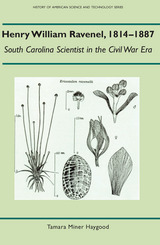 Henry William Ravenel, 1814-1887: South Carolina Scientist in the Civil War Era
Tamara Miner Haygood
University of Alabama Press, 1987 "Provides an engaging and illuminating view of the culture of the South and the study of natural history. . . . Ravenel's achievements, Haygood argues, refute Clement Eaton's contention that slavery stifled creative thought; they also modify the more extravagant claim for southern equality with northern science made in Thomas Cary Johnson's Scientific Interests in the Old South (1936)." — American Historical Review "Convincingly argues for the importance of these middle years to understanding American science and vividly illustrates the effect of the Civil War on science. . . . Ravenel, a geographically isolated planter with a college degree but no scientific training, managed to serve as one of America's leading mycologists, despite continual financial and medical problems and the disruption of the Civil War. This lively account of his life and work is at once inspiring and tragic."
Journal of the History of Biology "A thoroughly enjoyable biography of one of the important American naturalists, botanists, and mycologists of the 1800s. . . . Truly an outstanding contribution to the history of American science."
—Brittonia
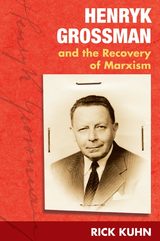 Henryk Grossman and the Recovery of Marxism
Rick Kuhn
University of Illinois Press, 2006 Rick Kuhn’s Henryk Grossman and the Recovery of Marxism is the definitive study of the life and work of this renowned economist, activist, and intellectual. As a young man, Grossman joined the socialist movement and participated in Jewish workers' strikes and demonstrations, as well as in boycotts against employers and the Austro-Hungarian state. He moved to Vienna, but was driven back to Poland by the Austrian state's racist citizenship policies. A member of the illegal Polish Communist Party, Grossman was frequently arrested and jailed, finally leaving Poland for a post at the Institute for Social Research in Frankfurt am Main, which gave rise to the famous 'Frankfurt School'. Grossman published his best known work in Frankfurt, including studies of Marx's method in Capital and theories of economic crisis that remain influential today. In tracing Grossman's experiences, from Kraków to New York, and offering a detailed account of his ideas, the biography provides an intimate account of key events in twentieth century history, including the politicization of east European Jewry, the World Wars, the rise of Stalinism and Nazism, and the cold war.
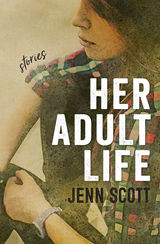 Her Adult Life: Stories
Jenn Scott
Acre Books, 2017 The characters who populate Jenn Scott’s debut collection are both trapped and adrift. Stuck in dead-end jobs or stagnant relationships or simply caught in the grip of their own inertia, they opt out, act out, and strike out, searching for emotional sustenance in a landscape of pointless patterns and dwindling hopes. Cuttingly clever remarks and excoriating observations act as shields—thrown up to protect an aching vulnerability, a bewildering sense of loss . . . of being lost in a world rife with expectations, where responsibility is ritualistic and meaning elusive.
“The beauty of being young was, in fact, the ability to project all that might happen. She recognizes, suddenly, how less grandiose the projection of her plans has become. It’s like she was once standing looking an expanse of field, but now she’s trapped in a hallway hung with too many pastel prints of landscapes that refuse to interest her. It’s as if she’s moved her entire life inside a dental office, minus the gas that sings a person to sleep while their cavities are filled, their roots fixed.”
Assumed identities, Russian mail-order brides, pie theft, lost (and found) cleavers, coworkers who commit murder, the sudden ballooning of breasts, conversations with the (surprisingly opinionated) vegetables in a restaurant’s walk-in cooler: in stories sharply funny and deeply poignant, situations that delight and discomfit, Scott explores “the complicated, or simple, ways in which we settle.”
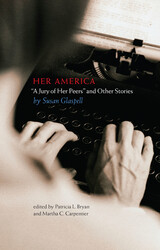 Her America: “A Jury of Her Peers” and Other Stories
Susan Glaspell
University of Iowa Press, 2010 One of the preeminent authors of the early twentieth century, Susan Glaspell (1876–1948) produced fourteen ground-breaking plays, nine novels, and more than fifty short stories. Her work was popular and critically acclaimed during her lifetime, with her novels appearing on best-seller lists and her stories published in major magazines and in The Best American Short Stories. Many of her short works display her remarkable abilities as a humorist, satirizing cultural conventions and the narrowness of small-town life. And yet they also evoke serious questions—relevant as much today as during Glaspell’s lifetime—about society’s values and priorities and about the individual search for self-fulfillment. While the classic “A Jury of Her Peers” has been widely anthologized in the last several decades, the other stories Glaspell wrote between 1915 and 1925 have not been available since their original appearance. This new collection reprints “A Jury of Her Peers”—restoring its original ending—and brings to light eleven other outstanding stories, offering modern readers the chance to appreciate the full range of Glaspell’s literary skills.
Glaspell was part of a generation of midwestern writers and artists, including Sherwood Anderson, Sinclair Lewis, Willa Cather, and F. Scott Fitzgerald, who migrated first to Chicago and then east to New York. Like these other writers, she retained a deep love for and a deep ambivalence about her native region. She parodied its provincialism and narrow-mindedness, but she also celebrated its pioneering and agricultural traditions and its unpretentious values. Witty, gently humorous, satiric, provocative, and moving, the stories in this timely collection run the gamut from acerbic to laugh-out-loud funny to thought-provoking. In addition, at least five of them provide background to and thematic comparisons with Glaspell’s innovative plays that will be useful to dramatic teachers, students, and producers.
With its thoughtful introduction by two widely published Glaspell scholars, Her America marks an important contribution to the ongoing critical and scholarly efforts to return Glaspell to her former preeminence as a major writer. The universality and relevance of her work to political and social issues that continue to preoccupy American discourse—free speech, ethics, civic justice, immigration, adoption, and gender—establish her as a direct descendant of the American tradition of short fiction derived from Hawthorne, Poe, and Twain.
 Her Brilliant Career: The Life of Stella Miles Franklin
Jill Roe
Harvard University Press, 2009 Born in the Australian bush, Stella Miles Franklin became an international publishing sensation in 1901, at the age of 21, with My Brilliant Career, whose portrayal of an ambitious and independent woman defying social expectations still captivates readers. In a magisterial biography, Jill Roe details Miles’ extraordinary life.
Early success launched Miles into influential literary and socialist circles in Sydney and Melbourne, where she met Banjo Paterson (composer of “Waltzing Matilda” and author of The Man from Snowy River) and suffragist Vida Goldstein (who introduced her to Christian Science). Researching the lives of working women, Miles disguised herself as a domestic for a year. She then lit out for adventure abroad, landing in San Francisco just after the Great Earthquake. At Jane Addams’ Hull House in Chicago, she joined the women’s labor movement, working for the National Women’s Trade Union League and writing for its magazine.
Moving to Britain in 1915, Miles joined the war cause and served in Macedonia as a hospital orderly and then worked in London for various feminist and progressive causes, including the National Housing Council. Always she wrote, becoming a prolific author of plays as well as novels and archetypal bush stories. Returning to Australia in the 1930s, she supported women’s causes and promoted Australian writers, leaving her estate to endow the nation’s premier literary award.
The culmination of decades of research in thousands of papers left by Miles, Her Brilliant Career stands as the definitive life of this remarkable writer and feminist.
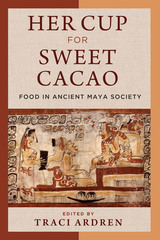 Her Cup for Sweet Cacao: Food in Ancient Maya Society
Edited by Traci Ardren
University of Texas Press, 2020 For the ancient Maya, food was both sustenance and a tool for building a complex society. This collection, the first to focus exclusively on the social uses of food in Classic Maya culture, deploys a variety of theoretical approaches to examine the meaning of food beyond diet—ritual offerings and restrictions, medicinal preparations, and the role of nostalgia around food, among other topics. For instance, how did Maya feasts build community while also reinforcing social hierarchy? What psychoactive substances were the elite Maya drinking in their caves, and why? Which dogs were good for eating, and which breeds became companions? Why did even some non-elite Maya enjoy cacao, but rarely meat? Why was meat more available for urban Maya than for those closer to hunting grounds on the fringes of cities? How did the molcajete become a vital tool and symbol in Maya gastronomy? These chapters, written by some of the leading scholars in the field, showcase a variety of approaches and present new evidence from faunal remains, hieroglyphic texts, chemical analyses, and art. Thoughtful and revealing, Her Cup for Sweet Cacao unlocks a more comprehensive understanding of how food was instrumental to the development of ancient Maya culture.
 Her Day in Court: Women’s Property Rights in Fifteenth-Century Granada
Maya Shatzmiller
Harvard University Press, 2007 This book is a study of the historical record of Muslim women’s property rights and equity. Based on Islamic court documents of fifteenth-century Granada—documents that show a high degree of women’s involvement—the book examines women’s legal entitlements to acquire property as well as the social and economic significance of these rights to Granada’s female population and, by extension, to women in other Islamic societies.
The microhistory of women’s property rights is placed in a comparative historical, social, and economic context and is examined using a theoretical framework that suggests how this book’s conclusions might coexist with the Islamic feminist discourse on the law as a patriarchal system, serving to highlight both the uniqueness and the limitations of the Islamic case. The specifics presented in the case studies reveal the broader structures, constructs, rules, conditions, factors, and paradigms that shaped women’s property rights under Islamic law. They show that women’s property rights were more than just part of a legal system; they were the product of a legal philosophy and a pervasive paradigm that made property ownership a normal construct of the Muslim woman’s legal persona and a norm of her existence.
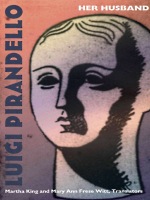 Her Husband
Luigi Pirandello
Duke University Press, 2000 One of the twentieth century’s greatest literary artists and winner of the Nobel prize in 1934, Luigi Pirandello wrote the novel Her Husband in 1911, before he produced any of the well-known plays with which his name is most often associated today. Her Husband—translated here for the first time into English—is a profoundly entertaining work, by turns funny, bitingly satirical, and tinged with anguish. As important as any of the other works in Pirandello’s oeuvre, it portrays the complexities of male/female relations in the context of a newly emerging, small but vocal Italian feminist movement. Evoking in vivid detail the literary world in Rome at the turn of the century, Her Husband tells the story of Silvia Roncella, a talented young female writer, and her husband Giustino Boggiolo. The novel opens with their arrival in Rome after having left their provincial southern Italian hometown following the success of Silvia’s first novel, the rather humorously titled House of Dwarves. As his wife’s self-appointed (and self-important) promoter, protector, counselor, and manager, Giustino becomes the primary target of Pirandello’s satire. But the couple’s relationship—and their dual career—is also complicated by a lively supporting cast of characters, including literary bohemians with avant-garde pretensions and would-be aristocratic esthetes who are all too aware of the newly acquired power of journalists and the publishing establishment to make or break their careers. Having based many of the characters—including Silvia and Giustino—on actual literary acquaintances of his, Pirandello reacted to the novel’s controversial reception by not allowing it to be reprinted after the first printing sold out. Not until after his death were copies again made available in Italy. Readers will find Her Husband eerily evocative of the present in myriad ways—not the least of which is contemporary society’s ongoing transformation wrought by the changing roles of men and women, wives and husbands.
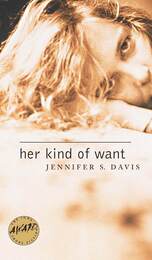 Her Kind of Want
Jennifer S. Davis
University of Iowa Press, 2002 Set mainly in the small towns of Alabama, the stories in Her Kind of Want ache with the relentless longing of the poor, struggling, usually discarded southern women who tell us their lives—lives that seem to revolve around men whose only presence is their absence. Bebe, Luna, Melly, Little Hula, Dena. These are just a few of the women we meet in Jennifer Davis's award-winning collection. Women who married too fast, had children too young, and drink too much. Yet beneath their unpolished exteriors, these women are flesh and blood, and their wants and needs are as severe and deep as any. Davis's characters relate their stories in voices as complex and raw as their southern environment. Each tale may sound slightly familiar—an unwanted pregnancy, a fast car flying down a country road—but Davis moves beyond the familiar stories of the rural South to expose the gaps that connect these women, creating startlingly real and vibrant characters. Although often bleak and sometimes disturbing, Her Kind of Want is a celebration of southern people, their perseverance, their spirit, and their determination to make the ugly beautiful.
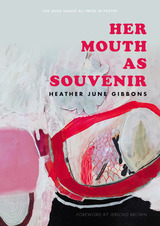 Her Mouth as Souvenir
Heather June Gibbons
University of Utah Press, 2018 Winner of the Agha Shahid Ali Poetry Prize
In a startling voice propelled by desire and desperation on the verge of laughter, these poems leap from the mundane to the sublime, from begging to bravado, from despair to reverie, revealing the power that comes from hanging on by a thread. Poet Heather June Gibbons conjures belief in the absence of faith, loneliness in the digital age, beauty in the face of absurdity—all through the cataract of her sunglasses’ cracked lens. In this debut collection, we are shown a world so turbulent, anxious, and beautiful, we know it must be ours. Under pressure, these poems sing.
Includes a foreword by Jericho Brown.
From the poem “Bobby Reads Chekhov”
They say if you’re sad, you haven’t been
smiling enough. Want to make better decisions?
Eat more cheese. Perception is reality,
my horrible boss used to say when I’d try
to explain anything she couldn’t see,
though maybe she was right. Can we know
reality any other way? The painter saw
purple in the trees, so he painted them purple.
Leaving the gallery, we see purple everywhere.
Studies have shown meditation makes
brain waves akin to coma. Is that so,
you say, fingering your tiny screen.
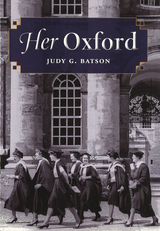 Her Oxford
Judy G. Batson
Vanderbilt University Press, 2008 For over six centuries, the University of Oxford had been an exclusively male bastion of privilege and opportunity. Few dreamed this could change. Yet, in 1879, twenty-one pioneering women quietly entered two recently established residence halls in Oxford in the hope of attending lectures and pursuing a course of study. More women soon followed and, by 1893, there were five women's societies, each with its own principal, staff, and identity. Only eighty years after women first appeared in Oxford, the five residential societies were granted full status as colleges of the University-self-governing entities with all the rights and obligations of the men's colleges-and women students constituted 16 percent of the undergraduate population. Though still a distinct minority, women had gained full access to the rich resources, opportunities, and challenges of the University. Her Oxford looks at the people and the political and social forces that produced this dramatic transformation. Drawing on a vast array of biographies, histories, obituaries, and archives, Batson traces not only the institutional struggles over privileges and disciplinary rules for women, but also the rich texture of everyday life-women's amateur theatricals, debating societies, sports, and college escapades (Dorothy Sayers is the subject of quite a few). She tells the stories of women's active roles in two war efforts and in the suffrage movement. An unusual feature of the book is the set of 120 biographical profiles of women who attended Oxford between 1879 and 1960. They constitute a Who's Who of women scientists, anthropologists, psychotherapists, educators, novelists, and social reformers in the English-speaking world.
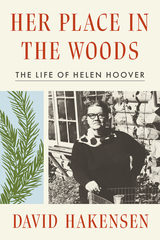 Her Place in the Woods: The Life of Helen Hoover
David Hakensen
University of Minnesota Press, 2025 The biography of one of Minnesota’s most beloved nature writers, from her career in the city to her rustic cabin on Gunflint Lake
During the late 1950s through the early 1970s, Helen Hoover’s stories and essays of life in the wilderness on northern Minnesota’s Gunflint Lake, published in popular magazines and several bestselling books (including The Gift of the Deer in 1966 and A Place in the Woods in 1969), found millions of fans and earned her accolades alongside nature writers like Sigurd Olson, Rachel Carson, Sally Carrighar, and Calvin Rutstrum. Hoover’s own unlikely history of leaving a corporate career in Chicago for a small cabin without electricity or running water—with no interest in hunting or fishing—is just one chapter of the remarkable life that David Hakensen describes in Her Place in the Woods. This first complete biography illuminates how Helen Hoover (1910–1984) made a place for herself and for countless readers in, as she put it, the world of her time. Hoover defied convention. Self-trained and without an academic degree, she worked in the male-dominated metallurgical field as a researcher at International Harvester, where she solved a long-standing problem with the manufacture of discs for farm implements and earned a patent. She and her husband, Adrian, a commercial artist, had long dreamed of moving to a remote cabin in the woods. As they started the long return drive to Chicago after a summer spent on Gunflint Lake, they finally made the leap, quitting their jobs with a long-distance phone call from Grand Marais and figuring out the rest as they went. The Hoovers were woefully unprepared for life off the grid and slowly learned how to convert sheds into chicken coops and fend off bears. Social encounters presented their own challenges, with Helen’s fiery personality leading to clashes with hunters and other Gunflint neighbors. Gradually, the Hoovers settled into the rhythms of their remote homestead, and Helen would craft a prolific literary livelihood from her keen observations of nature and encounters with animals in the surrounding woods. Her Place in the Woods captures both an awakening to the power and fragility of the natural world and the efforts and talents of an extraordinary woman defining herself as a writer. Though Helen Hoover would move on from the secluded North Woods, as she wrote in her final book, The Years of the Forest, “From this time on it would be both here and with me wherever I might be, as long as I should live.”
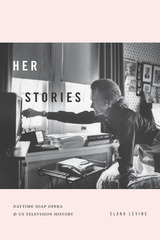 Her Stories: Daytime Soap Opera and US Television History
Elana Levine
Duke University Press, 2020 Since the debut of These Are My Children in 1949, the daytime television soap opera has been foundational to the history of the medium as an economic, creative, technological, social, and cultural institution. In Her Stories, Elana Levine draws on archival research and her experience as a longtime soap fan to provide an in-depth history of the daytime television soap opera as a uniquely gendered cultural form and a central force in the economic and social influence of network television. Closely observing the production, promotion, reception, and narrative strategies of the soaps, Levine examines two intersecting developments: the role soap operas have played in shaping cultural understandings of gender and the rise and fall of broadcast network television as a culture industry. In so doing, she foregrounds how soap operas have revealed changing conceptions of gender and femininity as imagined by and reflected on the television screen.
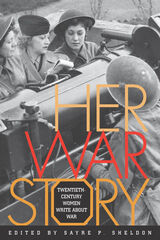 Her War Story: Twentieth-Century Women Write About War
Edited by Sayre P. Sheldon
Southern Illinois University Press, 1999 Sayre P. Sheldon chose the twentieth century for this collection of women's war writing because women's roles in war have changed dramatically in this century. The twentieth century has redefined the meaning of combat and expanded the territory of war to include women in larger numbers than ever before. When the technological advances of modern war began to target civilians, the home front became the front line. Women took an active part in war whether or not by choice, often by moving into occupations previously closed to them. Women covered wars for their newspapers, wrote war propaganda for their governments, published their wartime diaries, described fighting alongside men, and used wartime experience for their fiction and poetry. Women writers also chose the right to imagine war, just as men for centuries had written about war without actually experiencing it. Women writers anthologized here include Anna Akhmatova, Vera Brittain, Gwendolyn Brooks, Willa Cather, Colette, Martha Gellhorn, H.D., Etty Hillesum, Käthe Kollwitz, Doris Lessing, Amy Lowell, Katherine Mansfield, Mary McCarthy, Toni Morrison, Dorothy Parker, Mary Lee Settle, Gertrude Stein, Huong Tram, Edith Wharton, Virginia Woolf, and Mitsuye Yamada.
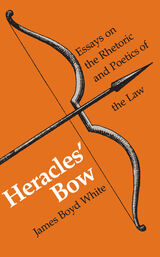 Heracles' Bow: Essays On The Rhetoric & Poetics Of The Law
James B. White
University of Wisconsin Press, 1989 The law has traditionally been regarded as a set of rules and institutions. In this thoughtful series of essays, James Boyd White urges a fresh view of the law as an essentially literary, rhetorical, and ethical activity. Defining and elaborating his conception, he artfully bridges the fields of jurisprudence, literature, philosophy, history, and political science. The result, a new approach that may change the way we perceive the legal process, will engage not only lawyers and law students but anyone interested in the relationship between ethics, persuasion, and community.
White’s essays, though bound by a common perspective, are thematically varied. Each of these pieces makes eloquent and insightful reading. Taken as a whole, they establish, by triangulation, a position from which they all proceed: a view of poetry, law, and rhetoric as essentially synonymous. Only when we perceive the links between these processes, White stresses, can we begin to unite the concerns of truth, beauty, and justice in a single field of action and expression.
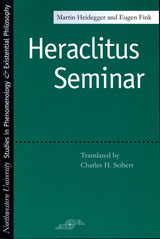 Heraclitus Seminar
Martin Heidegger
Northwestern University Press, 1993 In 1966–1967 Martin Heidegger and Eugen Fink conducted an extraordinary seminar on the fragments of Heraclitus. Heraclitus Seminar records those conversations, documenting the imaginative and experimental character of the multiplicity of interpretations offered and providing an invaluable portrait of Heidegger involved in active discussion and explication.
Heidegger's remarks in this seminar illuminate his interpretations not only of pre-Socratic philosophy, but also of figures such as Hegel and Holderllin. At the same time, Heidegger clarifies many late developments in his own understanding of truth, Being, and understanding. Heidegger and Fink, both deeply rooted in the Freiburg phenomenological tradition, offer two competing approaches to the phenomenological reading of the ancient text-a kind of reading that, as Fink says, is "not so much concerned with the philological problematic . . . as with advancing into the matter itself, that is, toward the matter that must have stood before Heraclitus's spiritual view."
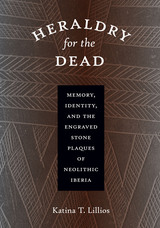 Heraldry for the Dead: Memory, Identity, and the Engraved Stone Plaques of Neolithic Iberia
By Katina T. Lillios
University of Texas Press, 2008 In the late 1800s, archaeologists began discovering engraved stone plaques in Neolithic (3500-2500 BC) graves in southern Portugal and Spain. About the size of one's palm, usually made of slate, and incised with geometric or, more rarely, zoomorphic and anthropomorphic designs, these plaques have mystified generations of researchers. What do their symbols signify? How were the plaques produced? Were they worn during an individual's lifetime, or only made at the time of their death? Why, indeed, were the plaques made at all? Employing an eclectic range of theoretical and methodological lenses, Katina Lillios surveys all that is currently known about the Iberian engraved stone plaques and advances her own carefully considered hypotheses about their manufacture and meanings. After analyzing data on the plaques' workmanship and distribution, she builds a convincing case that the majority of the Iberian plaques were genealogical records of the dead that served as durable markers of regional and local group identities. Such records, she argues, would have contributed toward legitimating and perpetuating an ideology of inherited social difference in the Iberian Late Neolithic.
 The Herb Garden Cookbook: The Complete Gardening and Gourmet Guide, Second Edition
By Lucinda Hutson
University of Texas Press, 2003
Indulge your senses with the lively flavors, vivid colors, and tantalizing aromas of fresh herbs. This comprehensive guide gives you creative, festive recipes as well as valuable gardening information. With Lucinda Hutson's expert advice you'll discover how to:
- Grow robust and flavorful herbs using organic gardening techniques.
- Harvest and store herbs.
- Prepare more than 150 delicious and innovative recipes.
- Create intensely flavored herb butters and savory vinegars.
- Garnish and flavor recipes with beautiful edible flowers.
- Grow and use exotic herbs from Mexico and Southeast Asia.
- Design menus for special occasions such as a fiesta for friends or a feast for two.
- Find the best sources, including websites, for buying plants, seeds, and gourmet products.
Savor the Tuscan-inspired Panzanella, the continental Celebratory Niçoise Salad, or the Southwestern-spirited Pollo Picado. Lucinda's suggested recipe variations will turn you into a kitchen quick-change artist. Ideas for dazzling presentations make your meals as pleasing to the eye as they are to the palate. From rosemary and thyme to Mexican mint marigold and Thai basil, this is an essential guide for cooks and gardeners alike!
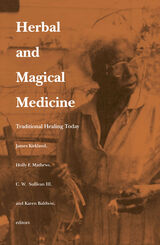 Herbal and Magical Medicine: Traditional Healing Today
James K. Kirkland, Holly Matthews, C. W. Sullivan III and Karen Baldwin, eds.
Duke University Press, 1992 Herbal and Magical Medicine draws on perspectives from folklore, anthropology, psychology, medicine, and botany to describe the traditional medical beliefs and practices among Native, Anglo- and African Americans in eastern North Carolina and Virginia. In documenting the vitality of such seemingly unusual healing traditions as talking the fire out of burns, wart-curing, blood-stopping, herbal healing, and rootwork, the contributors to this volume demonstrate how the region’s folk medical systems operate in tandem with scientific biomedicine. The authors provide illuminating commentary on the major forms of naturopathic and magico-religious medicine practiced in the United States. Other essays explain the persistence of these traditions in our modern technological society and address the bases of folk medical concepts of illness and treatment and the efficacy of particular pratices. The collection suggests a model for collaborative research on traditional medicine that can be replicated in other parts of the country. An extensive bibliography reveals the scope and variety of research in the field. Contributors. Karen Baldwin, Richard Blaustein, Linda Camino, Edward M. Croom Jr., David Hufford, James W. Kirland, Peter Lichstein, Holly F. Mathews, Robert Sammons, C. W. Sullivan III
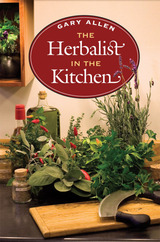 The Herbalist in the Kitchen
Gary Allen
University of Illinois Press, 2006 The foodie's ultimate herbal encyclopedia Created as the ideal reference for anyone with a serious interest in cooking with herbs, spices, or related plant materials, The Herbalist in the Kitchen is truly encyclopedic in scope. It provides complete information about the uses, botany, toxicity, and flavor chemistry of herbs, as well as a listing for nearly every name that an ingredient is known by around the world. Even including herbs and spices not yet seen in the United States (but likely to be featured in recipes for adventurous cooks soon), The Herbalist in the Kitchen is organized into one hundred and four sections, each consisting of a single botanical family. The book provides all available information about the chemical compounds responsible for a plant's characteristic taste and scent, which allows cooks to consider new subtleties and potential alternatives. For instance, the primary flavoring ingredient of cloves is eugenol; when a cook knows that bay leaves also contain eugenol, a range of exciting substitutions becomes clear. The Herbalist in the Kitchen also provides guidance about measuring herbs, enabling readers to understand the dated measuring standards from antique cookbooks. A volume in The Food Series, edited by Andrew W. Smith
The Herbarium Handbook
Edited by Nina M. J. Davies, Clare Drinkell, and Timothy M. A. Utteridge
Royal Botanic Gardens, Kew, 2023 A new edition of an essential resource for all botanists, herbarium managers, and technicians involved with the making and maintenance of herbarium collections.
The Herbarium Handbook has been an important reference for herbarium collections care and management since it was first published in 1989. Based on standard herbarium practices and personal experience from experts at the Royal Botanic Gardens, Kew, the book also draws on examples from partners and collaborators around the world, making it accessible and adaptable for all herbarium practitioners. The book covers everything from creating herbarium collections to preparing and caring for specimens, managing a herbarium building, and public engagement and outreach. It is the essential reference for anyone working in this field.
Herbarium Handbook Chinese Edition
Yi-jian Yao
Royal Botanic Gardens, Kew, 1998 The CHINESE-language version of this standard reference for all botanists, herbarium managers and technicians involved with the making and maintenance of herbarium collections.
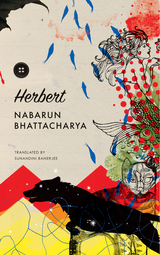 Herbert
Nabarun Bhattacharya
Seagull Books, 2019 May 1992. In Russia, Boris Yeltsin is showing millions of communists the specter of capitalism. Yugoslavia is disintegrating. United Germany is uncertain about their next move, and communism is collapsing all around. And in a corner of old Calcutta, Herbert Sarkar, sole proprietor of a company that delivers messages from the dead, decides to give up the ghost. Decides to give up his aunt and uncle, his friends and foes, his fondness for kites, his aching heart that broke for Buki, his top terrace from where he stared up at the sky, his Ulster overcoat with buttons like big black medals, his notebook full of poems, his Park Street every evening when the sun goes down, his memory of a Russian girl running across the great black earth as the soldiers lift their guns and get ready to fire, his fairy who beat her wings against his window and filled his room with blue light .
Surreal, haunting, painful, beautiful and astonishing in turn, and sweeping us along from Herbert’s early orphan years to the tumultuous Naxalite times of the 1970s to the explosive events after his death, Bhattacharya’s groundbreaking novel is now available in a daring new translation and holds up before us both a fascinating character and a plaintive city.
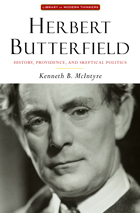 Herbert Butterfield: History, Providence, and Skeptical Politics
Kenneth b. McIntyre
Intercollegiate Studies Institute, 2011
“The most original historian of his generation”
That is how the celebrated British academic Noel Annan described Herbert Butterfield (1900–1979), a profound and prolific writer who made important contributions as both a public and academic historian.
In this authoritative and accessible intellectual biography, Kenneth B. McIntyre explores the extraordinary range of Butterfield’s work. He shows why the small book The Whig Interpretation of History (1931) achieved such large influence; Butterfield, he demonstrates, has profoundly shaped American and European historiography by highlighting the distortions that occur when historians interpret the past merely as steps along the way toward the glorious present.
But McIntyre delves much deeper, examining everything from Butterfield’s lectures on history, historiography, and Christianity, to his warnings about the dangers of hubris in international affairs, to his essays on the origins of modern science, which basically created the modern discipline of the history of science.
This latest volume in ISI Books’ acclaimed Library of Modern Thinkers helps us understand a prescient and insightful thinker who challenged dominant currents in history, historiography, international relations, and politics.
Herbert Hoover and Economic Diplomacy: Department of Commerce Policy, 1921-1928
Joseph Brandes
University of Pittsburgh Press, 1970 From 1921 to 1928, future president Hoover built the Commerce Department into one of the most influential forces in federal government. During this time, the United States became a major creditor to other nations, which in turn had a significant impact on power relations between nations. The Commerce Department also became a champion of American economic rights and independence from foreign commodities, and in the process became the guiding force in national economic policy.
Herbert Hoover As Secretary Of Commerce: New Era Thought And Practice
Ellis W. Hawley
University of Iowa Press, 1981
In this second volume in the Hoover Centennial Seminars series, seven scholars reexamine a major segment of Herbert Hoover's public career and in doing so offer fresh perspectives on the political, administrative, and diplomatic history of the 1920s. Drawing upon new materials and new insights, they reconstruct Hoover's transformation of the Commerce secretariat, explore his thinking and action in a variety of policy areas, and explode conventional depictions of Hoover's political conservatism. These essays show a resourceful and creative mind wrestling with the central problems of twentieth-century America and projecting solutions remarkably similar to current proposals for public use of the private sector.
 Herbert Marcuse: An Aesthetics of Liberation
Malcolm Miles
Pluto Press, 2012 When capitalism is clearly catastrophically out of control and its excesses cannot be sustained socially or ecologically, the ideas of Herbert Marcuse become as relevant as they were in the 1960s. This is the first English introduction to Marcuse to be published for decades, and deals specifically with his aesthetic theories and their relation to a critical theory of society.
Although Marcuse is best known as a critic of consumer society, epitomised in the classic One-Dimensional Man, Malcolm Miles provides an insight into how Marcuse's aesthetic theories evolved within his broader attitudes, from his anxiety at the rise of fascism in the 1930s through heady optimism of the 1960s, to acceptance in the 1970s that radical art becomes an invaluable progressive force when political change has become deadlocked.
Marcuse's aesthetics of liberation, in which art assumes a primary role in interrupting the operation of capitalism, made him a key figure for the student movement in the 1960s. As diverse forms of resistance rise once more, a new generation of students, scholars and activists will find Marcuse’s radical theory essential to their struggle.
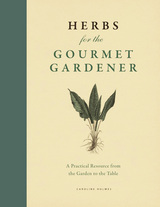 Herbs for the Gourmet Gardener: A Practical Resource from the Garden to the Table
Caroline Holmes
University of Chicago Press, 2014 The rise of the slow food movement and the return to home gardens mean cooks are donning gardening gloves as often as oven mitts. Modern cooking is heading back to its roots, with home cooks embracing local ingredients and down-to-earth recipes. With more and more of us discovering the delight of preparing and eating freshly harvested food, Herbs for the Gourmet Gardener is the indispensable guide to what to grow, cook, and eat.
A feast for the eyes and the table, this user-friendly resource traverses the realms of both the garden and the kitchen, addressing the cultivation, storage, and preparation of more than sixty herbs. Practical growing tips, fascinating histories, nutritional information, and classic recipes appear alongside botanical illustrations drawn from the Royal Horticultural Society’s cherished collection. With both familiar varieties and novel options, Herbs for the Gourmet Gardener will inspire you to create a world of new shapes, colors, and tastes.
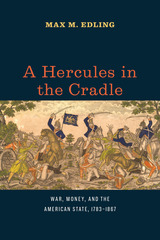 A Hercules in the Cradle: War, Money, and the American State, 1783–1867
Max M. Edling
University of Chicago Press, 2014 Explores the origin and evolution of American public finance and shows how the nation’s rise to great-power status in the nineteenth century rested on its ability to go into debt.
Two and a half centuries after the American Revolution the United States stands as one of the greatest powers on earth and the undoubted leader of the western hemisphere. This stupendous evolution was far from a foregone conclusion at independence. The conquest of the North American continent required violence, suffering, and bloodshed. It also required the creation of a national government strong enough to go to war against, and acquire territory from, its North American rivals.
In A Hercules in the Cradle, Max M. Edling argues that the federal government’s abilities to tax and borrow money, developed in the early years of the republic, were critical to the young nation’s ability to wage war and expand its territory. He traces the growth of this capacity from the time of the founding to the aftermath of the Civil War, including the funding of the War of 1812 and the Mexican War. Edling maintains that the Founding Fathers clearly understood the connection between public finance and power: a well-managed public debt was a key part of every modern state. Creating a debt would always be a delicate and contentious matter in the American context, however, and statesmen of all persuasions tried to pay down the national debt in times of peace.
Here
Sydney Lea
Four Way Books, 2019 In his thirteenth book of poetry, Sydney Lea gives voice to the deep connection between human life and the natural world as well as their fragility and transience. Here, nature is as much a muse as a trigger for sense memory—as a schoolboy on a playground “breathing in autumn mud, / that cherished aroma” or as witness to a redtail hawk’s attack and the aftermath during which “That poor doomed duckling’s wisps of down / Floated in air like snowflakes, /Diaphanous.” Death is a constant presence in these poems, too, arising from the bittersweet awareness of what eventually will be lost. While there is reckoning, there are few regrets in a life well-lived and closely observed. Here is a title, but it’s also a statement, an incantation and affirmation: “Let’s chant it throughout the year,” Lea writes, “like so much birdsong: we’re here we’re here we’re here.”
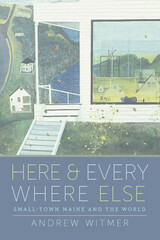 Here and Everywhere Else: Small-Town Maine and the World
Andrew Witmer
University of Massachusetts Press, 2022 Winner of the 2023 New England Society Book Award in the Historical Nonfiction category
Winner of an Award of Excellence, American Association for State and Local History (AASLH)
In 1822, settlers pushed north from Massachusetts and other parts of New England into Monson, Maine. On land taken from the Penobscot people, they established prosperous farms and businesses. Focusing on the microhistory of this village, Andrew Witmer reveals the sometimes surprising ways that this small New England town engaged with the wider world across the nineteenth and twentieth centuries. Townspeople fought and died in distant wars, transformed the economy and landscape with quarries and mills, and used railroads, highways, print, and new technologies to forge connections with the rest of the nation.
Here and Everywhere Else starts with Monson’s incorporation in the early nineteenth century, when central Maine was considered the northern frontier and over 90 percent of Americans still lived in rural areas; it ends with present-day attempts to revive this declining Maine town into an artists’ colony. Engagingly written, with colorful portraits of local characters and landmarks, this study illustrates how the residents of this remote place have remade their town by integrating (and resisting) external influences.
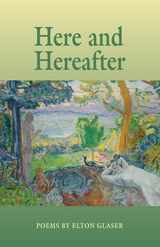 Here and Hereafter: Poems
Elton Glaser
University of Arkansas Press, 2005 The poems in celebrated poet Elton Glaser’s sixth collection journey through the seasons, from spring to spring, a pilgrimage down to the South, over the Midwest of snow and roses, and across the Romance countries of Europe. If the poet often finds himself “[h]alfway between grief and longing,” that may be his natural condition, rooted in this world against the pull of the next, his faith in the “purple evidence of plums, the testimony of wild persimmon” weathering the stormy preachers and the droughts of middle age. Within that tension, the range of tones is unlimited, sometimes in the same poem, from the serious to the sublime, from anguish to awe. Holding everything together is Glaser’s unmistakable voice, a warm idiom made pungent by wintry wit: “my tongue of odd American, my mongrel sublime.” Whether the poems speak of ripe pears or minor prophets, they invite the reader to a feast of language that lets us taste how it feels to live on this earth, in the shadow of the afterlife.
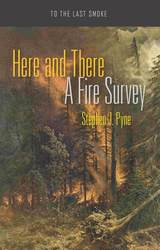 Here and There: A Fire Survey
Stephen J. Pyne
University of Arizona Press, 2018 Fire is special. Even among the ancient elements, fire is different because it alone is a reaction. It synthesizes its surroundings; it takes its character from its context. It varies by place, by culture, and by time. It has no single expression. There is no single way to understand it. In this collection of essays, historian and renowned fire expert Stephen J. Pyne offers his reflections on national and global wildland fire management. Pyne distills the long saga of fire on Earth and its role in underwriting an Anthropocene that might equally be called a Pyrocene. Presented through a mixture of journalism, history, and literary imagination, Here and There moves the discussion of fire beyond the usual formations of science and policy within a national narrative to one of thoughtful interpretation, analysis, and commentary. Centered on the unique complexities of fire management in a global world, Here and There offers a punctuation point to our understanding of wildfire. Included in this volume: - How fire policy has changed within the United States
- How policy in the United States differs from that in other countries
- The history of one of the most famous fire paintings of all time
- Suggested next steps for the future of fire research
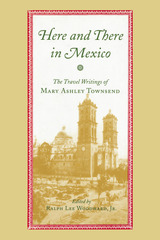 Here and There in Mexico: The Travel Writings of Mary Ashley Townsend
Mary Ashley Townsend, edited by Ralph Lee Woodward Jr.
University of Alabama Press, 2001 Mary Ashley Townsend was a novelist, newspaper columnist, and poet laureate of New Orleans who made several trips to Mexico with her daughter Cora during the last two decades of the 19th century. She collected her impressions of many aspects of life in that country—flora, fauna, architecture, people at work and play, fashion, society, food—and wrote about them during a time when few women engaged in solo travel, much less the pursuit of travel writing. Her collected work was still in progress when she died in a train accident in 1901, and was never published. Renowned Latin Americanist Ralph Lee Woodward Jr. discovered Townsend’s manuscript, along with many of the author’s personal papers, in the Special Collections division of Tulane University’s Howard-Tilton Library. In addition to annotating the text, he has written a critical introduction to the work that provides excellent background information about the author and places the work in its historical and cultural context. Townsend’s writing provides an unusual feminine perspective on Mexico as she describes the country during the middle years of the Porfirio Diaz dictatorship, a pivotal time in Mexican history. Though Townsend does not delve heavily into politics her observations of people’s lives provide a valuable source for social historians of the period. Here and There in Mexico will make new contribution to the field of Latin American studies and to the travel literature genre, both as a primary source for historians and as a well-written account of a southern woman’s impressions of Mexico during a crucial period in that country’s development.
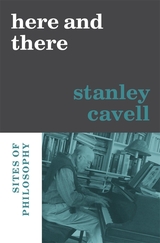 Here and There: Sites of Philosophy
Stanley Cavell
Harvard University Press, 2022 The first posthumous collection from the writings of Stanley Cavell, shedding new light on the distinctive vision and intellectual trajectory of an influential American philosopher.
For Stanley Cavell, philosophy was a matter of responding to the voices of others. Throughout his career, he articulated the belief that words spring to life in concrete circumstances of speech: the significance and power of language depend on the occasions that elicit it. When Cavell died in 2018, he left behind some of his own most powerful language—a plan for a book collecting numerous unpublished essays and lectures, as well as papers printed in niche journals. Here and There presents this manuscript, with thematically relevant additions, for the first time.
These writings, composed between the 1980s and the 2000s, reflect Cavell’s expansive interests and distinctive philosophical method. The collection traverses all the major themes of his immense body of work: modernity, psychoanalysis, the human voice, moral perfectionism, tragedy, skepticism. Cavell’s rich and cohesive philosophical vision unites his wide-ranging engagement with poets, critics, psychoanalysts, social scientists, and fellow philosophers. In Here and There, readers will find dialogues with Shakespeare, Thoreau, Wittgenstein, Freud, Heidegger, Walter Benjamin, Wallace Stevens, Veena Das, and Peter Kivy, among others. One of the collection’s most striking features is an ensemble of five pieces on music, constituting Cavell’s first discussion of the subject since the mid-1960s.
Edited by philosophers who have been invested in Cavell’s work for decades, Here and There not only gathers the strands of a writing life but also maps its author’s intellectual journeys. In these works, Cavell models what it looks like to examine seriously one’s own passions and to forge new communities through unexpected conversations.
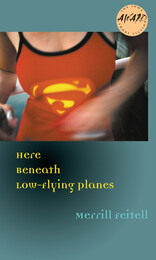 Here Beneath Low-Flying Planes
Merrill Feitell
University of Iowa Press, 2004
The stories in Merrill Feitell’s award-winning collection, Here Beneath Low-Flying Planes, examine the fleeting and unexpected moments of human connection, reminding us of the indelible impact we have on one another no matter how insignificant or anonymous we might feel under our huge, collective sky.
Feitell’s characters deal with shifting dynamics in relationships—whether they be best friends, lovers, family, or even strangers—that consistently leave them torn between two places or commitments. In the title story, Janie has undergone a painful childbirth experience and her group of friends must pioneer new dynamics while she wonders how to bring her old self back. In “Bike New York!” amid thirty thousand cyclists, a man on the brink of marriage meets a young girl who, in a tiny Brooklyn bakery, affirms both who he has been and who he is going to be. On this short detour from normal life he comes to understand “the funny thing about finding your way in the world. There was a place laid out for you . . . and even as you stepped into it, happy for the chance to rest, you wondered how you ever ended up there.”
Funny, big-hearted, and deft, Here Beneath Low-Flying Planes navigates the reader through the life that happens when you’re planning other things. It is a collection of experiences, roads not taken, and the intense and unforeseen sparks of connection we hope for.
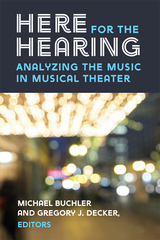 Here for the Hearing: Analyzing the Music in Musical Theater
Michael Buchler and Gregory J. Decker, Editors
University of Michigan Press, 2023 This book offers a series of essays that show the integrated role that musical structure (including harmony, melody, rhythm, meter, form, and musical association) plays in making sense of what transpires onstage in musicals. Written by a group of music analysts who care deeply about musical theater, this collection provides new understanding of how musicals are put together, how composers and lyricists structure words and music to complement one another, and how music helps us understand the human relationships and historical and social contexts. Using a wide range of musical examples, representing the history of musical theater from the 1920s to the present day, the book explores how music interacts with dramatic elements within individual shows and other pieces within and outside of the genre. These essays invite readers to consider issues that are fundamental both to our understanding of musical theater and to the multiple ways we engage with music.
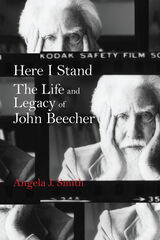 Here I Stand: The Life and Legacy of John Beecher
Angela J. Smith
University of Alabama Press, 2017 Biography of a forgotten poet who used his name and influence to speak up for those on the margins of society.
Few surnames resonate in American history more than Beecher. The family’s abolitionist ministers, educators, and writers are central figures in the historical narrative of the United States. The Beechers’ influence was greatest in the nineteenth century, but the family story continued—albeit with less public attention—with a descendant who grew up in Birmingham, Alabama, during the early twentieth century.
John Beecher (1904–1980) never had the public prominence of his famous ancestors, but as a poet, professor, sociologist, New Deal administrator, journalist, and civil rights activist, he spent his life fighting for the voiceless and oppressed with a distinct moral sensibility that reflected his self-identification as the twentieth-century torchbearer for his famous family. While John Beecher had many vocations in his lifetime, he always considered himself a poet and a teacher. Some critics have compared the populist elements of Beecher’s poetry to the work of Walt Whitman and Carl Sandburg, but his writing never gained a broad audience or critical acclaim during his lifetime.
In Here I Stand: The Life and Legacy of John Beecher, Angela J. Smith examines Beecher’s writing and activism and places them in the broader context of American culture at pivotal points in the twentieth century. Employing his extensive letters, articles, unpublished poetry and prose, and audio interviews in addition to his numerous published books, Smith uncovers a record of public concerns in American history ranging from the plight of workers in 1920s steel mills to sharecroppers’ struggles during the Depression to the civil rights movement of the 1960s.
Here I Throw Down My Heart
Colleen J. McElroy
University of Pittsburgh Press, 2012 The poems in Here I Throw Down My Heart prompt readers to see beyond the surface of images, whether that surface is a uniform, a prescribed setting, a familiar geography, or the surface that evokes the most social commentary, skin—the body itself. The modern world moves at a greater speed than the world of a few generations ago, so we look for ways to sort our likes and dislikes, to set our comfort zones. These poems say: “don’t believe everything you see, look again.” The poems look at how borders between countries, or between genders and class have deepened the lines between the haves and have-nots. While everyone is on a collision course for lack of food and water, those dividing lines seem more impenetrable than ever, underscoring the disparity between gender, race, and class.
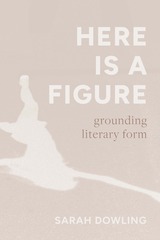 Here Is a Figure: Grounding Literary Form
Sarah Dowling
Northwestern University Press, 2025 A study of supine, prone, and recumbent figures in contemporary literature The prostitute, the protester, the murder victim, the invalid, the layabout, the depressive: all are associated with lying down. Skewing and flattening the perpendicular axis that defines the human in Western philosophy, art, and humanist inquiry, these downward-directed figures’ refusals or failures to hew to the moral and postural logics of uprightness enable a reassessment of subjectivity, ecological relation, and representation—that last of which is, after all, a process of standing-in-for. Here Is a Figure: Grounding Literary Form works across an array of well-known and counter-canonical texts, showing that recumbent figures saturate the literary arts of the present and respond to the proliferation of contemporary forms of grounding, in all its meanings. Reading these figures in dialogue with critical Indigenous studies, disability studies, and horizontalist feminisms, Sarah Dowling reveals the potential in thinking with and through a position stretched out across, dependent on, and undetachable from the earth.
 Here Is a Game We Could Play: A Novel
Jenny Bitner
Acre Books, 2021 A dreamlike novel set in Pennsylvania in the 1990s, Here Is a Game We Could Play is the story of Claudia, an intelligent eccentric trapped in the rundown industrial town she grew up in—a place plagued with troubling memories and hidden threats. Seeking escape from tedium, loneliness, and her obsessive fear of poisoning, Claudia retreats into books. . . and into a fantasy life with her perfect lover, to whom she addresses letters about her life, all the while imagining outlandish sexual scenarios.
In each fantasy, her lover takes a different form, ranging from a prison guard in a world where metaphor is forbidden, to a more-than-brotherly Hansel from the Grimms’ fairy tale, to a tentacled mind-reading space alien. All share a desire for a deep intimacy that eludes Claudia, even as she forms new real-life relationships and reconsiders her sexual identity—building a rapport with an elderly volunteer at the library, striking up a friendship with a wily temp at her dead-end job, and embarking on a passionate affair with Rose, the town’s new librarian. When paranoia threatens to ruin her relationship with Rose, Claudia is forced not only to combat her anxiety but to face the unresolved trauma in her past—the disappearance of her father on a night she has long repressed.
Funny, dark, inventive, and moving, Here Is a Game We Could Play is an original debut novel recalling the work of Aimee Bender, Angela Carter, Rebecca Brown, and Margaret Atwood.
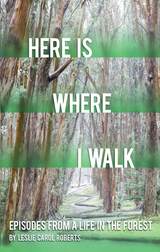 Here is Where I Walk: Episodes From a Life in the Forest
Leslie Carol Roberts
University of Nevada Press, 2019 It is in the Presidio of San Francisco, California, that Leslie Carol Roberts walks. The Presidio, America’s only residential national park tucked wholly into an urban setting, is a fading historic forest. Here is where Leslie’s memories of other places, people, and travels emerge. Here is where the author’s home has been for more than a decade, and here is the place she raised her two children as a single mother.
In layered stories of her life and travels, Leslie turns her daily walks into revelations of deeper meaning. From Maryland to Iowa to Tasmania, we follow a fierce and keenly observant walker through places of exquisite beauty and complexity. Her daily walks inspire Leslie to accept the invitation of the beckoning trees where she finds herself colliding with the urban coyote, the peculiar banana slug, and the manzanita. She also notes both ridiculous and poignant aspects of human ecosystems in pursuit of what it means to live a life of creativity and creation from scientist-activists battling to save environments to the tragic realities of ordinary life.
In this finely crafted eco-memoir, each place provides Leslie with exactly the scaffolding needed to survive, with nature serving as the tonic. Here is Where I Walk provides a vivid answer to how we can find our place, not only in nature but within ourselves and the world we walk.
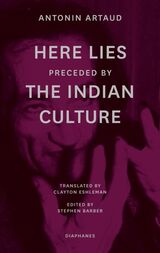 “Here Lies” preceded by “The Indian Culture”
Antonin Artaud
Diaphanes, 2021 “Here Lies” preceded by “The Indian Culture” collects two of Antonin Artaud’s foremost poetic works from the last period of his life. He wrote both works soon after his release from the psychiatric hospital of Rodez and his return to Paris, and they were published during the flurry of intensive activity and protests against his work’s censorship. The Indian Culture is the first and most ambitious work of Artaud’s last period. It deals with his travels in Mexico in 1936 where Artaud sets aside his usual preoccupations with peyote and the Tarahumara people’s sorcerers to directly anatomize his obsessions with gods, corporeality, and sexuality. Here Lies is Artaud’s final declaration of autonomy for his own body from its birth to its imminent death, won at the cost of multiple battles against the infiltrating powers amassed to steal that birth and death away from him. Both works demonstrate Artaud’s final poetry as a unique amalgam of delicate linguistic invention and ferociously obscene invective.
“Here Lies” preceded by “The Indian Culture” was translated by the award-winning translator Clayton Eshleman, widely seen as the preeminent translator into English of Artaud’s work, with its profound intensity and multiply nuanced language. For the first time since its first publication, this bilingual edition presents the two works in one volume, as Artaud originally intended. This edition also features a contextual afterword by Stephen Barber as well as new material, previously untranslated into English.
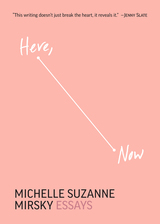 Here, Now: Essays
Michelle Suzanne Mirsky
Northwestern University Press, 2025 A deeply felt and humorous collection examining a year in the wake of extraordinary loss In November 2010, on the morning after election day, Mirsky lost her three-year-old son, Lev. In the year that followed, she produced a profound and provocatively humorous body of work—tackling extreme loss as well as divorce, friendship, dating, sex, comedy, and art making, all while continuing her day job as a family liaison at the same children’s hospital where Lev died. Every November, the anniversary of Lev’s loss aligns with the churn of the election cycle. A decade later, we find Mirsky in the heart of a different crisis: supervising COVID vaccine distribution in the polarized political climate of Austin, Texas. In “An Addendum,” she turns again to themes of grief and healing, this time on a societal scale, as she reckons with the tenth anniversary of Lev’s passing. Through her un-extraordinary story of extraordinary loss, Mirsky offers proof that there is an afterward to grief.
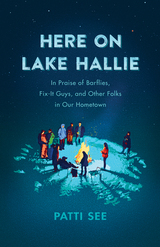 Here on Lake Hallie: In Praise of Barflies, Fix-It Guys, and Other Folks in Our Hometown
Patti See
Wisconsin Historical Society Press, 2022 In these humorous and heartfelt essays, Patti See celebrates small-town life in Wisconsin’s Chippewa Valley. Featuring childhood memories of supper clubs, thrift sales, and cribbage games, as well as the midlife concerns that accompany having a son in the military, a parent with Alzheimer’s, and a private onsite septic system, See’s writing praises the quirky charm of her hometown and its people.
Growing up in the 1970s and 1980s as the youngest of eight children, Patti never imagined she’d stay in Chippewa Falls as an adult. Now, living on rural Lake Hallie just five miles from her childhood home, she has a new appreciation for all that comes with country living, from ice fishing and eagle sightings to pontoon rides and tavern dice. These brief essays—many of which were originally published in the Sawdust Stories column of the Eau Claire Leader-Telegram—establish that, above all else, it’s friends, family, and other folks in our hometown who provide us with a sense of belonging.
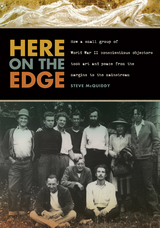 Here on the Edge: How a Small Group of World War II Conscientious Objectors Took Art and Peace from the Margins to the Mainstream
Steve McQuiddy
Oregon State University Press, 2013 Here on the Edge answers the growing interest in a long-neglected element of World War II history: the role of pacifism in what is often called “The Good War.” Steve McQuiddy shares the fascinating story of one conscientious objector camp located on the rain-soaked Oregon Coast, Civilian Public Service (CPS) Camp #56. As home to the Fine Arts Group at Waldport, the camp became a center of activity where artists and writers from across the country focused their work not so much on the current war, but on what kind of society might be possible when the shooting finally stopped.
They worked six days a week—planting trees, crushing rock, building roads, and fighting forest fires—in exchange for only room and board. At night, they published books under the imprint of the Untide Press. They produced plays, art, and music—all during their limited non-work hours, with little money and few resources. This influential group included poet William Everson, later known as Brother Antoninus, “the Beat Friar”; violinist Broadus Erle, founder of the New Music Quartet; fine arts printer Adrian Wilson; Kermit Sheets, co-founder of San Francisco’s Interplayers theater group; architect Kemper Nomland, Jr.; and internationally renowned sculptor Clayton James.
After the war, camp members went on to participate in the San Francisco Poetry Renaissance of the 1950s, which heavily influenced the Beat Generation of Jack Kerouac, Allen Ginsberg, and Gary Snyder—who in turn inspired Ken Kesey and his Merry Pranksters, leading the way to the 1960s upheavals epitomized by San Francisco’s Summer of Love.
As camp members engaged in creative acts, they were plowing ground for the next generation, when a new set of young people, facing a war of their own in Vietnam, would populate the massive peace movements of the 1960s.
Twenty years in the making and packed with original research, Here on the Edge is the definitive history of the Fine Arts Group at Waldport, documenting how their actions resonated far beyond the borders of the camp. It will appeal to readers interested in peace studies, World War II history, influences on the 1960s generation, and in the rich social and cultural history of the West Coast.
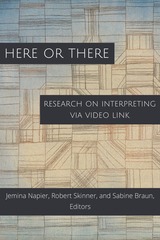 Here or There: Research on Interpreting via Video Link
Jemina Napier
Gallaudet University Press, 2018 The field of sign language interpreting is undergoing an exponential increase in the delivery of services through remote and video technologies. The nature of these technologies challenges established notions of interpreting as a situated, communicative event and of the interpreter as a participant. As a result, new perspectives and research are necessary for interpreters to thrive in this environment. This volume fills that gap and features interdisciplinary explorations of remote interpreting from spoken and signed language interpreting scholars who examine various issues from linguistic, sociological, physiological, and environmental perspectives.
Here or There presents cutting edge, empirical research that informs the professional practice of remote interpreting, whether it be video relay service, video conference, or video remote interpreting. The research is augmented by the perspectives of stakeholders and deaf consumers on the quality of the interpreted work. Among the topics covered are professional attitudes and motivations, interpreting in specific contexts, and adaptation strategies. The contributors also address potential implications for relying on remote interpreting, discuss remote interpreter education, and offer recommendations for service providers.
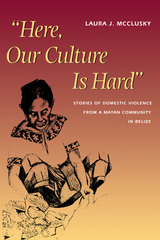 Here, Our Culture Is Hard: Stories of Domestic Violence from a Mayan Community in Belize
By Laura McClusky
University of Texas Press, 2001 Marriage among the Maya of Central America is a model of complementarity between a man and a woman. This union demands mutual respect and mutual service. Yet some husbands beat their wives. In this pioneering book, Laura McClusky examines the lives of several Mopan Maya women in Belize. Using engaging ethnographic narratives and a highly accessible analysis of the lives that have unfolded before her, McClusky explores Mayan women's strategies for enduring, escaping, and avoiding abuse. Factors such as gender, age inequalities, marriage patterns, family structure, educational opportunities, and economic development all play a role in either preventing or contributing to domestic violence in the village. McClusky argues that using narrative ethnography, instead of cold statistics or dehumanized theoretical models, helps to keep the focus on people, "rehumanizing" our understanding of violence. This highly accessible book brings to the social sciences new ways of thinking about, representing, and studying abuse, marriage, death, gender roles, and violence.
 “Here, the People Rule”: A Constitutional Populist Manifesto
Richard D. Parker
Harvard University Press, 1994 Democracy—its aspirations, its dangers—is what, most fundamentally, our Constitution is about. The question, Richard Parker argues in this powerful book, is how to imagine our democracy. Provocative in style and substance, this manifesto challenges orthodoxies of constitutional legal studies, particularly the idea that constitutionalism and populist democracy stand opposed. Parker presents a populist argument. He contends that the mission of constitutional law should be to promote, not limit, the expression of ordinary political energy—thus to extend, rather than constrain, majority rule.
At the root of the matter, Parker finds a question of “sensibility”—assumptions and attitudes about the political energy of ordinary people. He approaches this sensibility in a novel way, through a work of fiction about politics, Thomas Mann’s Mario and the Magician. Offering two “takes” on the story, Parker shows how it evokes—and elucidates—our deepest, most problematic attitudes about popular political energy in our own democracy. He goes on to elaborate these attitudes within our practice of constitutional argument. This is a book about the people, and for the people, a reimagination of constitutional law’s populist potential. It will disorient—then reorient—the thinking of everyone who is concerned about democracy and the Constitution.
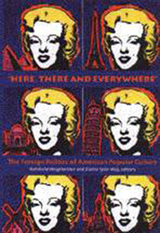 “Here, There and Everywhere”: The Foreign Politics of American Popular Culture
Edited by Reinhold Wagnleitner and Elaine Tyler May
University Press of New England, 2000 American popular culture is everywhere. All over the world, kids wear Levis, radios blare rap songs, television stations broadcast American programs, and Hollywood movies draw huge audiences. Does this massive "Americanization" of the globe represent some sinister form of cultural imperialism? Alternatively, do audiences and consumers in the importing countries accept American movies, music, and television programs because they match local trends and desires? Do receiving communities transform these products to fit their own needs, to the point where they are no longer "American" but in fact have become indigenous? And who is in charge of all of this, anyway? Is it Wall Street, Madison Avenue, the Pentagon, the CIA, or Hollywood? Is it, at least partly, local economic and political elites in the receiving countries? Or is it simply "the people," nationalities be damned? These are the questions at the heart of the essays collected in "Here, There and Everywhere." Essays by 23 authors from 14 countries cover topics from Japan to Spain, Nigeria to Russia, and from West Germany to East Germany (a distance that seemed to be further than travelling to the moon, yet was covered by rock 'n' roll most easily, despite the wall). In five sections, they examine the historical background, the impact of Hollywood, the power of American popular music from jazz to rock 'n' roll and rap, and the popularity of as well as resistance to American popular culture in particular countries.
Here There Was Once a Country
Vénus Khoury-Ghata
Oberlin College Press, 2001 Lebanese writer Vénus Khoury-Ghata, who lives in France and has won many of France’s major literary prizes, blends French surrealism with Arabic poetry’s communal narrative mode in three stunning poetic sequences. Here brilliantly translated from the French by poet Marilyn Hacker, the English-speaking reader has rare insight into another world, another dimension.
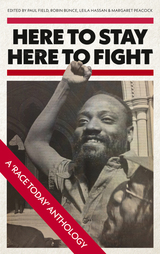 Here to Stay, Here to Fight: A Race Today Anthology
Paul Field
Pluto Press, 2019 From 1973 to 1988, Race Today, the journal of the revolutionary Race Today Collective was at the epicentre of the struggle for racial justice in Britain. Placing race, sex and social class at the core of its analysis, it featured in its articles and pamphlets contributions from some of the leading writers and activists of the time: C. L. R. James, Darcus Howe, Linton Kwesi Johnson, Toni Morrison, Maya Angelou, Walter Rodney, Bobby Sands, Farrukh Dhondy and Mala Sen and many more. Here to Stay, Here to Fight, draws together many of these key articles and extracts into an impressive collection - the first book-length anthology of its kind - rescuing many contributions from the obscurity of inaccessible archives. Framing the original contributions, there is a general introduction, which provides an overview of Race Today's 15-year history, section introductions providing context for each extract, written by writers and activists associated with the Collective, and a concluding section exploring the legacy of Race Today in contemporary social movements and debates around race, gender and class.
 Here to Stay, Here to Fight: A Race Today Anthology
Paul Field
Pluto Press, 2019 From 1973 to 1988, Race Today, the journal of the revolutionary Race Today Collective was at the epicentre of the struggle for racial justice in Britain. Placing race, sex and social class at the core of its analysis, it featured in its articles and pamphlets contributions from some of the leading writers and activists of the time: C. L. R. James, Darcus Howe, Linton Kwesi Johnson, Toni Morrison, Maya Angelou, Walter Rodney, Bobby Sands, Farrukh Dhondy and Mala Sen and many more. Here to Stay, Here to Fight, draws together many of these key articles and extracts into an impressive collection - the first book-length anthology of its kind - rescuing many contributions from the obscurity of inaccessible archives. Framing the original contributions, there is a general introduction, which provides an overview of Race Today's 15-year history, section introductions providing context for each extract, written by writers and activists associated with the Collective, and a concluding section exploring the legacy of Race Today in contemporary social movements and debates around race, gender and class.
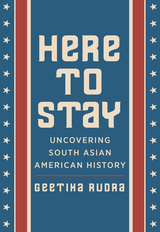 Here to Stay: Uncovering South Asian American History
Geetika Rudra
Rutgers University Press, 2022 Today, South Asians are a rapidly growing demographic in the United States, comprising nearly 2 percent of the population. But there was a time in the not-too-distant past when the United States was far less hospitable to South Asian immigrants. In fact, until 1952, only white immigrants could become naturalized American citizens. Yet in the first half of the twentieth century, many states still had thriving communities of South Asians.
In Here to Stay, Geetika Rudra, a second-generation Indian immigrant and American history buff, takes readers on a journey across the country to unearth the little-known histories of earlier generations of South Asian Americans. She visits storied sites such as Oregon’s “Hindoo Alley,” home to many lumber workers at the turn of the century, and Angel Island, California’s immigration hub. She also introduces readers to such inspiring figures as Bhagat Singh Thind, an immigrant who had enlisted in the U.S. Army to serve his adopted country in World War I, but who was later denied citizenship and took his case all the way to the U.S. Supreme Court. In turns both serious and joyful, this book vividly reveals how South Asians have always been a vital part of the American tapestry.
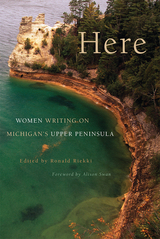 Here: Women Writing on Michigan's Upper Peninsula
Ronald Riekki
Michigan State University Press, 2015 How does place impact prose? Here: Women Writing on Michigan’s Upper Peninsula explores that very question, drawing on the work of Upper Peninsula authors past and present to create a vibrant kaleidoscope of voices and experiences. Bame-wa-wa-ge-zhik-aquay, Janet Loxley Lewis, Lorine Niedecker, Catie Rosemurgy, and thirty-one other authors important to the region appear in this exceptional and diverse volume. In poetry (“Spring” by Beverly Matherne, “For Those Who Dream of Cranes” by Elinor Benedict, and “Skin on Skin” by Sally Brunk), short fiction (“North Country” by Roxane Gay, “For the Healing of All Women” by April Lindala, and “Winter Mines” by Sharon Dilworth), and novel excerpts (from Once on This Island by Gloria Whelan, South of Superior by Ellen Airgood, and Dandelion Cottage by Carroll Watson Rankin), the unique character of the U.P. materializes on the page. The book also shines a spotlight on powerful emerging voices such as Lisa Fay Coutley, Charmi Keranen, and Saara Myrene Raappana. The first of its kind, this is an anthology for all seasons, an homage to the rich literary heritage of the region.
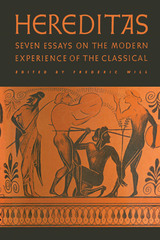 Hereditas: Seven Essays on the Modern Experience of the Classical
Edited with an introduction by Frederic Will
University of Texas Press, 1964 Is Ancient Greece still meaningful to the twenty-first-century world? The vitality of the classical tradition, which has been a long-enduring and important element in our culture, is the concern of the seven scholars who in this book present their answers to this question. In various ways their essays support editor Frederic Will's statement that the "complex and mature group of awarenesses" embodied in the classical tradition still help to maintain the continuity of human culture, thus sharing in the unbroken process of developing a Western civilization. These awarenesses are not self-perpetuating but must be sustained by the guardians of tradition—schools, literary creators and critics, libraries, and scholars. In this book, particular attention is devoted to the literary creators. In discussing the impact of Greek myth, Greek literature, and Greek philosophy on modern writers, the present essayists try to determine how alive Greek classical culture is today, how meaningful it is, and how it can be perpetuated. Through their presentations in these seven essays, the contributors prove that the tradition does not suffer from lack of able guardians. These studies in the interpretation of literature and thought afford stimulating evidence that the classical tradition is still alive in our modern age.
 Heredity and Hope: The Case for Genetic Screening
Ruth Schwartz Cowan
Harvard University Press, 2008 The secrets locked in our genes are being revealed, and we find ourselves both enthused and frightened about what that portends. We look forward to curing disease and alleviating suffering—for our children as well as for ourselves—but we also worry about delving too deeply into the double helix. Abuses perpetrated by eugenicists—from involuntary sterilization to murder—continue to taint our feelings about genetic screening.
Yet, as Ruth Schwartz Cowan reveals, modern genetic screening has been practiced since 1960, benefiting millions of women and children all over the world. She persuasively argues that new forms of screening—prenatal, newborn, and carrier testing—are both morally right and politically acceptable. Medical genetics, built on the desire of parents and physicians to reduce suffering and increase personal freedom, not on the desire to “improve the human race,” is in fact an entirely different enterprise from eugenics.
Cowan’s narrative moves from an account of the interwoven histories of genetics and eugenics in the first half of the twentieth century, to the development of new forms of genetic screening after mid-century. It includes illuminating chapters on the often misunderstood testing programs for sickle cell anemia, and on the world’s only mandated premarital screening programs, both of them on the island of Cyprus.
Neither minimizing the difficulty of the choices that modern genetics has created for us nor fearing them, Cowan bravely and compassionately argues that we can improve the quality of our own lives and the lives of our children by using the modern science and technology of genetic screening responsibly.
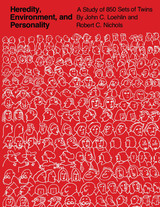 Heredity, Environment, and Personality: A Study of 850 Sets of Twins
By John C. Loehlin and Robert C. Nichols
University of Texas Press, 1976 This volume reports on a study of 850 pairs of twins who were tested to determine the influence of heredity and environment on individual differences in personality, ability, and interests. It presents the background, research design, and procedures of the study, a complete tabulation of the test results, and the authors’ extensive analysis of their findings. Based on one of the largest studies of twin behavior conducted in the twentieth century, the book challenges a number of traditional beliefs about genetic and environmental contributions to personality development. The subjects were chosen from participants in the National Merit Scholarship Qualifying Test of 1962 and were mailed a battery of personality and interest questionnaires. In addition, parents of the twins were sent questionnaires asking about the twins’ early experiences. A similar sample of nontwin students who had taken the merit exam provided a comparison group. The questions investigated included how twins are similar to or different from nontwins, how identical twins are similar to or different from fraternal twins, how the personalities and interests of twins reflect genetic factors, how the personalities and interests of twins reflect early environmental factors, and what implications these questions have for the general issue of how heredity and environment influence the development of psychological characteristics. In attempting to answer these questions, the authors shed light on the importance of both genes and environment and form the basis for different approaches in behavior genetic research.
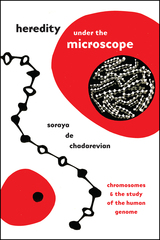 Heredity under the Microscope: Chromosomes and the Study of the Human Genome
Soraya de Chadarevian
University of Chicago Press, 2020 By focusing on chromosomes, Heredity under the Microscope offers a new history of postwar human genetics. Today chromosomes are understood as macromolecular assemblies and are analyzed with a variety of molecular techniques. Yet for much of the twentieth century, researchers studied chromosomes by looking through a microscope. Unlike any other technique, chromosome analysis offered a direct glimpse of the complete human genome, opening up seemingly endless possibilities for observation and intervention. Critics, however, countered that visual evidence was not enough and pointed to the need to understand the molecular mechanisms.
Telling this history in full for the first time, Soraya de Chadarevian argues that the often bewildering variety of observations made under the microscope were central to the study of human genetics. Making space for microscope-based practices alongside molecular approaches, de Chadarevian analyzes the close connections between genetics and an array of scientific, medical, ethical, legal, and policy concerns in the atomic age. By exploring the visual evidence provided by chromosome research in the context of postwar biology and medicine, Heredity under the Microscope sheds new light on the cultural history of the human genome.
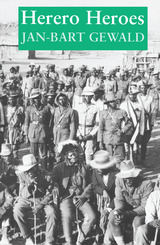 Herero Heroes: A Socio-Political History of the Herero of Namibia, 1890–1923
Jan-Bart Gewald
Ohio University Press, 1998 The Herero-German war led to the destruction of Herero society. Yet Herero society reemerged, reorganizing itself around the structures and beliefs of the German colonial army and Rhenish missionary activity. This book describes the manner in which the Herero of Namibia struggled to maintain control over their own freedom in the face of advancing German colonialism. Taking advantage of the South AFrican invasion in of Namibia in World War One the Herero established themselves in areas of their own choosing. The effective reoccupation of land by the Herero forced the new colonial state, anxious to maintain peace and cut costs, to come to terms with the existence of Herero society. The study ends in 1923 when the death and funeral of Samuel Maherero — first paramount of the Herero and then resistance leader — was the catalyst that brought the disparate groups of Herero together to establish a single unitary Herero identity.
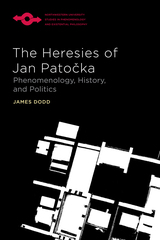 The Heresies of Jan Patocka: Phenomenology, History, and Politics
James Dodd
Northwestern University Press, 2023 A nuanced reflection on the meaning and resonance of Patočka’s philosophy
Foregrounding the turbulent political and intellectual scene in Czechoslovakia following the Prague Spring in 1968, James Dodd explores the unity of philosophy, history, and politics in Jan Patočka’s life and legacy. Dodd presents Patočka as an essential philosopher of modern concepts—such as freedom, subjectivity, and history—and also as an interpreter of prominent thinkers such as Husserl and Heidegger.
Dodd outlines the phenomenology that Patočka, as a late pupil of Husserl and Heidegger, crafted in response to the classical model before turning to his philosophy of history, which was oriented around the problem of Europe and the care for the soul. Finally, Dodd examines Patočka’s role as a dissident intellectual and one of the principal voices of the Charter 77 human rights movement until his death in March 1977. By situating Patočka’s thought in relation to classical phenomenology and to the political and historical conditions of Central Europe, Dodd illuminates the enduring impact of this key thinker of the twentieth century.
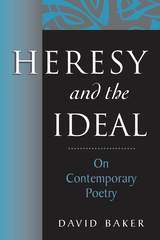 Heresy and the Ideal: On Contemporary Poetry
David Baker
University of Arkansas Press, 2000 Heresy and the Ideal is a powerful collection of essays and essay-reviews which David Baker wrote and published throughout the 1990s. He thoroughly discusses the work of more than fifty contemporary poets, including T. R. Hummer, Miller Williams, Albert Goldbarth, Jane Kenyon, Galway Kinnell, Charles Simic, Ted Kooser, David Wojahn, Alice Fulton, Louise Glück, and Charles Wright. He takes as his models some of the great critical books of the past three decades, especially Richard Howard's masterpiece, Alone with America, and Helen Vendler's Part of Nature, Part of Us, as well as other works by Laurence Lieberman, Majorie Perloff, Carol Muske, and Mary Kinzie. At its center, Heresy and the Ideal is based on Baker's sense of Romantic poetics, especially on how contemporary poets have applied, altered, or rejected certain Romantic principles. He uses the Romantic trope to measure the tension between passion and reason and between the problems of literary transcendence and the obligations of social engagement. The result is a welcome variety of enlightening, practical criticism devoid of exclusionary jargon and based on persistent attention to an individual poem or book of poems. Utilizing the essay-review, Baker considers each poet's purposes and achievements. He blends the strategies of explanation, analysis, and evaluation, clarifying each poet's work instead of complaining or condemning. Heresy and the Ideal addresses a wide and diverse range of contemporary poetry and should take a deserved place both as a critical introduction to the work of many important poets and as a work that documents and explores the shape of poetry at the end of the millennium.
|
|
